




In November 2001, Peterborough Cathedral suffered a devastating blow when fire rendered their famous Hill/Harrison pipe organ unplayable.
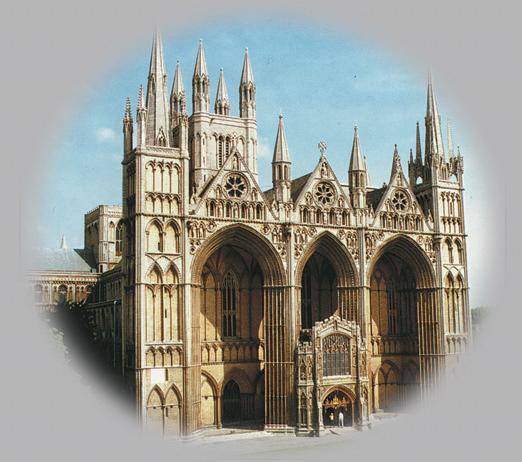
Makin Organs quickly answered the emergency call to supply an organ capable of accompanying Cathedral services. Christopher Gower, former Organist and Master of the Choristers said, “Immediately following the fire we were very quickly supplied with an organ which proved to be a very effective accompanimental instrument for all the Christmas services.
Its larger replacement, which we will retain for at least two years, has a wide variety of distinctive registers and is more than capable of supporting the singing of a large congregation in the nave.”
For details about Makin Church Organs and a FREE demonstration CD call 01706 888100
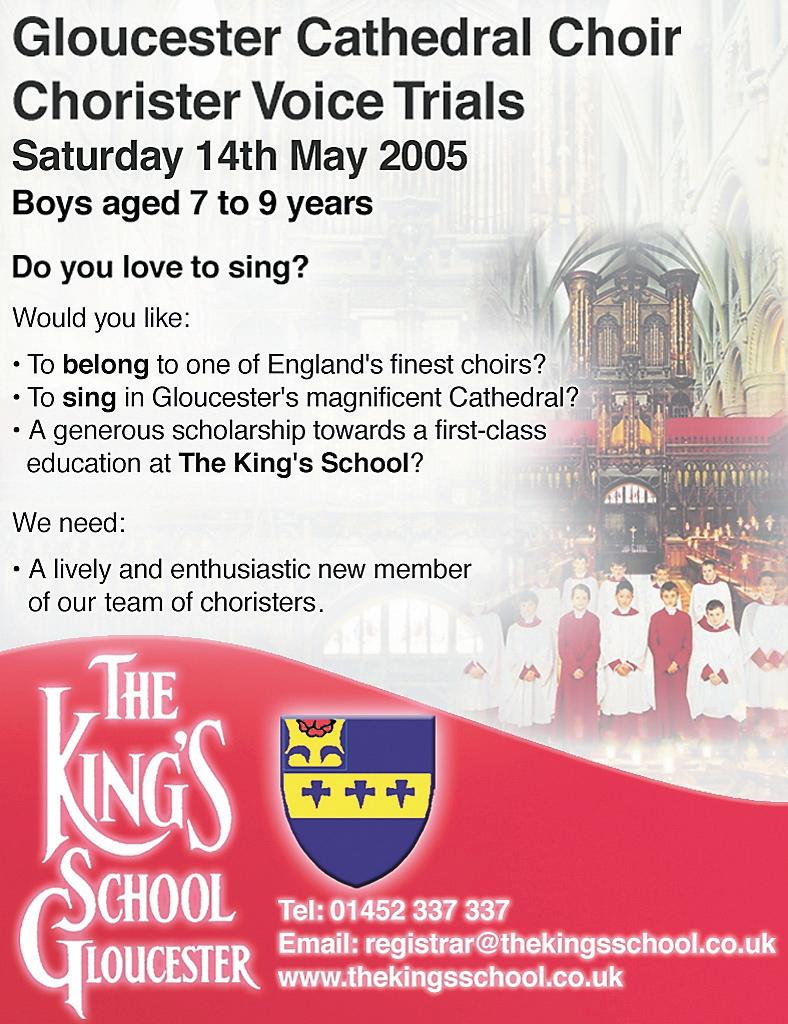


www.makinorgans.co.uk
Makin Organs Ltd, Sovereign House, 30 Manchester Road, Shaw, OLDHAMOL2 7DE Tel: 01706 888100 E-mail: sales@makinorgans.co.uk

PAUL’S CATHEDRAL
TUESDAY 28 JUNE,8.00PM
Soweto Gospel Choir
TUEDAY 5 JULY,8.00PM
Mark Elder conducts The Hallé
WEDNESDAY 13 JULY,8.00PM
Sir Colin Davis conducts the London Symphony Orchestra & Chorus
For tickets call the Barbican Box Office on 0845 120 7502 Or visit www.colf.org
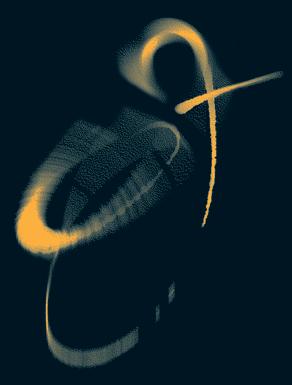
Cathedral Music is produced twice a year, in May and November
ISSN 1363-6960 MAY 2005
Editor Andrew Palmer 21 Belle Vue Terrace Ripon North Yorkshire HG4 2QS ajpalmer@lineone.net
Assistant Editor Roger Tucker
Editorial Advisers David Flood & Roger Overend
Production Manager Graham Hermon
FCM e-mail address FCM@netcomuk.co.uk
Website Address www.fcm.org.uk
The views expressed in articles are those of the contributor and do not necessarily represent any official policy of the Friends of Cathedral Music.
Likewise, advertisements are printed in good faith. Their inclusion does not imply endorsement by the FCM. All communications regarding advertising should be addressed to:-
Roger Tucker 16 Rodenhurst Road LONDON SW4 8AR Tel:0208 674 4916 roger@cathedralmusic.supanet.com
inQuire Editor: Richard Osmond 10 Hazel Grove, Badger Farm, Winchester, Hants SO22 4PQ Tel/Fax:01962 850818
Every effort has been made to determine copyright on illustrations used. We apologise to any individuals we have inadvertently missed. The Editor would be glad to correct any omissions.
Designed and Produced by: Marketing & Promotions
The Old Pottery, Fulneck, Pudsey, Leeds, West Yorks LS28 8NT Tel: 0113 255 6866 info@mypec.co.uk
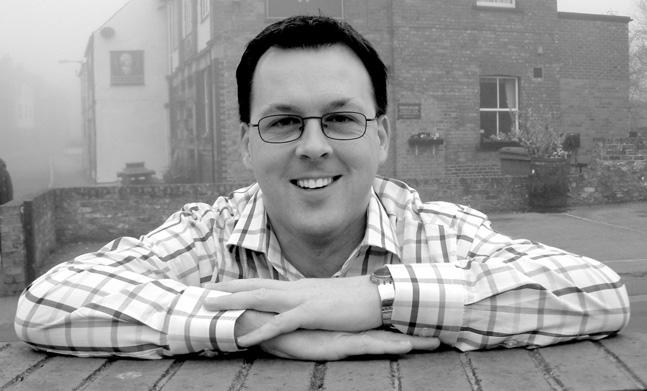
We have just lost one of FCM’s most popular figures, Vice-President Tony Harvey, who died suddenly at his Lincoln home in early March aged 71. He was a founder member of the organisation, having responded to Ronald Sibthorp’s appeal in the papers asking for people interested in forming an organisation to support cathedral choirs to get in contact. As a result of this forty people came to a meeting at St Bride’s, Fleet Street and this led to the birth of FCM. In the very early years Canon Sibthorp himself devised and organised the visits to cathedrals which he called Gatherings. Bearing in mind his heavy workload looking after the music at Truro Cathedral, where he was both Succentor and Priest Vicar, it is understandable he would look for a talented younger enthusiast to take on the job of Organising Secretary for Gatherings – and Tony was his man. Sibthorp, recognised Tony’s commitment and talent for encouraging people to join the cause and on the back of that, persuading cathedrals to welcome us. It is
interesting to note that Tony is one of the three officers to be mentioned by our Founder in his Memoirs of a Minor Canon His talent for organisation really flourished under the auspices of FCM; according to Sibthorp, the Gatherings had come ‘to resemble festivals, organised on a grand scale, with members attending en masse from far and wide.’ Later as Cathedrals Officer he became the best known face of FCM, visiting each cathedral in turn. Although towards the end of his life he was unhappy with FCM’s evenhanded attitude towards the increasing number of girls singing in cathedrals, he nevertheless tacitly accepted the policy by remaining an active envoy and consenting to become one of our vice-presidents and subsequently, even standing for reelection to the Council. Thus remaining a very powerful voice for us. Any organisation would be envious of a vice-president who was so well loved – the challenge now is to find someone to continue Tony’s ambassadorial role.
Praise for Hereford and King’s College, Cambridge.
If like me you listen regularly to Choral Evensong, you couldn’t help but notice the flow of the service from Hereford Cathedral on March 16th: as the Introit ended there was a brief pause before the opening of the Preces was heard. It was not until they had finished that Dean Michael Tavinor said a brief word of welcome. This was in contrast to the increasing tendency lately to jump in too soon with a welcome to listeners. This tends to shatter the wonderful atmosphere created by the opening music and also the feeling that we are eavesdropping. Many people find this an intrusion. This broadcast came the closest for a long
time to avoiding all this. The tempi of the psalms, canticles and anthems were all well judged. Congratulations to Geraint Bowen and the other musicians and also to the dedicated production team from BBC Religion. It’s a wonderful record: the longest running outside broadcast in the history of radio, which next year celebrates its 80th anniversary. Finally, I must applaud the decision to broadcast that additional Evensong on Easter Sunday afternoon. It was part of the special Easter at King’s Festival, a total of six wonderful broadcasts taking us from the final days of Passiontide through to the glories of Easter Day, which represented a huge effort from the Director of Music at King’s, Stephen Cleobury. Could we at least hope the Easter Sunday Choral Evensong becomes an annual feature?
Recently I went to Evensong on the 15th evening and had what can only be described as an uplifting experience. I sat through Psalm 78 and heard some wonderful chants ending with Dakers fine example, written to accompany the words of the final section. I am normally somewhat apprehensive because of the trend to sing the whole psalm to chants either by past or present directors of music. Now, there is nothing wrong with the musicality of these chants by great practitioners of cathedral music, like Sanders or Statham, but it could be seen as an indulgence. Peter Kirk in the previous edition of CM pointed out how many chants he has collected. Let’s be grateful for his efforts which should ensure the preservation of some of the great chants which otherwise could become extinct.
Sibthorp recognised Tony’scommitment
and talent for encouragingpeople
to join the cause.’
It was with trepidation that I went recently after a break of many years to an unaccompanied Choral Evensong at King’s College Chapel, Cambridge. Would I be disappointed? Was this living musical legend still intact, or was it now trading on past glories? I need not have worried. Hundreds queued to go into this normal daily service in the depths of November, and it was easy to see why. The beauty of the delicate sound wafted up to the vaulting, complementing perfectly the beauty of the Chapel and the Prayer Book liturgy.
The English cathedral music tradition is one of the wonders of the Western world, a precious jewel that must not be lost. It is preserved not only at King’s but also at several other Oxbridge colleges, at St. Paul’s and the Abbey, as well as a number of major cathedral foundations.
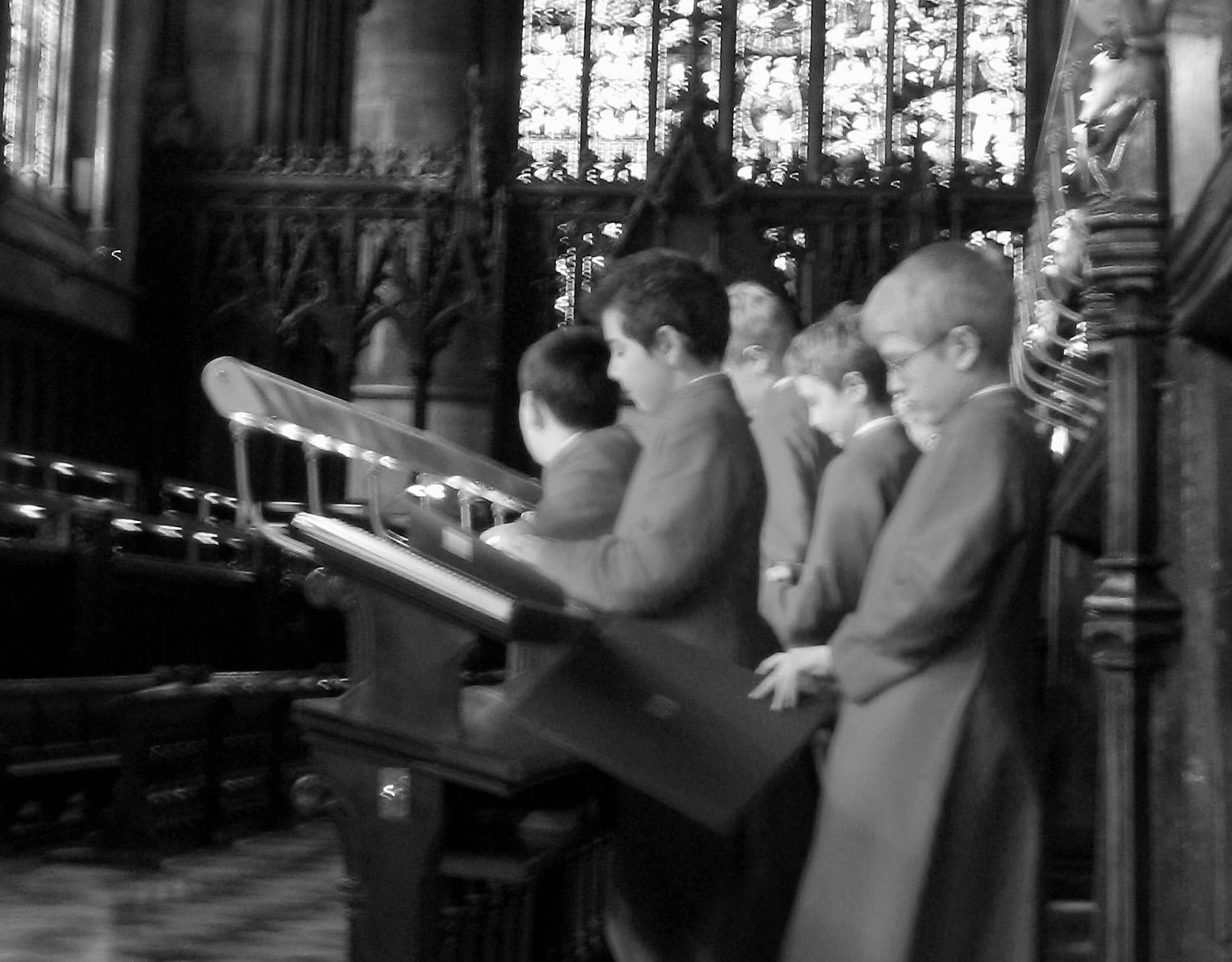
But what of the music in the general run of provincial cathedrals? It is not at all clear that many of them are justified in sheltering under the umbrella of excellence put up by the major foundations. It is not that their music is poor, only that it fails to inspire, to send the proverbial shiver down the spine, to send the worshipper out walking on air, having had a foretaste of the joys of heaven.
Such a statement will be rubbished by many involved with cathedrals. So often we are told that the cathedral music scene is healthier than it has been for many years. If by this is meant that there is massive activity on the cathedral musical front the claim is hard to gainsay. Millions of pounds are poured into organs, choral scholarships, rehearsal facilities, and recordings, while directors of music, ➤
‘But what of the music in the general run of provincial cathedrals? It is not that their music is poor. Only that it fails to inspire, to send the proverbial shiver down the spine, to send the worshipper out walking on air. ’
Michael Higgins
organists, assistant organists, and organ scholars multiply by the minute. Cathedral departments of music spring up with ever more complicated infrastructure, and choirs tour the United States, Australia, and all points between. Yet all this activity can be smoke and mirrors.
The picture that comes to mind is of the tennis player who walks onto the court with all the right equipment: the best racquet, expensive clothing and shoes and everything that money can provide. Yet he is beaten soundly by the player at the other end who has none of these luxuries. As a lifelong lover of church music it is with a heavy heart I contend that the music in many cathedrals, despite their grandeur and talk of excellence, is frequently little better than that in some major parish churches.In the latter, facilities leave much to be desired and rehearsal time is short, but when their choirs visit cathedrals the results can sometimes be as inspiring as those produced by the resident singers.
These things should not be.
Why are so many ‘average’ cathedrals able to hide so successfully under the musical umbrella of the better known foundations? There are four simple answers to this question, all of which will be unwelcome to the cognoscenti of the cathedral world.
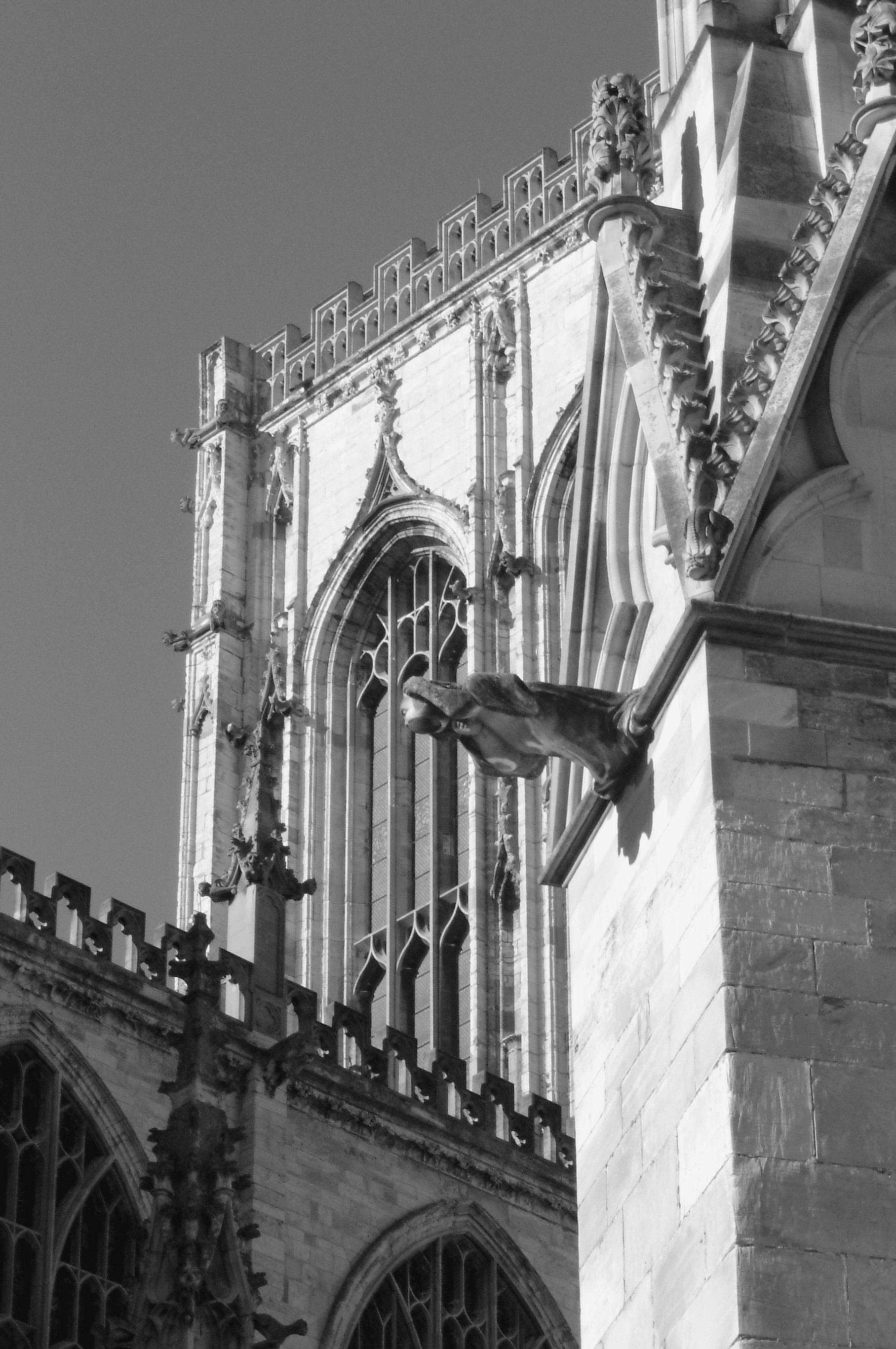
First, cathedral congregations absorbed in worship, are easily satisfied with the musical offerings presented to them. Many will say that they worship at a cathedral ‘because of the music’ and are happy when an attractive and large robed choir processes in candlelight through a stunning building and the top notes of a few treble voices hit the air waves. Often they will say “Wasn’t the choir wonderful”, when the singing was, to say the least, mediocre. To the average member of the congregation it is all ‘lovely’, and the word ‘excellence’ is not in the vocabulary. I would estimate that only something like 5% of any cathedral congregation is musically discerning, and even they are too charitable to
express views contrary to popular opinion.
Second, many provincial cathedrals nurture in-bred communities, where there is a complacency that believes everything is perfect. Anyone who has the impudence to suggest otherwise is thought to be talking out of his or her rear, and will be quickly told that praise and encouragement should be the order of the day. To even hint that the cathedral music is anything other than totally inspiring is dismissed as nothing less than impertinence. It would be nonsense to suggest that cathedral music in our own day has not improved beyond all recognition since the 19th century, when standards were at a low ebb. At the same time there is still a glimmer of truth in the words of the great S.S.Wesley:
‘Painful and dangerous is the position of a young musician who,after acquiring great knowledge of his art in the metropolis, joins a country cathedral. At first he
‘It would be nonsense to suggest that cathedral music in our own day has not improved beyond all recognition since the 19th century. ’
can scarcely believe that the mass of error and inferiority in which he has to participate is habitual and irremediable. He thinks he will reform matters, gently, without giving offence; but he soon discovers that it is his approbation and not his advice that is needed. The Choir is ‘the best in all England’ (such being the belief at most cathedrals)….’
This complacency can be shared by those who run cathedral choirs. A great Director of Music will always be constantly assessing standards, and will never be satisfied until that elusive word ‘excellence’ is reached. I well recall telling Christopher Robinson, then Director of Music at St. John’s College, Cambridge, how much I had enjoyed the superb singing of his Choir. He modestly replied “Ah yes, but if we had been able to have just a few more minutes of rehearsal it would have been even better.” It is a pity this frame of mind is not shared by more directors of music and their choirs. Too often I have heard it said after undistinguished singing, “Weren’t we wonderful. We really were on top form today”. The truth is that cathedral choirs can surround themselves with mystique and glory and it is a bold person who tries to move beyond it. The line between healthy self-belief and self-delusion is a narrow one and cathedral choirs have been known to cross it!
Third, cathedral clergy must play some part in the scene. Not all of them are aware of the importance of musical standards and providing there are no obvious wrong notes and the singing is adequate they are satisfied. I can even recall one canon who used to take every opportunity of making it clear he did not believe in ‘excellence’, which he thought smacked of elitism. “We are here to worship God, not achieve musical perfection” was his theme, echoed I suspect by other colleagues. A significant number of cathedral clergy take pride in saying “Music is not my scene; I’m not sure I’m qualified to make any judgement”; yet as members of Chapter they are responsible for the state of the music.
Fourth, distinguished musicians from major cathedral foundations who have fairly shrewd ideas about the health of music in some less exalted places are always too charitable and conservative to comment. Keeping your head below the parapet is always a safe and comfortable course. In any case, it is a closed profession, and ‘dog does not bite dog.’ In at least two cases in recent years when con-
cern has led to one of these ‘senior statesmen’ being hired to assess the music of a particular cathedral the result has been a ‘non-event’.
It is a strong charge to allege that the choirs of a significant number of cathedrals produce music that is uninspiring, mediocre, and plain boring. Is not this the subjective judgement of a musical layman, to be balanced against the views of countless others who would disagree? Not so. No particular musical expertise or technical skill is necessary to recognise when music is being sung or played simply as notes on a page. Music that is to uplift, move, and touch the heart must be far more; it must be interpreted with feeling and emotion. Even a musical layman can formulate objective criteria by which to measure these things, and over my years spent as a Dean, I put together the Ten Commandments of Cathedral Music, to be worked at in partnership by the Chapter and muscians:
Thou shalt be musically sensitive. A member of a cathedral congregation said to the Dean, ‘Ask your Director of Music what kind of mood or emotion (s)he is intending to create through this anthem/psalm/or hymn.’ So often the matter appears to have been given no thought, and the result is – nothing. Music is there to help us to joy, sorrow, reflection, mystery, and the countless other moods of worship; it must be far more than simply a performance. Music has its highs and lows, but how many cathedral choirs reproduce them with telling effect? A lot appear unable to sing pianissimo, fortissimo degenerates into shrieking on the top notes, while for a good deal of the time it can be hard to distinguish between the two. And how many times has the mood of a quiet and
reflective Choral Evensong been utterly shattered by some contemporary cacophony on full organ as the player demonstrates his technical ability and we hold on to our seats.
Thou shalt pay attention to balance and tone. As soon as a choir strikes up, you know. Is this a choir where all are singing together to produce that delicate unified beauty that pierces the soul, or is this merely a case of a lot of people singing at the same time? Too often single voices predominate, or one part can be heard drowning the rest; tone and balance have gone out of the window, if they ever were in the room.
Thou shalt pay attention to articulation. Many times in various cathedrals I have shut my eyes and tried to listen to the words. Are they singing in English, French, German, or Latin? Sometimes it is impossible to know, because the articulation is so poor. Attention to diction is crucial if the words in worship are to carry their meaning, but it can be neglected.
Thou shalt pay attention to the meaning of the words. Only last week I was in a cathedral where the ‘still, small voice’ line in a famous hymn was played flat out on full organ, as indeed most of the preceding verses had been, with no attempt to interpret their meaning. Drawing out the words of hymns, psalms, and anthems is one of the basic tasks of the church musician, yet in some cathedrals it is barely attempted. I have frequently heard – in a cathedral – every verse of a long psalm sung in exactly the same way, the ultimate recipe for a boring Choral Evensong.
Thou shalt cultivate ‘attack’. Incisive singing, where ‘attack’ and verve is the order of the day is the ideal, and is again often missing. When a choir opens up at ➤
‘Music is there to help us to joy, sorrow, reflection, mystery, and the countless other moods of worship; it must be far more than simply a performance. Music has its highs and lows, but how many cathedral choirs reproduce them with telling effect?
Evensong with ‘O Lord, open thou our lips’ it can sound as if they have just woken up, and need to get up to speed. In too many services there is a lack of life and energy; the electricity does not seem to have been switched on.
Thou shalt cultivate rhythm and phrasing. Too often the singing is accurate but ‘square’, unimaginative, and dreary. This is because rhythm and phrasing, particularly in hymns and psalms, can be absent. Everything is sung in the same dull, soulless way, with hardly a spark of life.
Thou shalt exercise care over repertoire. Cathedral Directors of Music love to do justice to the wide repertoire open to them, from Tudor music right down to the present day. Yet too wide a variety too close together can tax the choir beyond its range, and result in shoddy singing that does harm. Care should be taken to match realistically the choir’s ability to the music chosen. Simple music sung outstandingly well is always more moving than difficult music that just makes the grade.
Thou shalt study the liturgy. The aim of all cathedral worship is to achieve a perfect unity between word, sacrament, and music, combining the whole in a perfect blend to produce that excellence for which cathedrals strive. Too often cathedral music lists do not give evidence that the musicians are working on the same wavelength as the clergy, with music chosen that does not ‘fit’ the themes of worship. This tendency can indicate a wider difficulty, where the cathedral music department moves out on a limb, and behaves as if it was Blankchester Cathedral Music PLC, an independent entity from the cathedral of which it is but a part. When this happens it is a sure indication that the spiritual goals for which the cathedral exists are not shared, and music has become an end in itself.
Thou shalt help the Choir to study the liturgy. If a cathedral choir is to play its part in worship it must understand that worship, the faith which lies behind it, and the meaning of the music it sings. This means a regular slot being given to the spiritual education of the choir, alongside rehearsals. This education may be given by the Director of Music himself or one of the clergy; but if it is neglected the music itself will not reach the heights for which it should be aiming.
Thou shalt pay attention to the Choir’s appearance. Many years ago, while working in parish churches, I coined the phrase ‘As a choir walks, so it sings.’ A choir that can process as a welldrilled regiment, heads held high and precisely spaced, is likely to sing well when it reaches the stalls. A choir that ambles in, with an uncanny resemblance to a flock of sheep, will probably turn out to be musically sloppy. The choir which is alert in the stalls, eyes on the conductor, with a uniform stance which is efficient and attractive is unlikely to disappoint. But a choir that is unable to sit down and stand up together – a remarkably common problem – is unlikely to be able to sing together. Likewise, dirty shoes and unkempt cassocks carry a message.
Even where these commandments are broken in large numbers, a choir may still sing passable music in a manner that will not provoke undue comment. But it will never reach that degree of excellence that the cathedral music tradition exists to serve. Nor will it inspire the worship or move a congregation as it should. More seriously, it is not giving value for money, a fact that should cause anxiety to chapters. Millions of pounds have been raised in recent years to support cathedral music, and this money has been given to fund excellence and promote the jewel that is English church music. If this tendency to mediocrity
Our recent work has included:
LICHFIELD CATHEDRAL
Reconstruction of Hill organ with 13-stop nave division.
ST DAVIDS CATHEDRAL
New organ of 54 stops based on Father Willis pipework.
RIPON CATHEDRAL
New mobile nave console.
ELY CATHEDRAL
Restoration of H&H organ, with eight new stops.
EXETER CATHEDRAL
Minstrel organ of eight stops and new 32ft reed.
ST GEORGE’S CHAPEL, WINDSOR CASTLE
Clean and overhaul.
PETERBOROUGH CATHEDRAL
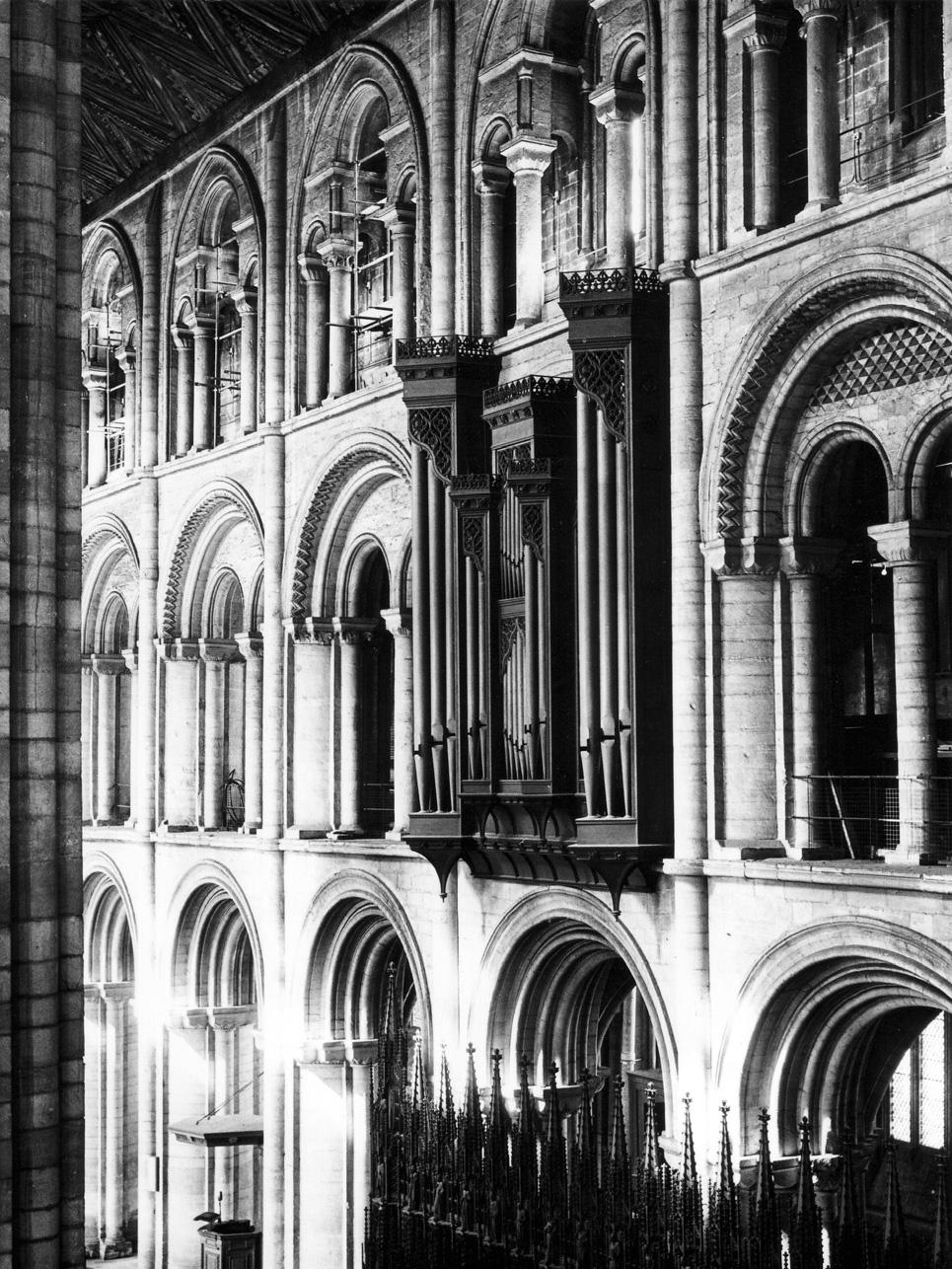
Restoration of Hill organ following the fire.
LEICESTER CATHEDRAL
Major renovation with console restored to original style.
HEREFORD CATHEDRAL
Overhaul of Willis organ with new console mechanism.
ST JOHN’S ROAD, MEADOWFIELD, DURHAM DH7 8YH Telephone 0191 378 2222 Fax 0191 378 3388
e-mail h.h@btinternet.com www.harrison-organs.co.uk
grows – and as yet it is only a tendency – funds will dry up because donors will cease to be inspired to part with their money, realising that what is on offer is not as special or as precious as it is claimed. Any fund-raiser will tell you that ‘value for money’ is an essential ingredient of any campaign. A choir able to touch the heart strings will also open pockets. If the trend which these words identify continues over the next twenty years or so, instead of forty-three centres of musical excellence such places will be confined to a few major collegiate and cathedral foundations. This outcome has often been forecast on financial grounds, but if what has been outlined above is true the real cause will lie at a deeper level.
Why are these Ten Commandments not universally kept in all cathedrals? The answer is simple. No choir can ever be better than its director. (S)He is the person who promotes the right ethos, inspires the singers and who must have maximum chapter support. It is not a question of the right material not being available; in the hands of a gifted choir trainer I have seen boys, girls, and adults of only average ability converted into choirs of outstanding excellence. A charismatic trainer makes inspiration and vision infectious and has a rapport that lifts the whole body to unexpected heights. This one fact alone explains an interesting irony in the cathedral world, namely that there is no correlation in standards between cathedrals with expensive choir schools and every possible facility and those ‘parish church’ type cathedrals where there is a voluntary choir recruited locally. Sometimes the latter are able to ‘outsing’ the former, merely because of the quality of their Director.
Where are these inspirational figures, with the ability to produce music that transcends the written page and who breathe life and vitality into all they undertake? They are rare indeed. A dean, unhappy with the music in his cathedral, once asked a distinguished cathedral music ‘guru’ for advice only to be told ‘Be careful. If you move your director on, you may find it difficult to replace him or her with anything better. The kind of person you want is hard to find.’
Short lists for the top jobs in provincial cathedral music tell the same story. There are any number of highly qualified applicants from which to choose, many of whom are excellent organists, fine administrators, attractive personalities. But this elusive ability to train a choir with inspiration and vision, which changes a clinical musical mechanic into an artist of feeling and depth can be absent. Many of the applicants could do the job adequately, but that is not enough; only ‘that magic touch’ will ensure the excellence that is needed.
There are many musicians in this class, but they do not seem to gravitate into cathedral music. Why? This must be the unanswered question. In these secular days faith is not as common as it was, and gifted young musicians may not be as attracted to church work as they once were. Clergy recruitment has the same problems. In a materialistic age money may also be a factor. In the past cathedral musicians were happy to assume, like the clergy, that sacrifice was an inevitable price to pay for a fulfilling vocation; in modern times this is not so easily accepted. Within the last few years a brilliant Cambridge organ scholar went off to work in the City, while another promising cathedral assistant organist went into computers.
Nevertheless, the good news is that there is still a small pool of musicians prepared to serve the Church who have this rare talent of nurturing choirs and producing the excellence that is vital if the heritage is to continue untarnished. The future is in their hands. They must be encouraged – and multiplied!
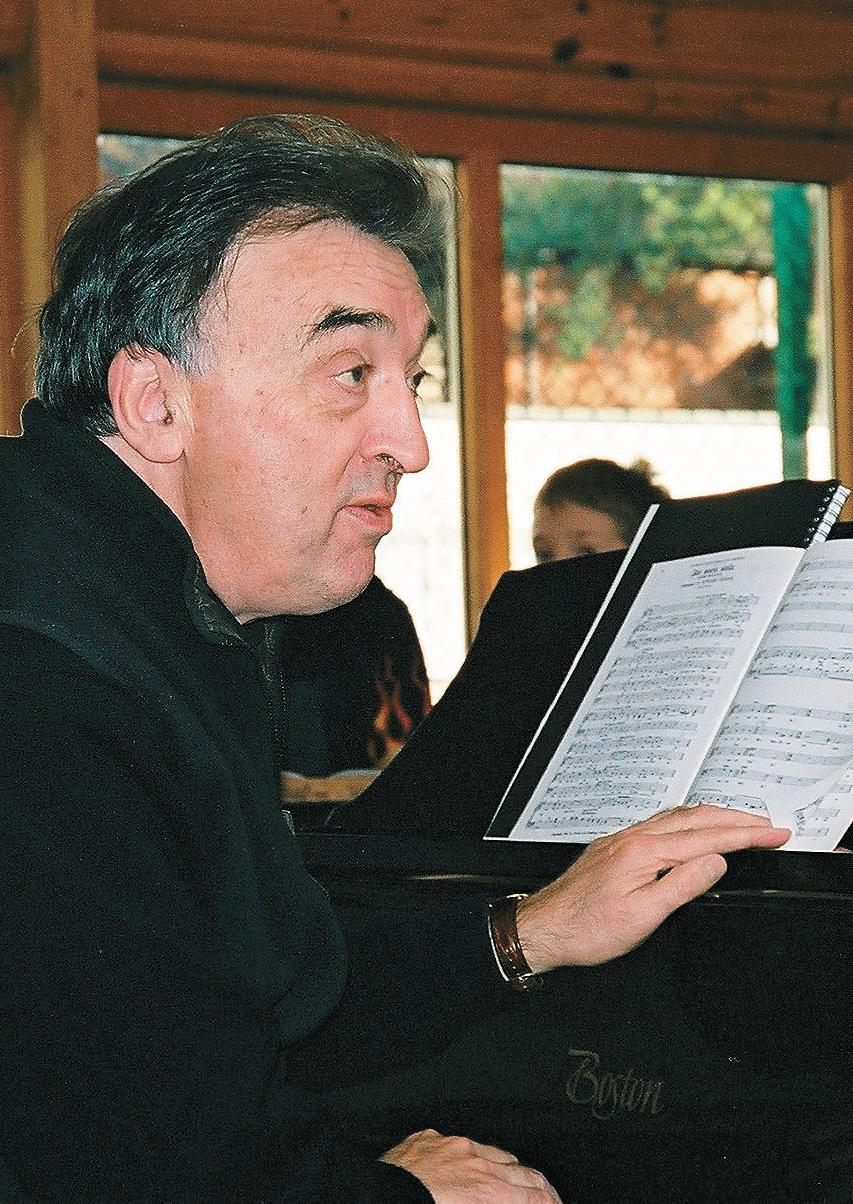 Michael Higgins is a former Dean of Ely Cathedral
Michael Higgins is a former Dean of Ely Cathedral
‘I well recall telling Christopher Robinson, then Director of Music at St. John’s College, Cambridge, how much I had enjoyed the superb singing of his Choir. He modestly replied ‘Ah yes, but if we had been able to have just a few more minutes of rehearsal it would have been even better.’ ’
ChristopherRobinson: Helle Christiansen
Those who ask questions such as Whither goest thou? do so, presumably, in the expectation of an answer. Some grammatical constructions, as in Latin, even involve the anticipation of the quality of a reply, be it optimistic or negative.
Things would be so very much the easier were there to be a simple or even a single way forward from the crossroads of the contemporary dilemma facing conventional church musicians everywhere. The fact that professionals and amateurs alike are still seeking solutions to profoundly significant equations after almost forty years of continuous liturgical change speaks for itself.
The loss of many of church music’s most persuasive advocates – people of the calibre of Erik Routley and Lionel Dakers – may be said, to a degree, to have left lovers of the best in congregational and choral endeavour devoid of notably pro-active elements within the profession. Even more important, perhaps, was that Routley and Dakers – and especially Dakers – in their personal as well as professional contacts, related so powerfully to the ordinary man and woman in the pew rather than merely connecting to elements of what some may all too easily perceive as a powerful aesthetic and cultural vested interest. They sought not to stifle a developing role for the church music of tomorrow (far from it), but kept a firm hand on the tiller to ensure that change was not taking place merely for its own sake. As a prime aim, they also dealt with an underlying philosophical approach to church music that valued the quality, standard and purpose of congregational involvement in musicmaking.
Something of the same catholicity and inclusivity of approach is to be found in the writings and endeavour of Bradford-born Harold Watkins Shaw (1911-1996). Though his place in the history of Handel scholarship is seemingly assured for all time, Shaw – like his more famous earlier namesake and fellow Yorkshireman Martin – is, astonishingly, in danger of becoming a neglected figure in terms of his work with and for church music. Harold laboured ceaselessly for half a century as honorary ambassador plenipotentiary for the cause of every-
The substance of this, the first of two articles for CATHEDRAL MUSIC, formed the basis for an address to the Annual General Meeting of the Church Music Society in September 2004 at the Royal Hospital, Chelsea.
thing that was best in church music – and, especially, in respect of the production of authoritative and scholarly editions of repertoire, standard and not-so-standard. Faced with such an assessment of his contribution, Shaw would almost certainly, and typically modestly, wish to acclaim the significance of the contributions of his successors at the publishing helm of the Church Music Society – Sir David Lumsden, Dr Richard Marlow and, especially, Mr Richard Lyne, the current incumbent of the CMS’s quaintly termed ‘Honorary General Editorship’. Richard Lyne’s work has extended over two decades and involved especial and remarkable commitment to the better appreciation of pre- and, especially, post-Restoration church music. Not for nothing is Richard Lyne occasionally referred to as ‘the Vincent Novello of the 20th century’.
No-one connected with the Church Music Society or the Royal School of Church Music could possibly fail to be aware of the great respect and esteem in which Harold Shaw’s work was, like Richard Lyne’s is, held, and, indeed, remains held today. The tenth anniversary of Shaw’s death in 1996 will shortly be
of Leeds
of the
Music Society, examines some of the challenges and chances facing church music today –and tomorrow.
upon us. By a nicely neat coincidence, 2006 is the year of the centenary of the foundation of the CMS and will also witness the fiftieth anniversary of the formation of the Friends of Cathedral Music and the centenary of the publication of the first edition of The English Hymnal. All three commemorations will, inevitably, be in the minds of many during the coming months. Retrospect should do something to engender and nourish with us all a deep sense of abiding gratitude for human beings who have proved such an inspiration to individuals as much as for societies providing such wonderful support for the continuance of the choral tradition in quires and places where they sing, as well as for a book that almost overnight transformed for ever the concept of British congregational song.
The Canterbury Press is to issue a commemorative volume marking 100 years of The English Hymnal under the distinguished general editorship of Canon Alan Luff.
For its part, the Church Music Society aims to issue a modest Festschrift in remembrance of, and thanksgiving for, everything Watkins Shaw did to enhance the quality of church music across the globe and, of course, principally in the English-speaking world. The Society has also set itself the task of commissioning a significant anthem from the pen of one of British music’s most significant contemporary figures, composer Judith Bingham. Bingham’s Touch’d by Heavenly Fire sets memorable and beautifully wrought stanzas from Robert Bridges’ Ode to Music – a text devised in 1895 for the commemoration that year of the 200th anniversary of Purcell’s death in 1695.
The philosophy behind this important project was carefully devised by Judith Bingham in consultation with the Society’s chairman and elder statesman, Ian Curror, whose Organistship of the Royal Hospital Chelsea spans four decades. The deliberate aim of Bingham’s masterpiece in miniature is to provide something memorable, evocative and eloquent for parish church musicians to sing and play.
Bingham’s anthem seeks with determination to blaze a trail of enrichment and fulfilment for the non-musical parishioner as much as the worshipping musician. Too often are the corporate and committed range of parochial vocal resources constrained to operate as the providers of a kind of spiritual ‘muzack’or liturgical wallpaper.
The Royal School of Church Music’s comprehensive resource material for the Common Worship provision goes a long way towards the provision of quality settings of standard liturgical texts. Issues from other rather smaller publishing concerns provide further material. And yet, the general standard of parochial music far too often levels out from a seemingly insatiable desire to group around the lowest common denominator – to sacrifice standard on the altar of accessibility.
The performance and maintenance of church music is very expensive of effort as well as resource. It requires an unfashionable level of commitment and an ever-increasing diversity of specific gifts. Much of the pyramid-like structure of earlier generations has been swept away – presumptions such as a chorister recruit’s familiarity even with basic hymnody and parochial repertoire can no longer be sustained. The concept of instant response encountered by youngsters in the course of so much of their daily activity is, perhaps, at variance to the degree of sustained effort required for activities such as practical musicmaking, acting, art and sport – to give just a very few examples of some of life’s real joys. All that is the down side.
The reverse of that particular coin is that standards at the very highest echelons remain immensely encouraging, though frequently and frustratingly elusive for many of us for most of
the time, if we’re honest. Tastes have become more catholic in the best sense, and it is certain that, at least within the Anglican Communion, liturgy is ceasing to be a ‘party’ issue allied or not to this or that particular ‘wing’. Observances of feasts and solemnities now belong to all, even if the material for them is scattered abroad among a confusingly kaleidoscopic series of worship publications.
Despite the fanfares bordering on ecclesiastical ‘spin’ heralding the publication of Common Worship during the Millennial Year, a considerable amount of normal curricular material is still awaited. Also, it is odd that, despite many virtues (not least being the assembly of memorably apposite Collects), the compilers of Common Worship saw fit to ignore what many felt to be arguably the best individual component within the Alternative Service Book of 1980 – its modern language psalter. Patchwork elements in contemporary liturgy seem to have everything going for them in terms of flexibility until one comes to realise the real value of a firm framework within which to work. Strict interpretation of the guidelines in Common Worship can give the enterprising liturgical-free thinker more or less complete carte blanche to devise whatever pattern of worship whenever he or she feels moved to do so. The musical input then becomes somewhat akin to an overstocked spice rack in the kitchen and the very flexibility thus encouraged is in real danger of throwing the liturgical baby out with the proverbial bathwater.
All involved in the church music of the present day, of whatever tradition or denomination, will readily testify that there are no easy fixes to the current state of flux. The causes of this shifting ground for musicians are all around us at parish level.
There is too much of a prevalent presumption that involvement in worship is, for preference, a matter of total participation for everyone present. This attitude seems set fair to sweep away centuries of contemplative worship and we ignore its insidious progress at our peril. By far the most worrying misconception concerns the role of music in the forwarding of mission among young people. The populist brigade would ➤
Q‘All involved in the church music of the present day, of whatever tradition or denomination, will readily testify that there are no easy fixes to the current state of flux. The causes of this shifting ground for musicians are all around us at parish level.’
have us believe that a kind of backward-looking jazz and light music culture of the 50’s sambas in the sanctuary if you like –actually have any kind of popular appeal to the young. Any selfrespecting recording company executive would affirm the opposite to be the case: the response to the numinous and contemplative quality of traditional chant and polyphony far exceeds the initial ‘surface’ attraction of nifty rhythms and catchy melodies with their prospect of a far briefer liturgical shelf-life.
It is precisely the aspects of continuing tradition and the emphasis on reflection and contemplation within the context of well-ordered worship to which all true friends of church music, whether in cathedral, chapel or parish would wish to give their whole-hearted support. It is also sadly true that it is these very touchstones of the numinous that are most at threat, and at serious threat, from those seemingly hell-bent on throwing out the musical and liturgical baby with the proverbial bathwater of change. It seems extraordinary that those in the Church of England have not learnt from the ‘school of hard knocks’ approach endured by our Roman Catholic brothers and sisters in their troubled journey of liturgical reform: the almost wholesale abandonment of Latin and its associated music, the challenges of persuading composers to respond to the inherently poor quality of vernacular texts, and, not least, the ‘who does what’ debate in respect of the roles of a choir –especially a trained choir – and the rest of the congregation.
The ‘feel-good’ factor rules far too many church music roosts. The spirit of creativity informing style in recent repertoire, whether congregational or choral, seems dominated by music of the ‘easy listening’ kind with melodic emphasis on grateful lines underpinned by a comfortably predictable harmonic language – very often the effect is that of a spiritual and creative fabric treated with a wellknown brand of conditioner.
A lamentable scarcity of material involving choirs as well as congregations of average attainment or even comparatively modest resources does nothing to further the cause of fine church music in an environment that often seems not to encourage even mediocre output let alone musical utterance of real quality. Very few composers have striven to address this repertoire famine; thankfully, those who have – here creative artists of the calibre of Noel Rawsthorne and Anthony Caesar spring to mind – have been eminently successful in achieving a significant aim in combining musical resource of parish pew as well as choir stall and combining them in an effective and purposeful way. About a century further on from a very important stylistic prototype – Parry’s festival anthem Hear my words, ye people – it is hugely encouraging to find a present day composer of the stature of Andrew Carter not disdaining Parry’s lead in concluding some of his more recent festival commissions with
a superbly-crafted hymn stanza or two sung by all present. Is not antiphony and involvement at the very heart of ancient vocal utterance? There is an urgent need in our own day to develop the potential of such interaction – between cantor and people, between choir and congregation and within the naturally contrasted musical resources to be found in each.
Those enterprising Victorian parish priests who served as the first compilers of the most successful hymnal of all time had wonderfully caught the mood of the moment in respect both of title and components. Hymns Ancient and Modern said it all. Yet time has shown that not even they, nor for that matter the fervent leaders of the hymnological counter-reformation embodied within the pages of that first edition of The English Hymnal forty- five years after the earliest issue of A&M in 1861, ever provided fully what people wanted, liked or even needed.
The prototype English Hymnal was, however, distinguished by the inclusion of material delightfully designated ‘not for ordinary use’ and even some frankly markedly Evangelical input. For the more traditional Anglo-Catholic of latter years, the English Catholic Hymn Book and, particularly, the Mirfield Mission Hymn Book proved heady mixers in the hymnal cocktail.
QA great diversity of musical influences on the Anglican church music scene is one of its very greatest riches. We have asborbed, magpie-like, Hymnody from Latin and Greek originals, unaccompanied choral music from the Orthodox traditions, strongly virile harmony in Lutheran chorales, folksong and plainchant have, at various stages in the development of contemporary hymnody, all vied for attention alongside the choral products of the Victorian and Edwardian Britain as well as the second of the nation’s Georgian and Elizabethan eras. However, with the notable exception of folk of the calibre and focus of Martin Shaw – still a grossly under-rated figure – few composers actually wrote music of real quality for ordinary people to sing.
Every now and again, of course, a composer produces a stunning melody that absolutely everyone wants, indeed needs, to sing. From earlier generations, immortal classics of the calibre of Gordon Slater’s St Botolph and Cyril Taylor’s Abbot’s Leigh spring at once to mind. From our own day, one thinks instinctively of Maurice Bevan’s world-beating tune Corvedale and John Barnard’s strongly lyrical Guiting Power
Congregational music has to be thoroughly practical, serviceable and durable. It has to be sufficiently sturdy to endure rendition week in week out, year in year out. Choral repertoire is altogether a different animal, though as with communal output, the simplest expression often serves best. Fine melodies can be ruined by over-fussy harmonies that often negate the powerful potential of verbal texts. Possibly the most important harmonic aspect of music designed for congregational singing is the adequate preparing and underpinning in advance of
‘Congregational music has to be thoroughly practical, serviceable and durable. It has to be sufficiently sturdy to endure rendition week in week out, year in year out.’
upcoming melodic shape and the intervals contained within phrases.
Lively music is not invariably uplifting, though it certainly has the capacity to be so. Catchy rhythmic devices can become ends in themselves, as the late Gordon Reynolds memorably pointed out in The Cassock Pocket Book, a publication within which is found much important truth behind the surface humour, irony and self-deprecation. Reynolds’ importance as a major commentator on church music and as educator/animateur par excellence emerges from many of his writings. There is much purpose behind the joviality.
In terms of educational output, there is some anecdotal evidence to suggest that numbers of former university organ scholars engaged within the church music sphere has probably never been lower. By contrast, continental opera houses and British musical theatre are heavily stocked with such talent and there is increasing professional involvement by UK trained musicians in the work and ministry of the Episcopal Church of the United States of America. This is, emphatically, not just a matter of financial incentive – though British church musicians remain grossly underpaid, notwithstanding the important guidelines and indefatigable work done in this field by officials of the Royal School of Church Music and the Incorporated Society of Musicians.
British organists and choir directors rarely undertake such work as their sole source of livelihood. This is at once a great strength as well as a weakness. Time to plan, time to consult, and – most important of all – time to give oneself space to gain vision are all at a premium. Legislation in respect of working with young people and increasing involvement in practical music from instrumentalists as well as choralists are but two areas of real challenge facing many church musicians and may well be proved to have become something of an impediment to career recruitment. There must be many who have come to feel that training as an arranger, or in the management of computer software would have been every bit as useful as learning to play the organ.
In many ways, liturgy is itself a basic response to a human need. To some extent, worship can take place within almost any environment; its observance in chapel, church or cathedral enhances human existence, and affirms the spiritual within us all.
Styles of music and ecclesiastical apparel go back many centuries. Vestments take us visually back to the common dress of Roman occupied Palestine. Unaccompanied chant places us, mentally, inside the precursors of today’s ‘bare ruined choirs’ – in the great churches of the monastic heartland of Medieval Europe. A lively revivalist tune from the late 18th or early 19th centuries - especially when allied to the invigorating verbiage of a hymnographer of the calibre of Charles Wesley – reminds us of the great meetings for worship in the open air that were so crucial a part of the Evangelical revival: truly was Methodism born in song. The vigorous polyphonic sections of some of the most popular early hymn tunes link the worshipping community with those cradles of contemporary choralism, the early and mid 19th century choral society or choral union.
Chant and revival hymnody are both direct modes of expression – sui generis are more than capable of standing alone. The same integrity and honesty of purpose is found within early settings of the English liturgy by Tallis, Byrd, Farrant, Gibbons and others as much as in the passionate, sometimes even torrid, fervour of the counterpoint of the
Spaniard Victoria. Even English music of the high Victorian era, once so despised for its sub-Mendelssohnian sentiment, is now valued for itself.
Interestingly, the individual compositional styles of composers of today have often involved re-visiting the influences of the past and stamping them firmly with the mark of the present – Judith Bingham, Andrew Carter, Francis Grier, Jonathan Harvey, John Rutter, John Tavener and others have all participated in such synergis and enriched the contemporary repertoire vastly as a consequence. Antiphony – between solo/solo group and main chorus, among upper and lower voices – plays a major part in much of this stylistic development. Use of modal, or quasi modal harmony and of rhythmic ostinato patterns provides something of the insistent nature of the litanies of olden time. The significant virtue of diatonic stability within the chosen tonal centre is a further factor in cementing the fabric of contemporary choralism.

So far, so good. But the average worshipping parishioner comes across such modes of expression only in a collegiate chapel, cathedral or greater church – or, worse still, through the means of broadcast and recording. The inherent worth of most music sung in our parishes is disappointingly dismal. The critics of yore were wont to warn against aping the cathedrals by attempting repertoire more suited to the professional rather than the volunteer choir. However well-intentioned such aping was, there was – invariably and undeniably – at least the ever present tendency of striving towards the possibly unattainable. But strive we did, not merelydownsize everything into a melting pot of mediocrity.
Saturday 9th July
7.30 pm
Manchester Camerata
Sunday 10th July
10.30 am
Festival Eucharist
9.00 pm
Tallis by Candlelight
Monday 11th July
7.30 pm
Octaphonie
Tuesday 12th July
7.30 pm
Music for a while
James Bowman (countertenor)
Wednesday 13th July
7.30 pm
Raphael-Alexandre Lustchevsky piano
Thursday 14th July
7.30 pm
Keith Nichols’ ‘Blue Devils’ Ellington Orchestra
Friday 15th July
7.30 pm
Mark Le Brocq tenor
Julia Cobbe piano
10.00 pm
David Briggs
Live Improvisation to Hunchback of Notre Dame
Saturday 16th July
7.30 pm
Handel
Israel in Egypt
Plus daily
LUNCHTIME RECITALS
Age: 34
Education details:
Chetham’s School of Music; Organ Scholar at The Queen’s College, Oxford; Royal Northern College of Music; Sweelinck Conservatorium, Amsterdam
Career details to date:
Tutor in Organ Studies at RNCM and Chetham’s (1994-1999); Director of The Exon Singers (from 1997); Sub-Organist, Manchester Cathedral (1996-1999); Organist & Master of the Music, St Mary’s Episcopal Cathedral, Edinburgh (1999-2004); Organist & Master of the Choristers, Wells Cathedral (from January 2005).
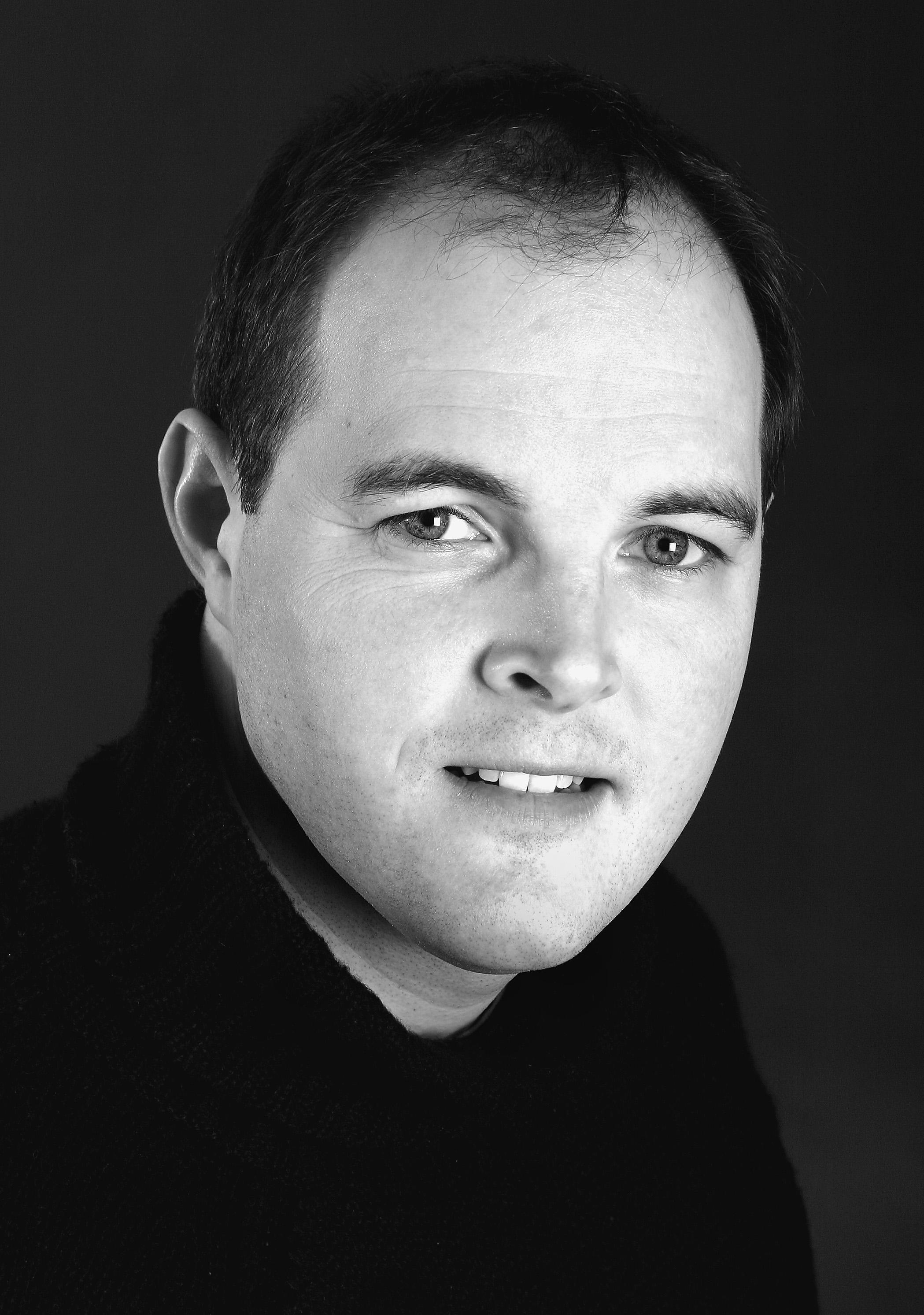
What or who inspired you to take up the organ?
A wonderful organist and gentleman called Ernest Bullock, funnily enough, from my village.
What is your a) favourite organ to play? St Sernin, Toulouse.
b) favourite building?
Wells Cathedral is currently my favourite ecclesiastical building (breathtaking) and La Grande Arche in La Défense, Paris is my favourite non-ecclesiastical building.
c) favourite anthem
Brahms: Geistliches Lied and Walton’s Jubilate are two amongst many.
d) favourite set of canticles?
I do have a weakness for Dyson in D. The Tippett and Mathias canticles are favourites as well.
e) Your favourite psalm and accompanying chants?
I once heard, on Radio 3, a wonderful chant allegedly by Finzi but have never managed to track it down…
f) favourite organ piece
All Bach and Duruflé: Prélude et Fugue sur le nom d ’Alain, Op 7.
g) favourite composer
J.S. Bach, followed by Brahms.
What are your favourite radio and television programmes?
BBC Radio 4’s Today programme and The West Wing.
What newspapers and magazines do you read?
The Times and The Guardian during the week and The Independent on Saturday(especially The Fifty Best…); The Gramophone; Private Eye.
Have you played for an event or recital that stands out as a great moment?
One of the Bank Holiday Recitals at Liverpool Cathedral in 2003 – a tremendous thrill.
Are you planning any recordings and if so what repertoire would you hope to include?
There are various exciting plans for Wells Cathedral and The Exon Singers – watch this space.
What did you enjoy most about St Mary’s Edinburgh?
Making music daily, with a wonderful choir; founding the Bach Cantata Project and the Capital Commissions scheme and seeing them flourish.
unique PORTABLE KEYBOARDS
(with PIPE ORGAN sounds)
CANTORUM III
Cantorum II
£690 (inc VAT)
Cantorum III
£990 (inc VAT)
What music did you choose for your last service at St Mary’s? My last Evensong included Walton’s Chichester Service and Swedish composer, Jan Sandström’s magical setting of Det er en ros utsprungen. My last service was the Christmas Day Eucharist: Haydn Missa Sancti Nicolai and Handel For unto us a child is born.
If you could commission a choral work what text would you choose? And who would you like to set the words to music?
I think that the choral world would benefit from a new piece specifically for Remembrance. It would be good to commission new words and music. Getting the right balance of writer and composer would be an interesting challenge.
What are you most looking forward to when you arrive at Wells? Getting to know and work with the choir and being in that fabulous building.
What was the last book you read?
Open Secret by Stella Rimmington.
What was the last CD you bought?
The Complete Sacred Music of Henry Purcell (Choir of New College, Oxford & The King’s Consort).
What are your hobbies?
Reading, cooking, film, art, architecture, politics, chess and travel (especially in Scotland, Italy and France).
I’m delighted to announce that Matthew has joined the Editorial Board as an Adviser (Ed).
(a THREE manual practice organ with ‘tracker touch’ keyboards and baroque/romantic/FRENCH voicing)
CANTO R U M I I I has:
61 note keyboard with ‘split’ manual.

17 ‘sampled sound’ PIPE organ voices baroque/romantic. 5 programmable registration memories.
4 ‘pre-set’ instrument voices – piano, spinet, choir and strings.
DESIGNED for Choirs, Ensembles and the home.
ALSO Viscount has the most comprehensive range of single, two and three manual sampled sound digital/pipeless organs from £1500 to £13500 – over twenty models.
V I S I T our showroom, or request information from:
5 Caxton Way, Wa t f o rd, WD1 8UA TeI 01923 247437 (Agents throughout the country)
Stops – 42 plus general & departmental thumb pistons; Tracker touch keyboards; Couplers/toe pistons; manual reverse facility; Transposer and tuning temperaments.
An excellent teaching organ at an attractive price.
Viscount organs are now in the homes of many church organists and recitalists. There are FIFTEEN models in our range, with the lowest price for a ‘full pedal board’instrument at (only) £4200.00 inc VAT. All models use the ‘sampled sound’ system for the excellent tonal simulation of a pipe organ –there is a headphone facility for good neighbourly relations!
‘Come ye faithful organists, come, to Viscount, foryour organ fun... Alleluya, Alleluya, Allelu...yah!’

‘I do have a weakness for Dyson in D. The Tippett and Mathias canticles are favourites as well.’
Members will have been saddened to learn of the death of our Vice-President Tony Harvey who passed away, unexpectedly but peacefully, at his home in Lincoln in early March.
Tony was born in 1933 and spent most of his early life in Derbyshire and Nottinghamshire. A teacher by profession, he worked for many years at the Bluecoat School in Birmingham. After retirement he moved to Lincoln, a cathedral and city that he loved so much, where he remained an ardent supporter of the choral tradition (and of the boys’ choir in particular).
Tony joined FCM in its very early days and was undoubtedly a major player and influence in the tremendous growth and development of our charity over the years. Although he contributed much as a long-standing member of the Council, and more recently as a Vice-President, it was through his work as Secretary for Gatherings and later as Cathedrals Officer, that Tony became such a well-known and much respected ambassador for cathedrals and their music.
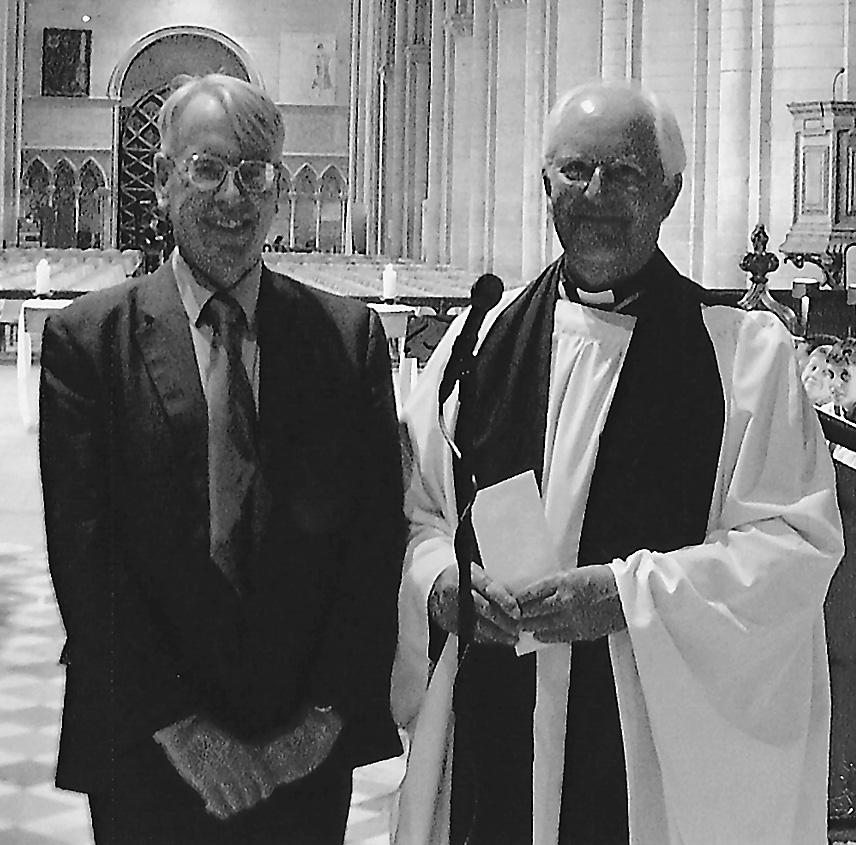
The ‘Gatherings’ are the public face and manifestation of the FCM. Cathedrals and their choirs are greatly encouraged by our supporters and well-wishers who travel large distances and in great numbers to spend a day or a weekend in a particular place, attending the services and listening to the choirs. The gatherings also attract the attention of the cathedral’s own congregation, and have become a great vehicle for us in recruiting new members. Under Tony, gatherings were established as being great fun, affording participants the opportunity of visiting other local attractions besides the cathedral in question and making the FCM something approaching a ‘travel club’. Who can forget that wonderful weekend at Peterborough when the specially chartered steam train on the Nene Valley line pulled into the station with the FCM logo blazoned on the front of it!
Sunday July 10 – 3.00 pm
Colin Andrews & Janette Fishel
Wednesday August 24 – 7.30 pm
John Pryer & Philip Smith
Wednesday October 5 –7.30 pm Stephen Disley
Admission £7 Friends £5
Membership of the Friends – £15 p.a. Forms from: APOA, P.O. Box 2411, Stoke-on-Trent, ST4 5XA
Please visit our website: www.allypallyorgan.org.uk
Tony was always full of enthusiasm and ardent in championing his cause. A colourful character yet in a quiet, understated way, he was never one to mince his words. At meetings he could be a chairman’s nightmare, sometimes flying off at a tangent from any matter under discussion, never wanting to take no for an answer (even after the matter had been decided by the vote!) and beginning many questions with the familiar words ‘Why can’t they...’. But he had a very warm heart, and his encouragement to many FCM members and to cathedral organists, and his support in difficult times when the going was not smooth, meant a great deal.
I know that Tony himself (I can hear him telling me) would not want any obituary to omit the fact that he was a fervent and diehard supporter of the uniquely English tradition and heritage of male-only choirs. Like many, he was sad that his concern for the preservation of this tradition, so much envied throughout the world and so much associated with authenticity in performance, should be misunderstood as principled opposition to girls’ choirs. In that respect he remained to the very end unpersuaded by modern developments in some cathedrals. I am sure that, even now, he is in some higher place arguing for the same cause; who knows, maybe even organising their first gathering...
May he rest in peace.
The sudden loss of Tony at the age of 71 has been received with sadness across the world of cathedral music. Always generous with his time, in person, in management committee or whether simply on the telephone, he was much loved by many. Wherever he went he was the same modest Tony, sharing knowledge with enthusiasm and kindness, so very patient with us, an example to all. The many organisations to which he belonged, Friends of Cathedral Music, Church Music Society, Guild of Church Musicians, organists’ associations, Organ Club of Great Britain, Campaign for Defence of the Traditional Cathedral Choir, Victorian Society etc, have all benefited from his membership. He served on the management committees of several of them and in three cases with long service.
As a schoolmaster he taught history and music in schools in Nottingham, sharing a flat there with best friend, Geoffrey Bond and then at the Blue Coat School, Birmingham from the mid-1960s.
Tony never learnt to drive but was a great fan of steam trains. Knowing most routes he could recall ticket prices and dining car menus, particularly his favourite four-course dinner with halibut and roast beef! He also collected railway memorabilia.
His choristership and assistant organistship at Sawley Parish Church in Derbyshire in the 1940s set him down the path of love for cathedral music. He said he had been influenced by four greats: Dr George Gray, Alwyn Surplice, Geoffrey Barber and the Revd Ronald Sibthorp, and with their encouragement he gained the LRAM and LTCL. He maintained that it was his own choristership that had convinced him that the unique tonal quality of boys’ voices was the perfect musical instrument for cathedral music.

Tony joined FCM at its inception in 1956 and its Founder, Ronald Sibthorp, quickly discovered he was a person of special talent and encouraged his role in organising countless Gatherings with meticulous care. As Secretary for Gatherings, he developed them and they grew in popularity and so helped FCM grow. At each one he would wait for and then greet members upon arrival and get to know them all.
Of great pride to him were two awards for distinguished service: an FCM VicePresidency and a Fellowship of the Guild of Church Musicians. It would please him to know that his hood from the latter diploma will be used at future GCM
diploma ceremonies at Lambeth Palace as a permanent memorial to him.
Tony wished to live where he was but a few steps’ walk “between his teapot and choral evensong”, and so he moved to Lincoln’s Bailgate in 1994, to enjoy Colin Walsh’s cathedral music. Within easy reach was Southwell Minster with its idyllic close, where he could also enjoy Paul Hale’s cathedral music. He said that in moving he had claimed “two for the price of one, with plenty of Stanford, Parry, Ireland and Howells.”
As Tony had done at so many times in the past, so at his ‘last Gathering’ he was waiting for us: in a plain oak coffin in front of the High Altar as we entered St Hugh’s Choir in Lincoln Cathedral on Tuesday March 22nd. His funeral service of thanksgiving was wonderfully arranged and conducted by the new Precentor of Lincoln, Canon Gavin Kirk. His favourite organist, Colin Walsh, played the wonderful ‘Father’ Willis of 1898 and Aric Prentice conducted the choir. A touching moment before the service was when the Precentor introduced Lincoln Cathedral’s FCM Chorister to Tony’s sister, Pam, the choirboy speaking briefly to her as he presented a card of condolence. Tony’s memorial service will be held in the Cathedral on Friday May 20th at 5.30pm and the address will be given by Dr Simon Lindley. Tony’s passing marks the end of an era. He is irreplaceable and will be sorely missed by us all.
Rhodes, City Organist
Victoria Hall, Hanley, recalls his old friend of over 42 years.Tony playing the ‘Father’ Willis at Lincoln Cathedral. Photo: Nigel Rhodes
‘Tony wished to live where he was but a few steps walk “between his teapot and choral evensong”, and so he moved to Lincoln’s Bailgate in 1994 to enjoy Colin Walsh’s cathedral music.’
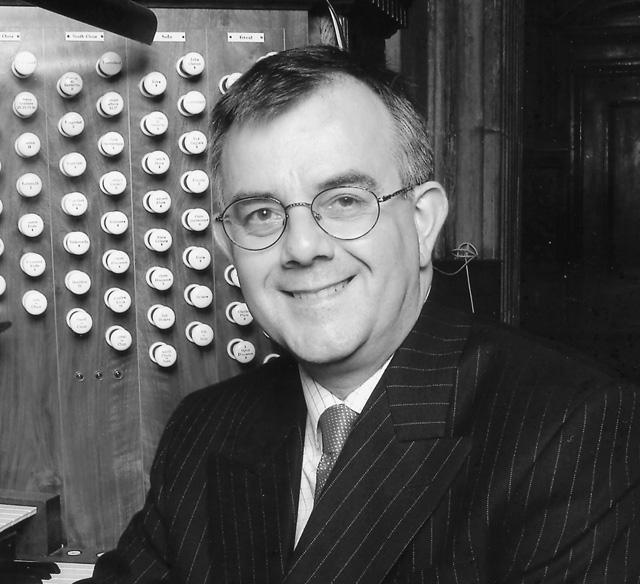
RO: Warm congratulations from all of us in CATHEDRAL MUSIC on your prestigious appointment as Organist at St. Paul’s. Tell me about your childhood, was it greatly influenced by music?
MA: My parents were both musical but not professional. My father, who is 98 years old, still plays the violin, and my mother, who died a few years ago, sang in local choirs. They were both very involved with the Lytham St. Anne’s Festival, a competitive Festival, where I gained my early performing experience playing the piano and violin, and also in speech and drama, which has always interested me, since my mother taught that subject. I went to King Edward VII School at Lytham and that is where I started to learn the organ. The school had a two manual extension Walker, which was quite a good instrument and very suitable for practice. I learnt the organ from Michael Addison, a former organ scholar at Durham, who taught at the school. He took me to Durham on several occasions and introduced me to Conrad Eden, at that time organist at the cathedral, who was a formative influence and who let me play the cathedral organ.
RO: Were you a cathedral chorister?
MA: No, sadly I didn’t have that opportunity. I was brought up as a Methodist but became an Anglican at the age of fourteen, and then became Assistant Organist and subsequently Organist at St. John’s Parish Church in Lytham, before I went to college.
RO: What did you do after you left school?
MA: I won the RJ Pitcher Scholarship to the Royal College of Music, which was awarded by the Royal College of Organists. I remember the audition panel very well because it was Harold Darke, Richard Popplewell and John Stainer (not the composer I hasten to add, but one of his descendents!). I studied there for two years with Richard Latham and Ralph Downes, and then won an organ scholarship to Jesus College, Cambridge.
RO: Did you enjoy your time at Cambridge?
MA: Greatly. As Organ Scholar at Jesus, I conducted a choir of boys and men, the only college choir apart from King’s and St. John’s with a boys’ top line. It was an invaluable experience. I then stayed in Cambridge for a fourth year to do a Certificate in Education, and was also very lucky in gaining the conductorship of Cums 2, the University Second Orchestra. I have always enjoyed orchestral conducting. My teaching practice was at Magdalen College School in Oxford, which really was a super school. During my time there the position of Assistant Director of Music came up, which they offered to me – it was perfect timing.
RO: How did you step into the cathedral world?
MA: I think cathedral music had always been what I wanted to do, right from those early experiences of visiting Durham. I suppose I saw my teaching career as a kind of stop gap, though I have taught all the way through, even when I had cathedral posts. It was good being in Oxford as I had the chance of deputising both as an organist and an alto, at Christ Church, New College and Magdalen. There I had the wonderful opportunity to sing for Edward Higginbottom, Simon Preston and Bernard Rose. It is a happy coincidence that Bernard Rose’s grandson is now one of my choristers at St. Paul’s. In 1978 I was appointed Assistant Organist at Norwich Cathedral working with Michael Nicholas. I was also Assistant Director of Music at Norwich School, so my teaching continued.
RO: From Norwich you went to Bristol as Organist and Master of the Choristers.
MA: Yes, in 1983. I remained there for seven years. It was a very good time for me, and the cathedral choir achieved a very high standard, especially when one considers the slender financial resources available then at the cathedral. I also conducted the
Cathedral Special Choir of some 180 voices, which gave me the chance to conduct some of the big choral and orchestral repertoire such as Gerontius and the War Requiem. In 1990 I moved to Clifton College, where I taught academic classes, piano, and conducted two choirs. During the latter part of my time at the college I was responsible for directing the Chapel Music. The college has a fine Arthur Harrison organ, which has that sort of gutsy sound needed to lead the whole school in the singing of Jerusalem! It was a great instrument to play.
RO: From Bristol you moved to become Organist at Wells Cathedral. You were very successful there. Looking back on that time, of what are you most proud?
MA: I think the thing that gives me most pride is that we established a very consistently high standard of daily singing. For most cathedral organists, I suspect the daily services are as important as any large event at which the choir may sing; and for those who attend cathedral services, a Tuesday Evensong on a cold late November day, should be of equal quality to a broadcast service on Radio 3. It is also that daily rhythm which gives cathedral choirs their musical expertise and sense of teamwork.
RO: Tell me about your work as a composer, as it seems to me that there are not today many working composer/cathedral organists. Philip Moore at York of course springs to mind, and it seems to me that you are in the same mould. Do you think we are missing out by not having church musicians writing the sort of music we would like to have?
MA: There has to be a great advantage in having people who are working within cathedral music writing church music. They will write for a genre that they know very well, and will have an immediate grasp of what works chorally. I must admit that much of the music that I composed at Wells was written for the Wells Choir to sing, for that sound and the Cathedral’s acoustic. Herbert Howells, a composer I greatly admire, understood the genre perfectly, and wrote for buildings and their choirs and acoustics. His St. Paul’s service suits us very well as does the service written for Gloucester. Howells worked for a time at St. John’s, Cambridge during the

Second World War, and had many associations with choral foundations throughout his life. His music is always so appropriate for worship and so well crafted. Having said that, I think you can also say that much fine 20th century church music has been written by non-church composers, thinking of Britten, Leighton and Tippett for example, who whilst having a strong affinity with liturgical matters have not been church musicians themselves.
RO: Do you think we are training our church musicians as well as we did in the past? Church musicians these days will often conduct orchestras and may have no formal training, indeed many may have no formal voice training. Are we looking to the future enough in this training, and are the musicians coming out of our Universities and Music Conservatoires, being prepared enough for say, conducting an unaccompanied Evensong, then the City of London Sinfonia, then playing a large solo organ concert?
MA: I think we could do an awful lot more than we do at present. I think it’s crucial that anyone learning the organ who has aspiration to work in church music should have singing lessons and learn how the human voice works, so that they are fully equipped to train choirs properly. Secondly, church musicians are frequently called upon to conduct orchestras, and it helps if they have played an orchestral instrument. As a boy I played first violin in the Lancashire Youth Orchestra so got the feel of what it is like being inside an orchestra, and experienced a great deal of wonderful orchestral repertoire. Thirdly, going back to the composing issue, I feel that a great deal has been lost in terms of teaching youngsters harmony; the old style work of ‘O’ Levels is not there in the modern GCSE courses. I remember having to write good harmony and working through Bach Chorales when I was young. It really is the foundation to being a successful composer; far more so than being computer literate.
RO: Is the same thing true about the standards and kinds of singing done in many schools today? The National Curriculum has put a large emphasis on instrumental music, and singing, or at least a certain kind of singing, has perhaps been lost. These days much singing is of songs from the shows or popular music, but
‘It’s crucial that anyone learning the organ who has aspiration to work in church music should have singing lessons and learn how the human voice works.’ All photos Phillip Way
this music does not have the range that songs in the past had. Has this affected getting people to sing and our recruitment of choristers?
MA: Yes, without a doubt. I think fewer and fewer children today have good head registers, largely because of the repertoire they are being given to sing at an early age. I have seen this a lot in America where there is often an assumption that children can only sing in the range of middle C to the C above, which of course is absolute nonsense. But unless you give youngsters music that has a greater vocal range, there is no way they can develop their head registers. There has also been a great cultural shift in recent years. Fewer families go to church now and there are definitely fewer boys singing in church choirs. In the past, boys might join their parish choir at the age of 6 or 7, so by the time they came to us to audition they had already been singing for some time. Now we often see boys who have done very little, or no singing before and who do not play an instrument. Of course, if they have the potential, we can make something of them. The style of music in parish churches has also changed radically over the past few years, and choirs are often given a less dominant role in worship. It is unusual to find church choirs that sing a regular fully choral Evensong these days. Because of recruitment difficulties, many parish churches now have mixed choirs, and whilst this enables a choral tradition to continue and flourish, too often it has meant that boys’ choirs have disappeared. One of the most encouraging developments in cathedral music in recent years is that both boys’ choirs and girls’ choirs are given prominence in worship as separate choirs, each retaining their own individual character.
RO: What can we do to get the work of our choir schools and cathedral choirs better known? As we all know there has been a decline in the numbers coming forward in many of our cathedrals.
MA: I would like to see choral recruitment becoming a much broader based thing. What tends to happen now is that each cathedral advertises that it needs choristers, but I would love to see a bigger, broader campaign to get children singing much more. The CSA outreach programme is working well in some areas, but there is still much work to be done in a more collaborative way

between cathedrals to get the message out about the value of a chorister education. At Wells we had a ‘Be a chorister for a Day’ once a year, and the idea of it was not solely to recruit cathedral choristers, but rather to get children singing and coming into these great buildings which we all take for granted. The thrill of singing in such a vast space is electrifying for many children. The day ended with them all singing something at the Choral Evensong, often Howard Goodall’s Psalm 23, because many of them knew the tune already. It was also an opportunity to look around the school. We usually had around 50-60 children attending. This is something I would love to do here at St. Paul’s.
RO: Where do you see us being in five years with regards to church music? So much has happened in the last five years, so will we be able to maintain our much loved and highly valued choral tradition?
MA: I sincerely hope so. I think it is crucial for cathedrals to build up their choir endowments, so that choristerships do not become a drain on dean and chapter resources. Cathedrals are finding it harder to make ends meet these days, so safeguarding the financial future of our music foundations has to be a priority.
RO: Are you still on the recital circuit?
MA: Yes I still do recitals as often as I can, and I always play the voluntary after Evensong on a Sunday. It is very difficult to keep one’s organ playing going at the sort of standard one did as an assistant organist. For me now my priority is choir training and conducting then composing. But I still enjoying playing when I get the chance.
RO: Do you have a particular favourite period in church music?
MA: Not really; I love it all! When choristers ask me what my favourite piece is, I always tell them ‘ the one I am conducting at the time.’ I do believe that a cathedral repertoire should be broad and should cover the finest music from every period.
RO: Can I ask you about the thorny issue of girl choristers?
MA: The first thing to say is, any cathedral contemplating starting a girls’ choir has to look very, very carefully at the finances.
‘I would like to see choral recruitment becoming a much broader based thing. What tends to happen now is that each cathedral advertises that it needs choristers, but I would love to see a bigger, broader campaign to get children singing much more.’
It is not fair to try and set up a choir which is going to be a parallel choir to the boys’ if they cannot give the girls the same opportunities in terms of finance. That then begs the question; if you are going to give the girls the same opportunity are you then robbing the boys of the experience that they need? (or the funds to maintain a boys’ choir adequately). It is a very complex area. I think it worked very well at Wells, although there were financial problems, now being resolved with the establishment of a trust fund for girl choristers. The school was a co-educational school that went from 3-18 years, so we were able to have two parallel choirs. Having had the Wells experience, I am totally behind the idea of giving girls the chance to be cathedral choristers. They can achieve amazing musical results and have a terrific work ethic.
RO: What about the 11-18 year old choir?
MA: One of the beauties of this age group is that girls’ voices really start to blossom from the age of 14 onwards. One of the problems of this age group is that they cannot really give the same time commitment as the younger age, because academic pressures really kick in during this time.
RO: Bristol did this, didn’t they?
MA: Yes, and they are a very fine choir.
RO: What is your view on a mixed top line as at Edinburgh and Manchester?
MA: Well, my own view is that it is better to keep top lines separate, because you then get the uniqueness of each sound. It also means that you preserve the great choral tradition of boys’ singing
that has gone on for hundreds of years and is so widely admired. I also believe that the boys’ tradition is the one most at risk; girls will always be keen to sing.
RO: There is, of course, the fact that many boy trebles will become lay clerks in later life, something not really possible for girls.
MA: Absolutely. However, we must also not forget that many of our girl choristers will be mothers one day, who will want the same experience for their children, be they girls or boys!
RO: I know you have only been at St. Paul’s for a very short while, but looking in your crystal ball, what challenges lay ahead?
MA: So many! A huge number of exciting services are coming up. There is the service to mark the end of the Second World War, and when the restoration is finished on the Cathedral, that is obviously going to be a time for big celebrations. There are also the Nelson celebrations this year. The organ is going to be restored in 2006, which will be a rolling restoration so that we can keep the organ working all of the time. One of my hopes is that we can get a mobile console for recitals.
As far as the choir is concerned, I want to continue the tradition of commissioning new works. In fact, we recently commissioned a work from Gabriel Jackson, (a former chorister at Canterbury under Allan Wicks) for the Conversion of St. Paul, which was performed in January and broadcast on BBC Radio 3. We also have a very close link with Hyperion Records. John Scott did many fine recordings with them during his time here, and I am delighted that they wish to continue to record the choir in the future. ➤
Truro Eucharist
A T B £3.00 (post free in U.K.till 31st July 2004 only) All major credit cards accepted
Finale from Symphony No. 3 transcribed by David Briggs
£8.50
We are pleased to announce that we are now the sole agent for all compositions by David Briggs. All major credit cards accepted
RO: All of this extra work of course, in addition to the daily round of services, puts added pressure on the choristers. How do you view this issue?
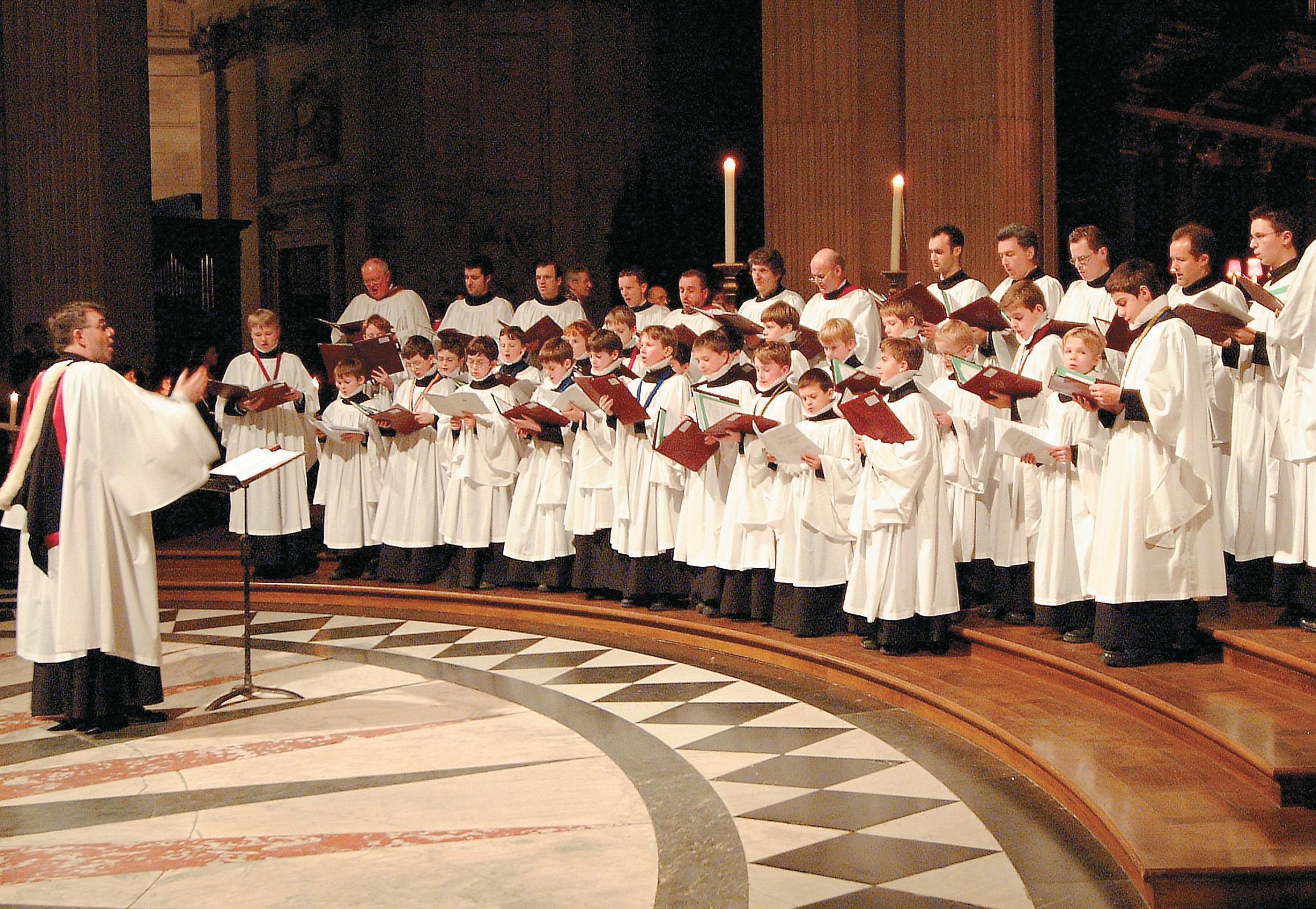
MA: I am always aware of what is acceptable and what is not as far as the choristers are concerned. Nevertheless, there are times, when the workload is heavy and unavoidable. It is amazing how well the boys cope during these times; it is a tribute to their professionalism. We do, sadly, have to turn down offers from time to time to sing away from the Cathedral, but we always have to remember the choirs’ primary role is to sing for the worship of the Cathedral. We also have to take careful account of the effect on their academic education, since it is important for them to do well in the classroom, and achieve places at their next schools.
RO: Do you feel that all choristers should have singing lessons or voice coaching?
MA: It most certainly helps if they do. We are very lucky here because we have an excellent singing teacher, Veronica Campbell,
‘I think it is very important to have Head and Deputy Head Choristers. In fact, I have just created another layer here, Senior Choristers.’
who not only sees the boys individually, but also attends some of the practices to see that all is as it should be, vocally speaking. The vocal health of the choristers is vital when they have such a heavy workload.
RO: Do you still think it is correct to have Head Choristers these days? Some choirs, Christ Church, Oxford and King’s College, Cambridge for example, have dropped these traditional appointments.
MA: I think it is very important to have Head and Deputy Head Choristers. In fact, I have just created another layer here, Senior Choristers, so that the other boys in Year 8 who were perhaps disappointed that they did not get the Head or Deputyship, at least have something which gives them a sense of responsibility, and gives the younger boys something to aim for. We do not have a pecking order in terms of numbering choristers as some places do. There is the Head and Deputy, the Senior Choristers, and then all other boys appear on any list alphabetically.
RO: How many Assistants do you have here?
MA: Huw Williams is the Sub-Organist and Assistant Director of Music, Mark Williams is the Assistant-Sub Organist and is also the Director of Music at the Cathedral School and Duncan Ferguson is the present Organ Scholar, whom we share with St. Michael’s, Cornhill. I am very fortunate to have three such fine musicians.
RO: Any problems getting Vicars Choral?
MA: No. We are very lucky since there are plenty of super singers in London, and of course we pay them well.
RO: How do you see your role in general within the choral tradition? You are, of course, very well known in your own right within this field, but now have an even higher profile through your post at St. Paul’s Cathedral.
MA: I think being in a position like this gives one a golden opportunity to spread the word about what cathedral music is all about, especially the educational opportunities available to young singers. One can also be an ambassador for our music abroad, which is something I very much do when I take choral courses in Canada and the USA, which I do most years. I also get quite a few choral commissions from choirs overseas, which may be a Parish Mass, an anthem, or a piece for a Festival occasion. I also hope that in my own small way, I can encourage people to come and visit our cathedrals and hear our choirs sing.
RO: Looking ten years down the line, what would you like to have happened here?
MA: A jolly good regular high standard of day-to-day singing and a feeling that the music at St. Paul’s Cathedral is in very good heart and set well for the next fifty years. One of my ambitions for my retirement is to write a Symphony! I have always wanted to do this, but I know that I will not have the time during the next few years!
RO: Finally, what went through you mind as you stood in front of the cathedral choir for the first time?
MA: I thought, I hope they come in on my beat! Seriously though, I thought – wow – what a lucky chap I am to be working with this choir in this great building. It is a tremendous privilege.
RO: Malcolm, thank you very much. We all look forward to what will be happening here during the next few years.
David Halls
Commenting on the appointment of David Halls as Director of Music at Salisbury Cathedral, to succeed Simon Lole in September, the Dean of Salisbury, the Very Revd June Osborne, said, “Personally I am delighted that David will be stepping up to Director of Music – a feeling that was shared by the congregation when it was announced, if the length of the applause was anything to go by.”
Whilst a pupil at Harrogate Grammar School, David was Assistant Organist at St. Wilfrid’s, Harrogate, studied organ with Adrian Selway at St. Peter’s Church, Harrogate, Ronald Perrin at Ripon Cathedral and later with Thomas Trotter in London.
David won an Organ Scholarship to Worcester College, Oxford, graduated in 1984 and passed both the Associate and Fellowship Examinations of The Royal College of Organists in the same year, being awarded five prizes and the Silver Medal from the Worshipful Company of Musicians. He was Organ Scholar of Winchester Cathedral under the guidance of Martin Neary and James Lancelot.
In September 1985 he was appointed Assistant Organist of Salisbury Cathedral and Director of Music of Salisbury Cathedral School. Twenty years later he took up the new full-time post of Organist and Assistant Director of Music at Salisbury Cathedral.
“During my time in Salisbury I have had the privilege of working with talented and supportive colleagues and I am confident now that I can build on the musical excellence for which Salisbury Cathedral is famous,” David Halls said.
Charity Requiem
On 29th January a packed audience at St. Luke’s Church in Chelsea, London, enjoyed a performance of Mozart’s Requiem given by artists drawn from many of the country’s leading orchestras and choirs under the direction of Jeremy Summerly. With all performers’ fees waived, a sizeable sum was raised for the DEC Tsunami Earthquake Appeal. A recording of the concert has been sponsored by Hyperion Records Ltd and can be purchased for £12, every penny of which will go directly to the Appeal. Please call Hyperion on 020 8318 1234, or email info@hyperion-records.co.uk if you would like a copy.
Harry Mudd MBE 1918-2004
Harry Mudd, whose MBE was for services to church music, died aged 86 on 5th October 2004. He will be remembered as the Managing Director of the Abbey Recording Company (Alpha) of Eynsham, Oxford. Harry’s first commercial recordings were on the Audiovision label. Theirs was the UK’s first independent label specialising in church music and remained so for many years until the CD era proliferation. The Abbey Recording Company was established by Harry and Peter Myers in 1962 and released its first LP in December of that year. In Harry’s capacity as producer and engineer, he was the first to record many famous artist names eg John Eliot, Gardiner/Monteverdi Choir, James Galway (as flautist in the LME), New College Choir, Oxford (then with David Lumsden), Magdalen College Choir (with Bernard Rose and John Harper), The King’s Singers (then the Choral Scholars), Peter Hurford, Stephen Cleobury, Robin Blaze, Donald Hunt, Edward Higginbottom, Paul Dutton, Ben Luxon, Simon Lole, Francis Jackson, The Clerkes of Oxenford, Geoffrey Webber, Gillian Weir and many more. The abiding vison for many artists and choirs will be Harry struggling on high with microphone wires and heavy kit, in some draughty ecclesiastical building, before emerging triumphant several hours later. His award of the MBE in 1989 was just recognition of this great and unforgettable work.
Please note that the new address for FCM is: Friends of Cathedral Music, Membership Department 27 Old Gloucester Street LONDON WC1N 3XX
Alan Parish is no longer involved in membership so members are asked to use the address above for all queries.
Age: 36
Education details: Whitgift School, South Croydon. Royal College of Music. Pembroke College, Cambridge, (Organ Scholar).
Career details to date:
Asst. Organist, St. Philip’s, Norbury, London. Organ Scholar, York Minster.
Asst. Organist, St. Paul’s Episcopal Cathedral, Dundee. Asst. Dir of Music, Priory Church of St. Bartholomew the Great, West Smithfield, London.
Asst. Organist, St. Mary’s Episcopal Cathedral, Edinburgh, and now Organist & Master of the Music.
Where does your surname originate from?
An incident with a scrabble board at my Baptism*. But really, my father was Polish, born in Grodno (now in Belarus).
* This suggestion from the Chaplain of St. Mary’s Cathedral; see what I have to work with?
What or who inspired you to take up the organ?
Goodness knows! My family was in no way musical, so I must be a freak or a megalomaniac. My first form master at Whitgift School was David Brookshaw, then organist at Croydon Parish Church and now Director of Music at the King’s School, Worcester; he encouraged me, but I’d already caught the disease by then.
What is your a) favourite organ to play?
Difficult question. St. Mary’s Cathedral is certainly somewhere at or near the top. Southwark Cathedral is wonderful and York Minster. The recording venue for my first USA recording was pretty fantastic: the Cathedral Basilica of St. Louis, Missouri, an enormous Kilgen/Moller/Wicks in 10 seconds of reverberation. The new Schoenstein in St. Martin’s Episcopal Church,
Houston, Texas, is amazing.
b) favourite building?
Apart from St. Mary’s? The Cathedral Basilica of St. Louis, Missouri, The Falcon near Clapham Junction, the Black Bull in Duns, Berwickshire and the Café Maria on Dalry Road in Edinburgh.
c) favourite anthem
It varies… perhaps Bairstow’s Lord, Thou hast been our refuge Ask me again next week.
d) favourite set of canticles
Ditto, but perhaps Parry’s Great Service in D, or Bairstow in D.
e) Your favourite psalm and accompanying chants?
The York Minster 20th evening, Psalm 104 has wonderful chants by PC Buck, and I love Psalm 78 as sung at St. Mary’s, which starts with a quadruple chant by Herbert Oakley.
f) favourite organ piece
Don’t have one, but I love looking for obscure repertoire and orchestral transcriptions.
g) favourite composer
It varies. Erich Korngold and Burt Bacharach are well up there though.
What are your favourite radio and television programmes?
At the time of writing:
Radio: The Brand New Oprey (Radio Scotland’s country music show) Mark Lamarr’s Reggae Show (Radio 2) and I’m sorry, I haven’t a clue
TV: Top Gear, Little Britain, Never Mind the Buzzcocks
What newspapers and magazines do you read?
I don’t buy any newspaper regularly, but when I do, it’ll be The
Times or Independent. I buy Cigar Aficionado at airports. The Berwickshire Gazette (local freesheet) has excellent headlines about stolen cement in Coldstream, etc.
Have you played for an event or recital that stands out as a great moment?
The Queen’s attendance at the annual dedication service for the Imperial Society of Knights Bachelor at St. Bart’s in London was memorable; I wrote the brass arrangements and kept her waiting at the beginning, because no-one flicked the organ cue light on. My first concert with Scottish harpist Catriona McKay (clarsach and pedal harp) was a wonderful combination in St. Mary’s – highly atmospheric!
Are you planning any recordings and if so what repertoire would you hope to include.
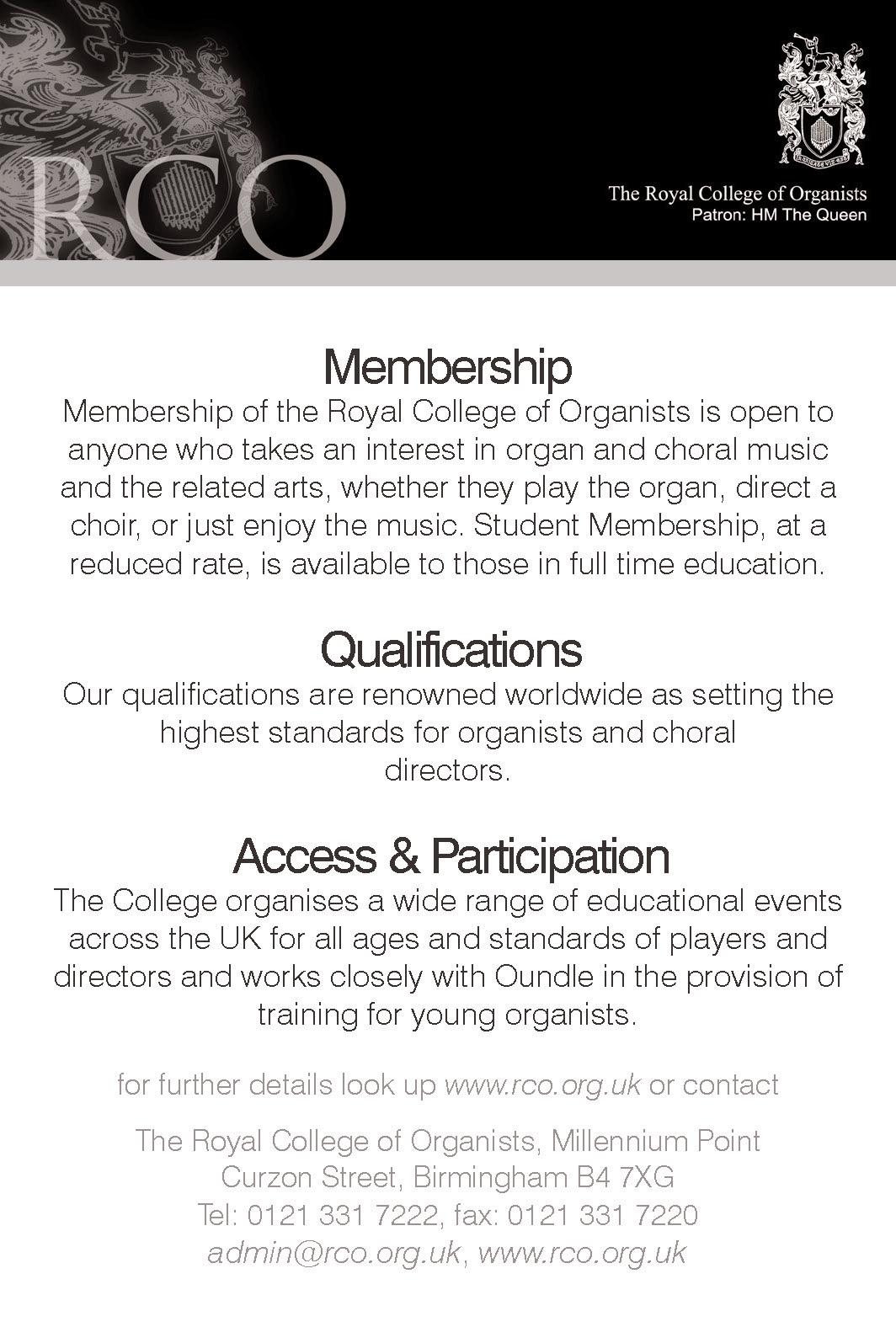
Watch this space! I am planning more recordings but I’m not giving away my ideas. Keep an eye on www.nieminski.com for details in due course!
How does it feel taking over as the number one in a cathedral where you have been the assistant organist? Does it mean less organ playing?
Great, in that I already know I love working there, but daunting in the way that I imagine that most folk going to a full-time No 1 position will feel, and rather privileged, bearing in mind how rare it is for an internal appointment to be made. It’ll mean less service playing, of course, but more concerts.
If you could commission a choral work what text would you choose? And who would you like to set the words to music?
Shame there’s nothing biblical about cats. Numbers 11:5, perhaps? Philip Moore or Judith Weir.
What are the challenges facing church musicians today? For anyone trying to further him/herself, how about the fact that there are so many people chasing so few jobs?
What was the last book you read?
Terry Pratchett: Equal Rites.
What was the last CD you bought?
Mercurial by the Asylum Street Spankers, an off-the-wall
trad-jazz/country/rock-influenced combo from Austin, Texas.

What are your hobbies?
Cats. Going to village events in Gavinton, Berwickshire. Beer and cigars. Jazz clubs (I was a regular at the 606 Club when I lived in London).
‘The Queen’s attendance at the annual dedication service at St. Bart’s in London was memorable; I kept her waiting at the beginning, because no-one flicked the organ cue light on.’
The century or so before the Reformation had seen a period of enthusiastic expansion in the provision of choral music, which left most cathedrals with two singing ensembles. Monks or canons (depending on the type of foundation) formed a resident community which sang the plainsong offices. Laymen and boys, on the other hand, were employed as a Lady Chapel choir to sing votive Masses and antiphons polyphonically. While a few of the more musical monks and canons may have joined in with the lay group, they were essentially two choirs, with clearly distinct liturgical and musical functions.
At the Reformation cathedral musical life changed. A radical simplification of liturgy dispensed with most of the daily offices, scrapped all votive material, and replaced the numerous daily Masses with perhaps a monthly Communion. The two singing groups now merged into one unit, producing a cathedral choir which now consisted of lay and ordained men together, all performing a very similar role. A minor canon did little that a lay clerk did not also do.
You might expect that, for similar tasks, lay and ordained choirmen would receive similar pay. But in fact, this was not the case. Typically, a lay clerk would earn just
James Saundersunder £7 a year for his duties, where a minor canon would take home around £10 per annum: over 40% more. The differential is in part explained by the social status of the clergy, but only in part.
(Minor canons were, in truth, near the bottom of the clerical heap, with few claims to special honour.) The fact that they were paid so much more than lay colleagues was really a hangover from the past. It betrays an (by now, rather outdated) assumption that minor canons were the full-time liturgical community, and lay clerks just the sessional helpers.
It began to seem as if those doing the most were being paid the least. Not surprisingly, anger mounted. An early seventeenth century, anonymous treatise on music which survives in the British Library (MS Royal 18 B XIX) succinctly captures the sense of injustice: ‘as the manner of our English service is, [minor canons] do little more in the service than the lay singingmen do, although they have almost twice so much wages’.
The significant differential might still have been reckoned fair if minor canons had been loaded with extra administrative and pastoral duties to fill their day, but this was not the case. Quite the contrary! All over England, minor canons seized the opportunity of light duties in the cathe-
drals to take additional paid employment elsewhere. In 1568, it was reported from Durham that ‘George Winter is continually absent, Thomas Pentland, John Brown [and] Thomas Matthew, pettycanons, are away on Sundays and Holy Days, so the choir decayeth’. From Rochester, it was reported that the minor canons were ‘allowed all to be absent at once, saving one, so the choir is disfurnished’.
In theory, such neglect should not have been possible. The governing statutes of cathedrals required all choirmen to be continually resident. Absence even for a single day or night was forbidden, except by permission of the dean. Sometimes statutes even set out fines for absence, emphasising that attendance was expected at every service. Allowance was made for choirmen to have limited holidays (the Dean and Chapter of Norwich was generous enough to allow forty days a year in 1566), but they were strictly regulated to ensure that the choir did not suffer from unauthorised absences.
That was the theory, but practice was rather different. The chapter of Peterborough said in 1595 that it would impose fines ‘if upon every Sabbath or other Holy Days, there shall not be present, at the least, two of the pettycanons from the beginning unto the end
of divine service in the forenoon, and in the afternoon, at the least, four of them likewise present’. Quite evidently, the authorities here had capitulated in the battle to keep minor canons’ noses to the grindstone. They paid six at this time, and the decree thus expects (indeed, permits) two-thirds of them to be absent from morning service.
It was the same in Chichester. The Dean and Chapter had admonished the priestvicars in 1601 that ‘neither they, nor any of the rest of their company should be absent from service… at any time hereafter’, but in 1619 it was being reported that ‘the residentiaries have divers times been driven to perform the service in the choir
Without doubt, some priest-choirmen did still play an active musical role. Dobson’s Drie Bobbes dates from late sixteenth century Durham, and is a humorous account of the rumbustious life of George Dobson, a cathedral chorister. Dobson’s much-persecuted uncle is one of the minor canons, and explicitly said to have been given the job ‘for his exquisite skill in music’. At one point in the book, he is described as having ‘newly come home from the minster, where (according to his custom) he had been helping to sing divine service’, something he did ‘twice every day’. In real life, Dean Goodwyn of Canterbury claimed in 1573 that ‘he hath of himself placed ministers,
analysis of choral balance in Peterborough Cathedral choir suggests that if some minor canons were incapable of singing, it was not a major musical problem. Dr Brian Crosby has concluded much the same about Durham. The lay clerks were the basic singing unit, he says, and while their ordained colleagues sometimes performed in the ensemble, they were ‘additional as opposed to fundamental’ to it.
The conclusions of modern scholarship is reinforced by contemporary evidence. Proposals for new statutes for Norwich, c.1570, described minor canons simply as priests ‘such as shall give themselves continually to the study of the holy scriptures and to the service of Almighty God’. Only
for want of a vicar’. Succentor William Lawes quite correctly pointed out in 1622 that statutes of the College of Vicars Choral still required all priest-vicars ‘to attend continually (both night and day) their service in the quire’. Nonetheless, one of them, Godfrey Blaxton, brusquely demanded ‘that liberty, which I have ever had, to attend my course in the choir for my week, and give all attendance at other times which I can’. Soon, the fact that ‘the vicars… by consent read prayers according to their several weeks’ was reported without comment.
It becomes clear from evidence such as this that, although the presence of all minor canons was required by cathedral statutes and preferred by governing chapters, it was only actually necessary (or usual) for a proportion to be present. Daily services could continue perfectly happily with only one or two in attendance.
This begs the question of what exactly was required of a minor canon in musical terms. Although postReformation treasurers’ books continue to treat them as if they are an integral part of the singing choir, was this anything more than administrative fiction? Was the typical post-Reformation minor canon still a musician?
but not without allowance of their skill in music by the choir’. In similar vein, Bishop Freke of Worcester ordered in 1589 that ‘none shall be chosen or admitted into the room… either or pettycanon or (lay) singing men, but such as shall be proved and found very fit and sufficient both for voice and knowledge in song to furnish such places’. Minor canons of St. Paul’s Cathedral assured Archbishop Whitgift that ‘from our youth hereto (we) have been brought up and employed only unto music’.
In the light of statements like these, it is apparent that many minor canons were still expected to have a serviceable voice and reasonable technical ability. And of course, some had much more than a basic competence. Of the Durham minor canons, John Wells kept ‘song books’ in his house, Christopher Smith a ‘pair of virginals’, and William Smith (when not composing Preces and Responses which would still be sung hundreds of years later) was to be seen playing the clavichord. Clement Woodcock, a composer of consort music, was appointed priest-vicar of Chichester ‘so long as he shall serve in the place of organist’.
Other evidence, however, suggests that minor canons were not always musically indispensable. Dr Ian Payne’s careful
the lay clerks were to be ‘expert men in plainsong, pricksong and descant’. This may have an expression of intent, rather than a description of reality, but it shows the way cathedral authorities were beginning to think.
Evidence from another cathedral suggests that Norwich was not the only establishment thinking along such lines. At Gloucester Cathedral, it is clear that some of the minor canons were musically incompetent and had been appointed on account of other abilities or connections. A complainant alleged in 1584 that ‘apt and sufficient men in song’ should have appointed, but ‘some of them are not so sufficient as is required… viz Mr Ward, but yet for other good and necessary causes he is tolerated withal, and allowed his room by patent. Sir William Fry is altogether insufficient in his song, and can not so much as sing the psalms nor begin service in plain tunes’. At Rochester too, men had been ‘admitted having no skill in song’.
What this all shows, is that the later sixteenth century was a significant time of change for the cathedral choirs. Cathedral statutes and more determinedly conservative cathedral chapters tried to ➤
maintain a pretence that choir members were still full-time liturgical functionaries, living by the collegiate model of preReformation days. But it was gradually becoming apparent that change was inevitable. The Reformation’s emphasis on preaching skills and suspicion of choral music meant that there was little encouragement for ordained men with musical ability. A cathedral post was no longer as attractive as it once had been. As early as the 1540s, the choir at St. George’s, Windsor was said to be not ‘so well furnished with priests that are cunning singing men, for the rareness of them, as it might have been in times past’. Lincoln
had to admit laymen as Vicars of the Second Form in 1556, owing to the group’s depleted numbers. Canterbury appointed three lay substitutes to its choir in 1557, unable to replace three minor canons who had left for the Chapel Royal. As time went on, more and more minor canons got married, lived outside the cathedral precincts, and looked after a parish. The old collegiate ways were vanishing fast. Sooner or later, every cathedral had to adjust its expectations, as it realised post-Reformation ministers were not willing to commit as much time and energy to the choir as their preReformation counterparts.
Many deans and chapters actually embraced the changes, realising that there was no way they could keep as many as twelve minor canons gainfully employed when there was so little for them to do! Others were less keen, meaning that different cathedrals reacted to the withdrawal of their minor canons in different ways. Some cracked the whip and tried to enforce regular attendance as if nothing had changed. Some plugged gaps with laymen on an ad hoc basis. Others pretended that there was no problem, and quietly employed men without musical skills – ‘ignorant pettycanons which know no more what belongeth to a singingman than a singingman can judge who is fit to be a dean or prebend by his learning’.
What is true in all cases, however, is that the lay clerks became ever more important to the choirs. By the middle of Queen Elizabeth I’s reign (at the very latest), music in cathedrals could not have carried on without them, and the balance of our choirs today was rapidly being established.
Revd Dr James Saunders is a parish priest and prison chaplain in the Diocese of Peterborough.
Saturday 12 November2005
An Open Day for prospective choristers aged 6-8 yrs and their families.

Boys 7-9 yrs – Saturday 21 January 2006
Girls 7-9 yrs – Saturday 4 February 2006
All children are educated at Salisbury Cathedral School. For an informal discussion with the Director of Music and/or further details of the Open Day and Voice Trials please contact:

The Director of Music
Department of Liturgy and Music at Ladywell
33 The Close Salisbury SP1 2EJ Tel: 01722 555148
‘The Reformation’s emphasis on preaching skills and suspicion of choral music meant that there was little encouragement for ordained men with musical ability.’
THE RESURRECTION premiered in Salisbury Cathedral on Saturday 26th March 2005. Music by Simon McEnery, libretto by Jeremy Davies.
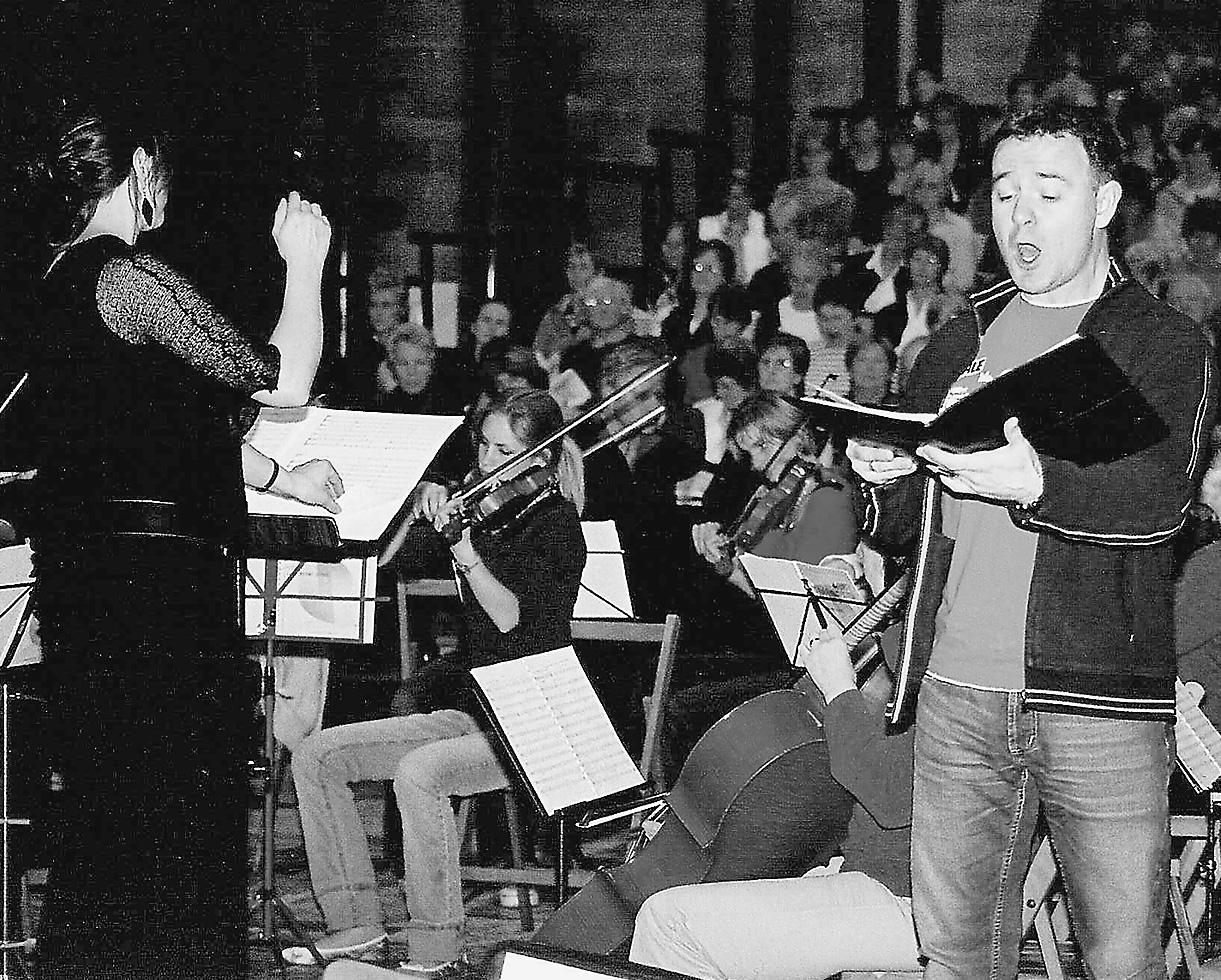
Easter brings the best possible news for Christians. And here is more good news: in Salisbury Cathedral on Holy Saturday a packed audience experienced the world premiere of The Resurrection – an oratorio commissioned by local benefactors, supported by Churches Together in Salisbury, featuring a local librettist, a local composer, 4 soloists, the Salisbury Community Choir, the Farrant Singers, the Romsey Singers, and The Resurrection Orchestra, led by John Ryan. A wonderful meeting of patronage and creativity, enthusiasm and courage.
Based on St. John’s account of the Resurrection narrative, Canon Jeremy Davies’s libretto skilfully combines the visionary, the challenging, the lyrical, the colloquial and the boldy off-beat, such as Jesus’ words in ‘Fishermen’:
“Come for breakfast, bring the fish you’ve caught…
I need you to help me with my task; For you and I have bigger fish to fry.”
A 70-minute work requires variety of mood and particularly of pace from the composer and Simon McEnery responds well. He describes his style as somewhere between an oratorio and a musical: a true description. His use of string orchestra and piano (skilfully played by Colin Howard) seems more effective in its accompanying role than its purely orchestral sections. Atmosphere is stronger than development. He enjoys using repeating figures – most effectively in the cumulative excitement of ‘The Upper Room’. He also favours very high notes for soloists which they rose to magnificently, particularly the soprano, Imogen Roose.
The enthusiastic choir clearly relished the
music, and coped well with material that is more taxing in its harmony and rhythms than Stainer’s Crucifixion – a work whose accessibility sets a standard for this oratorio, we are told.
Fiona Clarke conducted with great authority, and guided and encouraged her performers with a sure and golden touch.
The 12 sections (and how good it was to be provided with the full text) included many felicitous touches. ‘Mary in the Garden’, with its evocative orchestral introduction, provided the mezzo Carolyn Jackson with tender, lyrical music which she sang caressingly and then the soprano was offered a change of mood – urgent and breathless:
“We didn’t get it, not for a moment
The sense that the Kingdom is close…”.
and there were three rather daunting top C sharps in a row for:
“And he drew God for us.”
The double basses’ agile repeated figure at the beginning of ‘The Upper Room’ is wonderfully transformed into a beguiling, slow waltz for ‘Thomas’. No doubt about Declan Kelly’s mastery here of sustained high notes, beautifully sung. And Dyfed Wyn Evans was equally convincing in ‘Fishermen’.
Most moving of all were the four soloists, in unaccompanied harmony, musing on faith and doubt. The librettist’s painfully honest aphorisms drew expressive treatment from the composer; the whole audience seemed to hold its breath. This meditation brought us closest to the spirit of Stainer’s Crucifixion, but with more profound questions asked.
The final section, The Resurrection, with its nautical imagery:
Heaven is glimpsed through the rigging… The stars look down in silence.’
shimmers mystically in the rich tonality of D flat major, happily reminding us of the final moments of Vaughan Williams’s Sea Symphony (and also perhaps of the faith and courage of lone round-the-world sailors). The music powerfully evokes a vast seascape and a glorious eternity beyond, drawing us all gently into stillness and silence. And then the audience responded rapturously.
Innovation and excellence in a warmly welcoming cathedral. No wonder people come in their hundreds. And hats off to David and Anne Cooke for commissioning this challenging new work.
Barry Ferguson
Congratulations
Past Chairman Alan Thurlow and now one of our Vice-Presidents, has been honoured with a Lambeth Doctorate of Music from the Archbishop of Canterbury.
Memorial Service
Tony Harvey’s memorial service will be held in Lincoln Cathedral on Friday May 20th, 5.30pm. The address will be given by Dr Simon Lindley. The service will be preceded by tea in the Chapter House at 4.30pm.
In Memoriam – Brian Runnett
Brian Runnett was organist of Norwich Cathedral from 1967 until his tragic death in 1970. It is 35 years since hedied at the age of 35 having been born in 1935. In his memory Graham Barber is giving an organ recital in Norwich Cathedral on Wednesday 13th June 2005 at 7.30pm. Tickets are £8 and includes interval refreshments. See advert on page 35.
Of course, there is no shortage of music festivals nationwide, but what makes Edington unique is the backbone of liturgy around which it is structured. In an age where recorded music is so widely available, one of the things which makes this festival so special, is the fact that all the music is heard within the context of worship – there are no concerts, just four services daily; no grand orchestral collaborations, just beautiful artistry to the glory of God. The festival’s founder, Sir David Calcutt, envisaged it as: “a festival in which God is worshipped through beauty – beauty of sight, shown or seen in stone or ceremony, beauty of sound, made or heard in the word sung or spoken.”
From humble beginnings, when six Cambridge choral scholars and four trebles gathered to sing for a few days, to the present day, with a whole week of services sung by three separate choirs, the ethos has remained essentially unchanged: that the daily routine of worship is central to our existence. Today these three choirs are: the Nave Choir, consisting of 16 boys and 12 men from cathedral and collegiate choirs (conducted by Robert Quinney); the Consort, a mixedvoice group numbering about 16 adults (conducted by Jeremy Summerly); and the Schola Cantorum, a group of 12 men singing exclusively plainsong (directed by Andrew Carwood).
The basic pattern of worship consists of four sung services each day: Matins at 9.00am, Solemn Eucharist at 11.30am, Evensong at 8.00pm and Compline at 9.15pm. At the heart of each day is the Eucharist, and all three choirs always sing at this service. During the course of the week the whole gamut of mass settings is covered from plainsong and Renaissance polyphony, through to Classical Viennese, Romantic and

For 50 years now, the Priory Church in Edington, Wiltshire, has played host to a Music Festival, or, to give it its proper title, a Festival of Music within the Liturgy.
more modern settings. The remaining music is chosen to reflect the theme of the day, complementing or contrasting with the mass setting. Evensong is generally a ‘traditional’ cathedral-style service, but the presence of more than one choir enables a wider variety of styles and repertoire to be covered, including at times a number of polychoral works.
Matins and Compline are sung entirely to plainchant by the Schola Cantorum. The morning office is perhaps one of the most uplifting moments of the day: as the sun streams through the large windows in the Chancel, there is something wonderfully understated about hearing the psalms, canticle and antiphons of the day chanted in perfect unison. By contrast, the gentle candlelight at Compline draws one into introspection and quietude, as if one has been transported back centuries, eavesdropping on the monastic Opus Dei. One of the real joys of having a choir singing exclusively plainsong all week is the professionalism they bring to it. All too often, plainsong is sung without any great understanding of the notation and its subtleties; at Edington however, the Schola totally immerse themselves in the style, singing from the original fourline stave notation, bringing a freshness and spontaneity to the chant. One might think that the offices of Matins and Compline were a poor relation to the polyphony of Eucharist and Evensong, but any regular to the festival would be able to tell you otherwise!
The 16 boys are recruited from a selection of cathedrals and collegiate choirs, in recent years from Westminster Abbey, Westminster Cathedral, Salisbury, Wells, St. Paul’s, Durham, Southwark, Winchester, New College, Oxford, and St. Patrick’s, Dublin. Usually these boys are some of the most senior in their own choirs, so to have a whole choir of strong voices gives both a mature sound, and also makes sightreading somewhat easier, which is a real necessity given the amount of music they have to learn. Some is obviously familiar, but there is always some repertoire which will be new to them, and moreover, they have to be ready to broadcast on the BBC Radio 3 Choral Evensong after just three days together, which is no mean feat. They are supported by a back row of men from similar choirs, some choral scholars, other more experienced lay clerks.
The Consort sings almost entirely a capella works, specialising in both Renaissance polyphony and 20th century pieces. Under the experienced guidance of Jeremy Summerly, they are able to perform pieces which might not normally be tackled by other choirs, perhaps because of their length or complexity of part-writing. They often sing in the slightly more generous acoustic of the Chancel, which particularly suits the rich female top line. The three choirs certainly complement each other and there is very little overlap of repertoire styles between them.
Although there is inevitably a huge amount of music to be learnt in the course of the week, the festival is definitely not all hard work. Each morning
some 300 households to host a musical festival is a daunting prospect, and the involvement of local people has always been crucial to its success throughout the years. In this respect Ralph Dudley’s vision was formative because he encouraged everyone to make it a joint venture between village and musicians. Whilst in some ways the influx of so many singers and congregation is clearly an invasion, nevertheless for a large number of the villagers it is also a reuniting of old friends, an opportunity to celebrate what is best in the Church, and a chance to be part of something unique.
The first year was modest in its proportions, lasting just four days and with only one sung service a day. It is easy, however, to lose sight of how important
is taken up with rehearsals and services, but every afternoon (apart from the Wednesday for the broadcast) is given over to free time, as it has always been. The boys are taken on various outings including trips to Longleat, Stonehenge, Wookey Hole caves, one of the nearby swimming complexes and much more besides. Both the administrators and also some of the adult singers help on these excursions too, and this is just one example of the way the festival community draws together socially as well as musically.
The first festival took place in August 1956, under the leadership of the then vicar, Ralph Dudley and David Calcutt (recently graduated from Cambridge as a choral scholar). For a place of only
this was as a first step: Edington Church had not known daily sung services for generations, and there was no assumption of grandeur – it was, after all, just a group of friends making music together. By the end of this first year, though, it was clear that the experiment would be repeated and thus the festival was established. In these very early years, services were also sung in the nearby villages of Heytesbury, West Lavington and Steeple Ashton, but it quickly became evident that Edington was the perfect venue for the whole week, both as a practical and also spiritual home.
It was already clear by the fifth festival, in 1960, that something special had been established and, moreover, that it was here to stay! David Calcutt, in his
‘It was already clear by the fifth festival, in 1960, that something special had been established and, moreover, that it was here to stay! David Calcutt, in his introduction to the festival that year, wrote:
“It has become increasingly evident… that there are others besides the singers who derive pleasure, not to say inspiration, from the services.”’
introduction to the festival that year, wrote: “It has become increasingly evident… that there are others besides the singers who derive pleasure, not to say inspiration, from the services.” The congregation are as much a part of the worship as the singers and the clergy, and it is this bond between these groups which draws people back year on year. There are those who come for a single service, right through to those who attend all 25. Obviously they all come because they enjoy the music, but a good many come for more than that. There is something wonderfully uplifting about being part of a large congregation that not only appreciates the quality of what is being sung and spoken, but actually believes it too.
John Harper wrote in 1973: “there is never a notion of concerts with moments for prayer. Rather, the balance of actions, words, music, and silence should achieve that artistic unity that is true liturgy.” Undoubtedly the decision in the late 1970s to have Compline sung by a dedicated choir specialising in plainsong rather than by the whole congregation was seen by some as detracting from the congregation’s involvement in the worship. Instead though, as Harper commented, it merely changed it: “it is not the intention to exclude, but rather to involve by
opening minds to new thoughts, to ponder in beauty, and so to pray.”
Liturgy and worship would, of course, be incomplete without the input of the festival clergy, and their important role in the week is vital to the success of the services. The mix of ‘home team’ clergy and various invited priests, usually about five or six in total, brings many benefits. It not only enables them to share out the considerable workload of so many services but also it enables the congregations to benefit from a wide range of different ideas and theological arguments. Indeed, it is a real privilege to hear preaching of such quality to accompany the musical excellence which people have come to expect. Like the musicians, the clergy team mixes newcomers with the old hands; particular mention must of course go to Canon Paul Rose who has been involved for well-nigh 40 years!
The festival has, from the outset, had the unwritten intention of encouraging young talent and providing an opportunity for young singers to meet each other. There is something strangely alluring which draws singers back from one year to the next and there is a real sense of picking up where one left off 51 weeks earlier. Often boys, who first came as trebles, come back years later
to any one of the three choirs; others like Geoffrey Webber and myself go one stage further to become festival director, which does prompt one to look at each new intake of choristers and wonder which one might follow in the directorial footsteps!
Right from the earliest years, there has always been a sense that the festival should not only celebrate what is familiar in church music, but also look to explore as well, by commissioning new works. The list of such works is impressively long and includes a good many familiar names: Francis Grier, Grayston Ives, Simon Preston, Philip Radcliffe, Francis Pott, John Harper and Andrew Gant to name but a few. Some of the commissions have found their way into the mainstream repertoire (such as Radcliffe’s responses and Ives’ evening canticles), others lie waiting to be rediscovered, but it is a central part of our festival outlook that we should be at the forefront of composition. In celebration of this year’s 50th anniversary, we have commissioned Judith Bingham to write a setting of the Magnificat and Nunc Dimittis, which will be performed during the BBC broadcast.
Each year the festival director chooses a particular theme to explore during the course of the week, ranging widely, for example from an exploration of the

‘The festival has, from the outset, had the unwritten intention of encouraging young talent and providing an opportunity for young singers to meet each other. ’
Psalms to a particular monastic Rule, from John Bunyan’s Pilgrim’s Progress to the Gospel of St. John. A particular aspect of this theme is then chosen for each day and explored through music, readings and the sermon, and the commissioned works often reflect the theme too.
One advantage of a congregation made up entirely of music lovers is that they always sit still throughout organ voluntaries, and this does add greatly to the completeness of the worship. Occasionally other instruments have been used to great effect too such as harpsichord, chamber organ, viol consorts and various solo instruments, but the pitch of the organ and the lack of space in the church, have tended to restrict this a little. Liturgical drama too has featured from time to time, particularly during some of the Sequences of Music and Readings which sometimes replace Evensong.
One of the pleasant by-products of the fact that the festival has grown in size over the last fifty years, is that there is an ever-greater diversity within the assembled musicians, professionals and amateurs alike join together entirely voluntarily. Indeed, everyone, from the youngest chorister right through to the administrators and director, actually pays for the privilege of taking part in
the festival. This has a wonderfully levelling effect on us all; there are singers who could be earning their fortune (relatively!) standing alongside others for whom it is simply a hobby.
Without the incredible generosity of the villagers of Edington and the surrounding area in providing bed and breakfast free of charge, it would not be possible for the festival to take place. The contributions that the singers pay helps towards the cost of lunch and supper, provided in the Parish Hall. The only other sources of income are the BBC broadcast fee and the collections taken at services. In recent years it has been particularly pleasing to see a steady increase in service collections as people recognise that financial support is essential if the festival is to thrive.

It was with the aim of helping to secure a more stable financial future that the Festival Association was set up in 2000, with charitable status. Through grants, the festival is now more easily able to commission new music, and purchase and properly care for robes; the Association also helped to finance a highly successful CD recording of plainsong sung by the Schola. Alongside this, the Friends of Edington Priory Church have over the last half-century contributed enormously to the upkeep of
such a magnificent 14th century building, and it is a mark of the close links between festival and village that many festival participants are also Friends of the church.
Whilst the village of Edington itself is somewhat lacking in facilities (the nearest shop being a few miles down the road in Bratton), the Lamb Inn does a marvellous job in catering for the needs of thirsty singers. Musicians are not known for their abstinence, and the Lamb certainly does good business during festival week.
Congregation and singers alike mingle, along with some of the more hardy villagers, and the festival pool competition is always hotly contested –although the clergy team regularly rely on divine intervention to cover for a lack of real talent in this field!
In celebrating our 50th anniversary, the Edington Music Festival inevitably looks back with pride on a rich history, but we also look to the future too, encouraging young musicians, inspiring congregations and, above all, helping to cherish the musical heritage of which we are just one small part. We look forward to welcoming new faces and old friends alike at the 50th festival, which runs from the afternoon of Sunday 21st to lunchtime on Sunday 28th August 2005.
‘...the Friends of Edington Priory Church have over the last halfcentury contributed enormously to the upkeep of such a magnificent 14th century building.’
Directors of the Edington Music Festival
David Calcutt1956-1964
Nicholas Hinton1965-1970
John Harper1971-1978
John Hardy1979-1982
Interregnum1983
Geoffrey Webber1984-1986
David Trendell1987-1991
Andrew Carwood1992-1997
Peter Barley1998-2003
Julian Thomas2004 –
Conductors at the Festival Men & Boys’ Choir / The Nave Choir
Warren Green1956-1960
Simon Preston1961-1963
David Calcutt1964
Richard Seal1965-1968
Simon Preston1969-1970
Grayston Ives1971-1976
John Harper1977-1980
Geoffrey Webber1981-1983
Edington is a small village on the edge of Salisbury Plain in Wiltshire, 4 miles east of Westbury.
The Priory Church was built in 1352 by William of Edington, Bishop of Winchester and Chancellor of England, as part of an Augustinian monastery on the site.
Information about the festival programme can be obtained from John d’Arcy, The Old Vicarage, Edington, Westbury, Wilts. BA13 4QF; Tel/Fax 01380 830512
Information about the Edington Music Festival Association (Registered Charity no.1099266) can be obtained from Michael Cooke, Aeron House, Llangeitho, Tregaron, Ceredigion, Wales SY25 6SU; Tel 01974 821614; e-mail: joycooke@aol.com
Copies of the CD of plainsong sung by the Schola are available, priced £10, from the Association Treasurer: Justin Lowe, 192A Bravington Road, London, W9 3AP.
Julian Thomas has been Director of the Edington Music Festival since 2004, having previously sung as a treble and in the plainsong Schola, as well as assisting with playing the organ. He is currently Assistant Organist & Director of the Girls’ Choir at Norwich Cathedral, where he combines a busy career with teaching, recital work and various choral conducting commitments including the Norwich Cathedral Consort and the University of East Anglia Choir. He is also a Council Member of FCM and Diocesan representative for Norwich.
A highly selective list of names associated with the festival over the last 50 years: Ian Aitkinhead, John Mark Ainsley, Jonathan Arnold, Richard Baker, Robin Blaze, James Bowman, Paul Brough, Timothy Brown, Simon Carrington, Andrew Carwood, Michael Chance, Rogers Covey-Crump, Laurence Cummings, Jeremy Filsell, John Eliot Gardiner, James Gilchrist, Nicholas Hinton, Alastair Hume, Charles Humphries, David Hurley, David Johnston, Brian Kay, Carys-Anne Lane, Andrew Lumsden, Michael McCarthy, Rufus Muller, Francis Pott, Simon Preston, Richard Seal, Richard Shephard, Jeremy Summerly, David Trendell, Andrew Tusa, Matthew Vine, Geoffrey Webber, Edward Wickham, Peter Wright.
Peter Wright1984-1990
David Trendell1991- 2000
Robert Quinney2001 -2003
Paul Brough2004
Robert Quinney2005 –
Second Group / The Consort
Godfrey Salmon1966-1970
John Barnard1971-1972
John Harper1975-1976
Geoffrey Webber1979-1980
Jeremy Summerly1981- 2001
Paul Brough2002
Jeremy Summerly2003 –
Plainsong / The Schola Cantorum
Warren Green1961-1963
Peter McCrystal1974-1997
Andrew Carwood1998 –
Organists
Simon Preston1956-1960
Robert Bottone1965-1967
Keith Elcombe1968-1970
John Harper1971-1973
John Pryer1974-1976
Geoffrey Webber1977-1978
Peter Wright1979-1983
Andrew Lumsden1984-1990
Jeremy Filsell1991-1994
Stephen Farr1995
Peter Barley1996 - 1997
Robert Quinney1998 - 2000
Matthew Martin2001 –
Vicars of Edington
Ralph Dudley1956-1982
Maurice Bird1982-1987
Neil Heavisides1988-1993
David Belcher1995-2003
Interregnum2003
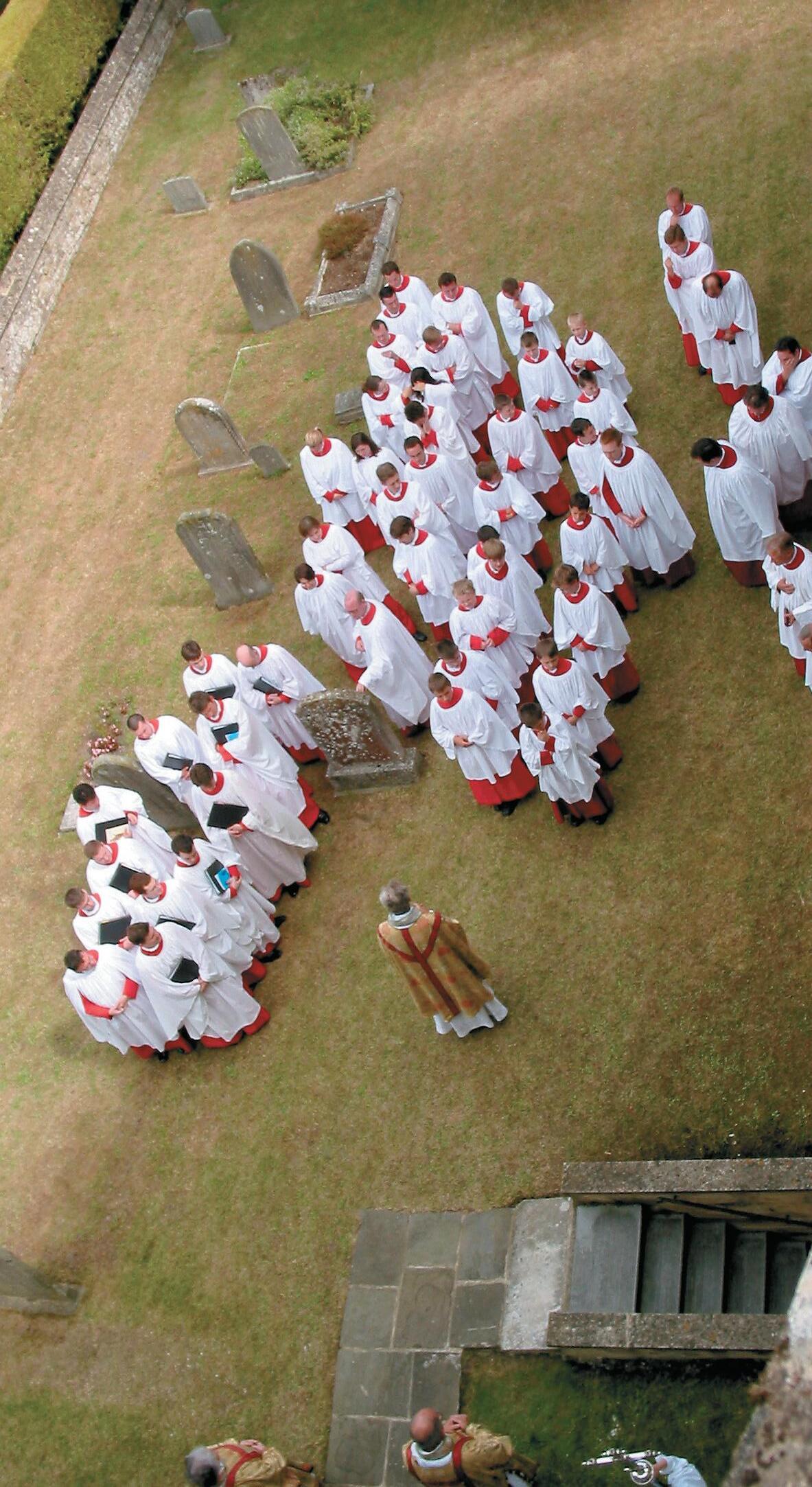
Graham Southgate2004 –
Cathedral Music
It is 35 years sinceNorwich’s highly gifted organist& master of the choristers died in acar accident aged 35.To mark the ‘thricethirty-five’coincidence
on Wednesday 13th July at 7.30 pm
his only organ scholar GRAHAM BARBER will give an organ recitalof works associated with his master,including Toccata in memoriam Brian Runnett by Francis Jackson, Meditations by Arthur Wills and the last work played by Brianin his Westminster Abbey recital the day before his death.
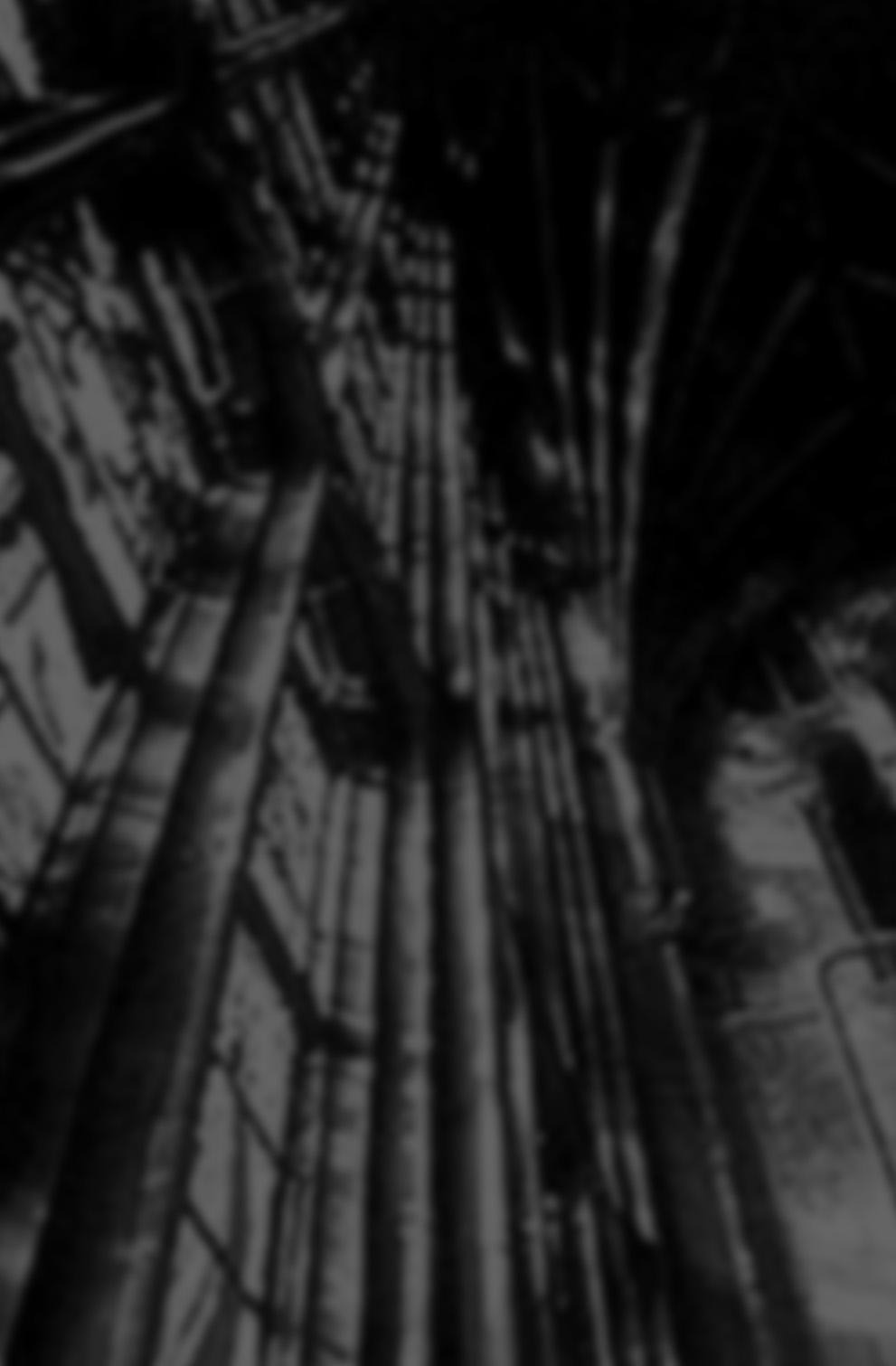
Admission £8.00 including refreshments
All proceeds in aid of Norwich Cathedral Choir Endowment Fund

We provide all types of new instruments
New Organs

Restoration
Rebuilding
Tuning Maintenance
We can give unbiased advice for all your requirements
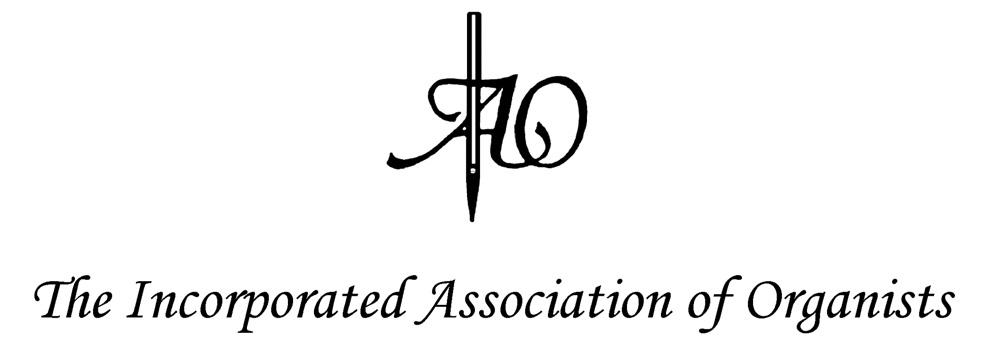
Hillside Organ Works Carrhill Road, Mossley Lancashire OL5 0SE
Tel: 01457 833 009
Fax: 01457 835 439

St JOHN’s COLLEGE, CAMBRIDGE
Formal Voice Trials for boys aged 6 – 9 years old, who are interested in admission to St John’s College Choir, are held in spring and autumn each year.
For further details please contact Nicki Bailey at St John’s College School on 01223 353652 or by sending an e-mail to admissions@sjcs.co.uk
Unlike too many English towns, Wakefield has largely retained its mediaeval street pattern despite the usual 1960’s desire to eliminate such anachronisms. Off the main streets there still exists a vast labyrinth of ancient alleys.
It is down one such that the determined explorer will come across Harry’s. It is too far from the Cathedral for a quick one between rehearsal and service; that is the role of the Black Rock, which serves excellent Tetley’s. Nor is it any good for post Solemn Eucharist rehydration, as it is closed on Sunday lunchtimes; the White Hart serves the lay clerks well at such times. It is in the mellow evenings that Harry’s comes into its own.
Its architectural heritage is somewhat dubious. No authentic marble urinals or magnificent mahogany carving; rumour has it that is a converted tea warehouse. What it does provide is a warm welcome (yes, even to querulous lay clerks), a wood fire, a splendid choice of quality beverages (Ossett’s Silver King being always on tap and always perfect), and a wonderful view of the Leeds to London railway line, which strides across the city on a long brick viaduct.
Such is Harry’s popularity that the
LAYCLERKS’ TALE
accompanying photograph (complete with honorary choir wife) had to be taken in the beer garden (ie alleyway). The railway line (alas obscured by a wooden gate lintel in the photograph) is the frequent haunt of Eurostars, as well as nasty buses-on-rails making their way to Manchester.
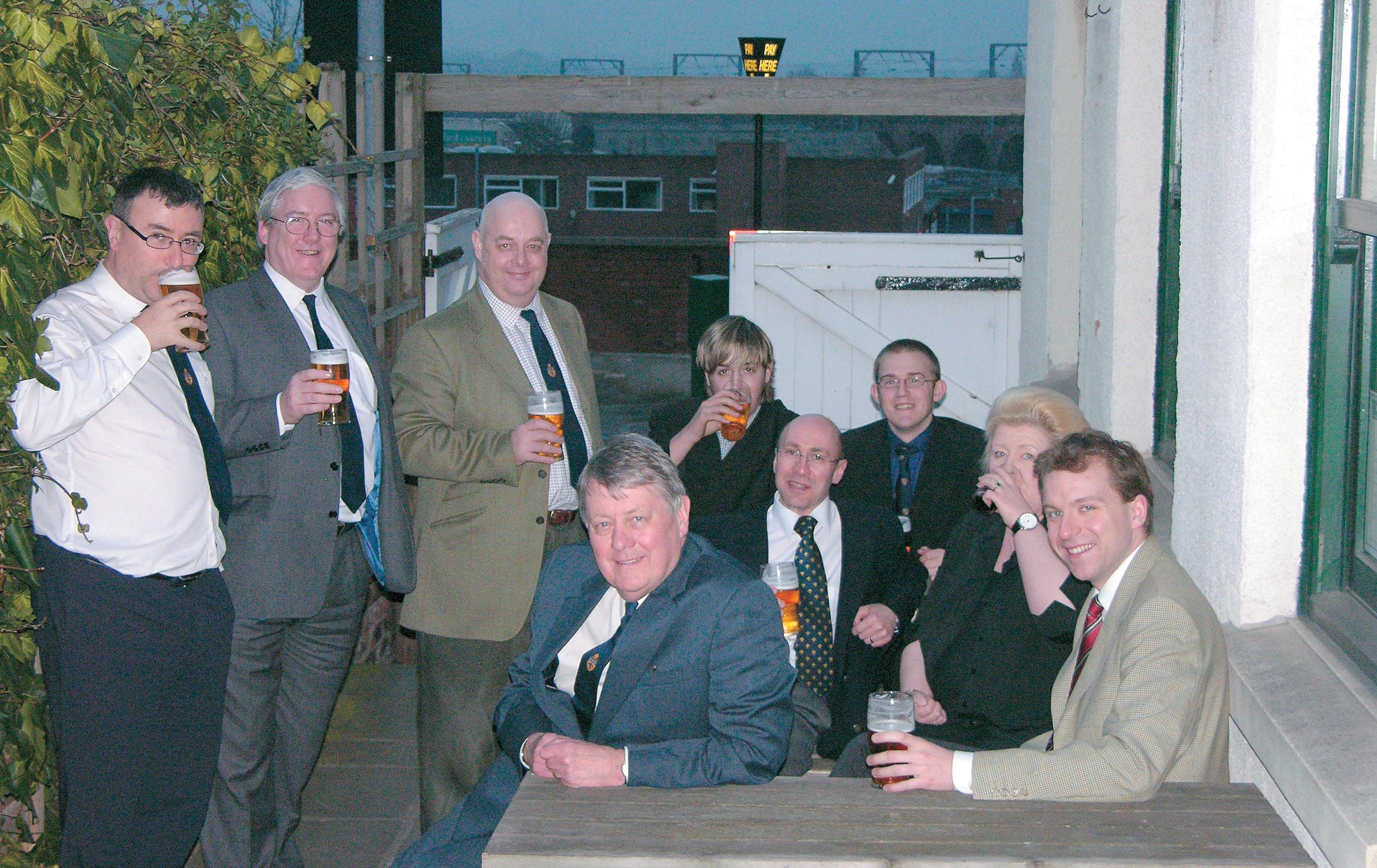
Next door, just behind the photographer’s back, is Wakefield’s best curry house, the Spice Cottage. Maybe when the Editor has exhausted lay clerks’ pubs, he can move on to curry houses which are an almost equally important part of the fabric of our cathedral choirs.
The photograph was taken after Music for Passiontide on Palm Sunday, the choir enjoying a brief respite before welcoming Her Majesty The Queen for the Royal Maundy in a few days’ time. Earlier in the day, the choir was treated to the sight of council decorators sprucing up the bollards and litter bins outside the cathedral. Alas, the surroundings of Harry’s did not appear to be in line for similar treatment, so presumably it is not on the route Her Majesty is planning to take. If it were, I am sure that she would be persuaded to visit Wakefield much more often in the future.
Where do lay clerks hang out in your part of the country? If your local hostelry is worth a mention drop the Editor a line along with a photo of the lay clerks partaking of a pint.
It is interesting to make comparisons from year to year: exceptionally 2004 gave us eight concerts featuring works calling for the participation of a large organ, for the very good reason that the Royal Albert Hall had its grand organ back, wonderfully well restored by Manders. It made its new Proms debut on the First Night but in a rather tantalising way: Martin Neary was invited to play just the opening 30 bars of the Bach Toccata & Fugue in D minor (BWV565) as we normally hear it on the organ. Then, at the point where the quasi-fugue starts, he stopped and the orchestra took over with Henry Wood’s orchestral version of it. This idea just did not work musically: of all Bach’s major organ pieces this one should not be interrupted at this point, but must flow segue into the fugal subject. This work would be better titled ‘Toccata with Fugue’; they are not separate movements, unlike most of Bach’s ‘ . . . & Fugue’ organ pieces. In fact it reverts to a very free style after 30 bars of the ‘fugue’, calling for manual-switching echo effects, thrice, linked by fugal sections in between, evolving into a recitativo style for the final 16 bars. As soon as it switched to the orchestra, the contrapuntal crispness was lost. It all smacked of gimmickry and seemed a rather patronising way of reintroducing Dr Neary, who is quite capable of giving an energetic performance of the complete work on the organ,
At the other end of the organ scale (Prom 14) was an In nomine by the Tudor John Taverner, which Catherine Ennis played so deftly on quieter stops on the Choir division of the Grand Organ, now possessed of a new clarity and lightness. Linked to this was an orchestral piece, Sir Peter Maxwell Davies’s First Fantasia on that same In nomine, an example of neat Proms programming.
One of the choral highlights was a performance of Bach’s Mass in B minor by the Monteverdi Choir and the English Baroque Soloists, with five vocalists, under the direction of Sir John Eliot Gardiner, whose reading of this towering masterpiece had a lighter urgency than we are accustomed to, which fully liberated the work’s marvellous vitality. Sir John has a fine judgement of the right tempo and phrasing, to keep the spiritual exaltation
alive and ensuring things never get heavy, as they used to with town hall performances(or RAH performances, for that matter). The obbligati were sparkling but I noted that the German bass singer was surprisingly weak throughout. Another, shorter, Bach choral masterpiece, his Magnificat (Prom 35) done by the Academy of Ancient Music, under Paul Goodwin, had a line-up of eight superb soloists, notably Emma Kirkby and Michael Chance. This also had the kind of light, idiomatic reading that we expect nowadays; these were ideal forces for it.
The musicians of the English Concert gave us a very fine baroque concert (Prom 47), from Handel’s My Heart is Inditing, via three arias by Arne sung by Emma Bell, whose coloratura singing was electrifying, and ending with a very lively rendering of Vivaldi’s Gloria, again featuring Ms Bell, with Ailish Tynan and Catherine Wyn-Rogers, all on top form. Andrew Manze directed.
Later the same evening, one of the concerts putting the organ in the spotlight (Prom 48), with Thomas Trotter on top form in some difficult works: Janácek’s Our Father for tenor, harp and organ; James Macmillan’s Le Tombeau de Georges Rouault, which makes inspired solo use of the large organ and builds to a huge climax before winding down. There was another work for large solo organ, by Petr Eben, Sunday Music – ‘Moto Ostinato’, which uses ostinato rhythms on the pedals and stabbing reeds.
The finale to this powerful programme was the world premiere of The Secret Garden, a BBC commission from Judith Bingham for the 75th anniversary of the BBC Symphony Chorus, of which she was once a member. This is one of the most imaginative contemporary works that I have heard, again making full use of a large chorus, supported by organ.
Ten days later (Prom 61), the King’s Consort and its Choir under Robert King delivered a wonderfully refined and idiomatic rendering of the Monteverdi Vespers of 1610 with ten distinguished soloists out in front. Another baroque concert (Prom 72) was for the tercentenary of Charpentier, presented by William Christie and Les Arts Florissants. This was gloomy going, with a long Requiem, devoid of colour or drama, in the first half. After
the interval came the lively Te Deum, whose splendid opening fanfare was chosen as the Eurovision march. On the Last Night Simon Preston gave a brilliant performance of the Toccata Festiva by Barber.
2005
This year’s Proms will present a new organ concerto by James Macmillan, with Wayne Marshall as soloist. There will also be six major choral works. Among the anniversaries to be marked will be the 60th of the end of World War II and the 200th of Nelson’s death; the former with Tippett’s oratorio A Child of Our Time under Sir Roger Norrington and the latter by Haydn’s Nelson Mass, done by Sir John Eliot Gardiner with the Monteverdi Choir (2005 is also the centenary of Tippett’s birth and Arvo Pärt’s 70th). Elgar’s Dream of Gerontius will be given by the Hallé under Mark Elder and Verdi’s Requiem is to be done by the CBSO Chorus and the BBC Philharmonic under Gianandrea Noseda. Beethoven’s Missa Solemnis will be presented by the Cleveland Orchestra under Franz Welser Möst and Brahms’s Requiem will be given by mainly BBC forces. Finally, I must mention, for me, the most venerable anniversary, the 500th of the birth of Thomas Tallis. This will be marked in a late Prom by Harry Christophers and the Sixteen, singing four pieces, including his greatest work, the 40-part motet Spem in Alium. A rich season for cathedral music lovers!
As in the 2004 Spring Edition, I am looking back at last year’s Proms and previewing the 2005 season, selecting only sacred choral and organ music, which is the remit of this magazine.
Thinking of suitable anniversaries this year, 2005 offers Tallis and Tippett, for example, both of whom will feature at the Southern Cathedrals Festival in Winchester this July (see further below). It was poignant, therefore, that January, the month of Sir Michael Tippett’s birth in 1905, this year saw the death at the age of 90 of the man responsible for arranging the first performance of A Child of Our Time. Felix Aprahamian, writer, critic, musical manager and so much more, had a particular feeling for French music and knew so many of those on the 20th century French scene. Indeed, he was honoured by the French Government for his contribution to the appreciation of French arts, though he is reputed to have declined a British honour. He was also a man with the gift of friendship and I am privileged to have been taught by him many years ago now at an evening class course on music criticism at the City Literary Institute. We were a mixed group, but we benefited enormously from his insights, his knowledge and above all, his encouragement. I recall that we were asked to name those composers in whom we had a particular interest; on being told (so I guess it must have been in 1976) that one of my group was S. S. Wesley, Felix simply replied ‘kinky’! Those of us who presume to write, owe him a considerable debt.
Mention of this year’s Southern Cathedrals Festival (and S. S. Wesley) leads to Winchester, since this year’s Festival will be held there between 21st and 24th July. Before then, the choir will have been globe-trotting –Florence (with which Winchester Cathedral is twinned) in April for a
trip which included a concert in Bologna featuring a new commission by the Cathedral from James Macmillan; Göttingen for the International Handel Festival in May (performances to include the Coronation Anthems and the Dettingen Te Deum) as well as Salzburg in June (Bach with Roger Norrington). Venturing north of Watford (I think) the choir will take part in the now traditional three choirs concert at the St. Albans IOF (11th July – just before the SCF).
Meanwhile, the Winchester musicians have been contributing to the Tsunami relief and other charitable fund-raising, while the men and girls have recently recorded for the Griffin label a CD of music particularly for female saints (composers include Hildegard of Bingen, Judith Bingham, Britten and Herbert Howells). The CD came out at Easter on the Griffin label GCCD 4049. The FCM local gathering has had to be postponed from this winter, but is now scheduled for Saturday 1st October – local members will be notified in due course.
Your correspondent only managed part of the splendid National Gathering in London in January, but I feel I must make mention of the Chapel Royal at Hampton Court where we were made particularly welcome and of whom we hear all too rarely. The recital after Evensong was a joy and showed the choir in fine voice under their director, Carl Jackson.
Other 2005 Gatherings of which I have been made particularly aware include Guildford on Tuesday 10th May (with a full programme) and Chichester on 12th November. The AGM and Summer Gathering will be held at Chelmsford (including a visit to Brentwood RC Cathedral) on 17th –
19th June. The Autumn Gathering will be at Brecon from 7th – 9th October.
Mention of Chichester reminds me that for some unknown reason we did not carry any report of the visit by HRH the Prince of Wales as long ago now as June 2003. My apologies to the indefatigable Hugh Curtis for whatever went wrong with the information chain.
Blackburn has a full programme of events in 2005: (Messiah 23rd April; B Minor Mass 21st May; Girls’ Choir visit to Prague in late July). Blackburn also boasts a splendid choir newsletter which should be required reading for Friends in that diocese – a feature it has in common with Chichester.
Canterbury is another choir on the move, with plans for a short tour to Holland and Germany after Easter, as well as the usual round of special events. Canterbury’s new Assistant arrived in January: Robert Patterson succeeds Matthew Martin, who is now Assistant at Westminster Cathedral. During the autumn term Andrew Parnell was Acting Assistant. In November 2004 the Canterbury Voice Trials took place in front of BBC South TV cameras – so that everyone was even more on their toes than usual. Other important events have been the dedication of a window to commemorate Alfred Deller in Broughton Aleph, concerts in no less than 10 churches in the diocese and the visit to Canterbury of the Supreme Catholicos of the Armenians. There was also a major fund-raising Gala Concert which raised a considerable sum for the Choristers’ Bursary Fund. On top of all that, there was a short visit to Terni, near Rome, to give a concert for an international

conference on the topic of Water.
On a much sadder note, there was a Memorial Service, sung by the Choir for Tom Stevenson-Rouse, a chorister from 1993 – 1997, who died after a long and tragic illness.
Cambridge continues busy, St. John’s Choir will be at Christ Church, Spitalfield on 16th June (Tippett, Tallis, Stanford and Wood) with other concerts at Brecon and Shrewsbury before a European tour in the summer. The Choir has produced its first ‘own label’ CD and a second is planned. They will also be recording a Mendelssohn CD for Hyperion. They will broadcast Evensong in June (mostly music by Tippett).
Jesus College will take part in two performances of Bach’s St. John Passion during Holy Week, and tours are being planned to Estonia and Ireland. As part of the Cambridge Summer Music Festival the College will host a ‘singing day’, offering children from the city the experience of a day’s singing activities.
King’s will be giving their traditional ‘May Week’ concert in Chapel on 20th June and in July will perform at the Rheinvokal Festival. A summer tour of Europe is also being planned. Forthcoming EMI recordings will include a new CD of John Rutter, with the City of Birmingham Symphony Orchestra. There will also be recordings of music by Purcell and a disc of carols that have been specially commissioned for King’s over the years.
Ash Wednesday this year saw a break with tradition as the Radio 3 Broadcast Vespers came from Westminster Cathedral. Whilst on the subject of Radio 3 broadcasts, it is worth reporting that Trinity College gave a most beautiful Eve of Epiphany programme of music and readings, reminding us what a special place Cambridge is for the English Cathedral tradition.
Cambridge’s Diocesan Cathedral of Ely is in no way overshadowed, having made a most successful visit to Canada in the autumn. Despite the intensity of the schedule there were no signs of any adverse effects on standards or stamina! On a number of occasions there were standing ovations, while at the final concert in Edmonton, extra chairs had to be brought into the Cathedral. Apart from the opportunity for outreach and the ambassadorial role which any touring choir fulfils, Ely clearly feels there are opportunities for
performing standards to be consolidated and, indeed, raised. Soon after returning from Canada, Ely broadcast Evensong (Howells in B Minor with the same composer’s King of Glory, the latter less well-known and seldom performed). Another highlight in the year was the Advent Procession. This year much was achieved through the imaginative use of the Cathedral’s splendid lighting to complement the music, readings and processions. The choir sang Howard Goodall’s The Snowman with the Ely Sinfonia at the Maltings Snape on 12th December. For the first time this year, the Cathedral Charity Concert also featured a Jazz ensemble; newly written carols and spiritual arrangements delighted large audiences. Holy Week will see a performance of Arvo Pärt’s Passio , while Haydn’s TheresienMass will be sung with the orchestra on Easter Day. There will be an official launch of the Cathedral’s music appeal on Saturday 11th June. Details of the appeal are expected shortly (and may have appeared by the time this magazine reaches readers).
Exeter has recently performed Britten’s St. Nicholas with the Exeter Philharmonic Choir and the Monteverdi Vespers with the Exeter Chamber Choir. At the time of writing they are preparing Britten’s War Requiem for a performance on 18th June (also with the Exeter Festival Chorus). A fund-raising ‘Evening of Choral Classics’ in aid of the Cathedral Chamber Organ Fund is scheduled for 10th March.
There have been two recent CDs (both on the Herald label): Music for the Eucharist (boys and men) and Evensong for St. Peter’s Day (girls and men).
Memorable autumn and winter festival services at Leeds Parish Church included the very welcome return of many former choristers, choral scholars and lay clerks for the Friends of the Music Evensong. The music – Walmisley in D minor and Elgar’s 48th Psalm – was specially selected to give the tenors and basses plenty to do. Dr. Peter Mullen’s sermon was, we hear, simply inspirational.
The Yorkshire Three Choirs met at Ripon this year with adventurous repertoire and, as usual, a wonderful welcome from the ‘home’ team of
clergy, choir and vergers. The traditional Leeds lunchtime concert on the Monday was graciously hosted by Leeds (St. Anne’s Roman Catholic) Cathedral during the period of the Town Hall closure. A capacity audience appreciated a varied programme with one particular rarity in the form of Holst’s Short Festival Te Deum
The death of master musician Dr. Roger Bullivant in November has been keenly felt in quires and places where they sing – particularly at Sheffield and Worcester Cathedrals and at LPC. His last public concert was at the Leeds Good Friday Messiah. Exactly a year on from that memorable music-making comes Bach’s B minor Mass on 25th March 2005 at 7.00pm in commemoration of and thanksgiving for Roger’s music-making at LPC over half a century.
A gala Christmas Concert – Carols for a Choral Future – raised over £5,000 for the Choral Foundation Appeal. All LPC choral forces, including St. Peter’s Singers, were joined by Leeds College of Music Choral Society and the Yorkshire Imperial Band. Wesley Scholar, Daniel Kelly and Lay Clerk Nigel Keenan contributed notably –Daniel with a dialect rendition of a West Riding Messiah and Nigel in a personal testimony of what the choir meant to him as a youngster and what it means to him today. Also in December, YTV’s Calendar regional news programme was preceded on the four days before Christmas by a 30-minute feature filmed at LPC – Sing a Song of Christmas – with a strong choral involvement.
Two milestones were marked in January. Long-serving Head Chorister Simon Barker joined the adult choir as an Alto Choral Scholar after a very fruitful period of notable leadership. He is succeeded by James Brown. Former Precentor, The Revd Dr. Alec McGuire preached on the 30th Anniversary of Simon Lindley’s appointment. Simon was entertained to lunch by choristers, clergy, wardens and parishioners past and present. Thanks to the generosity of many, he is to enjoy an excursion to Venice on the Orient Express – it is believed the level of donations may be sufficient to bring him back!
The Girl Choristers sang Pergolesi’s glorious Stabat mater at Palm Sunday Evensong, the Boys and Men presented Stainer’s Crucifixion at Leeds Cathedral on Monday in Holy Week at 1.15pm Easter Morning Eucharist on BBC1 ➤
was broadcast live on Sunday 27th March at 10am, immediately prior to the traditional broadcast from the Vatican.
Summer plans include a joint Petertide Service with Ripon Cathedral and a Battle of the Organs at LPC on Wednesday June 8th at 8pm in aid of the Choral Foundation Appeal, featuring special guest Professor Ian Tracey and LPC organists Simon Lindley, David Houser and Peter Brand.
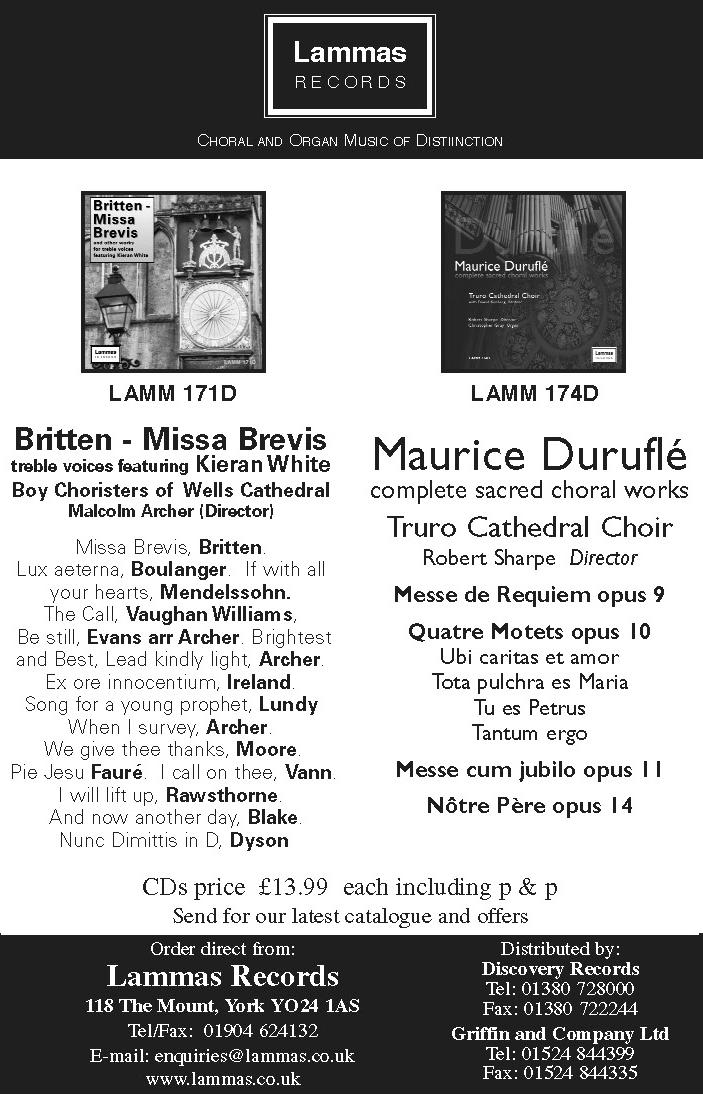
The choir is actively preparing for this year’s Yorkshire Three Choirs at Wakefield, involving repertoire from John Rutter’s European Sacred Music anthology.
Some readers may already be aware that the RSCM is once again on the move and will be moving in 2006 to share the facilities of Sarum College in the Close at Salisbury. Both organisations will continue to work independently, but will be exploring opportunities for complementary initiatives in the future.

The Guild of Church Musicians conferred honorary fellowships on the following distinguished musicians at a ceremony in the Queen’s Chapel of the Savoy in London on 1st December: Alan Thurlow (a former FCM Chairman who celebrates 25 years as Director of Music at Chichester Cathedral); Dr. Barry Rose (Guildford, St. Paul’s and St. Albans); Jonathan Bielby (Director of Music at Wakefield for 34 years); Professor John Moreen (international scholar) and the Very Revd Dr. Richard Fenwick (Dean of Newport Cathedral).
Copy for the next issue should reach Richard Osmond by 15 September 05.
The postbag has been a bit thinner this time. Diocesan Representatives and others are urged to let us have your news
Richard Osmond, 10 Hazel Grove, Badger Farm, WINCHESTER, Hants SO22 4PQ.
Tel/Fax: 01962 850818
Fri 17th – Sun 19th June
National Gathering at Chelmsford & Brentwood Cathedrals, with AGM on Saturday 18th June.
Fri 7th – Sun 9th October
National Gathering at Brecon Cathedrals.
Fri 17th – Sun 19th February
National Gathering at Canterbury Cathedral.
Fri 16th – Sun 18th June
National Gathering at Durham Cathedrals, with AGM on Saturday 17th June.
Fri 29th – Sun 1st October
National Gathering at Gloucester Cathedral – including Tewkesbury Abbey.
For details contact: Peter Smith, 7 Orchard View, Skelton, York YO30 1YQ. Tel: 01904 470503
E-mail: petersmith@robertpeter.fsnet.co.uk
Although, in many other respects, present-day cathedrals differ from Trollope’s fictional Barchester, we can still recognise his account of the cathedral service, well performed by carefully selected singers, who receive a good musical education. Several of our present-day cathedrals do this without the support of a choir school, and their musicians deserve particular credit for the energy with which they recruit and retain their singers. Salisbury Cathedral, like many others, undertakes all this in partnership with its own school, providing a total environment in which the choristers can be encouraged to give of their best.
At Salisbury, our two sets of boy and girl choristers provide a focal point of our musical activity. The cathedral is well known for the pioneering and visionary attitude that led to the establishment of the girl choristers in 1991 – they are now so much accepted here that it is difficult to remember a time when such a resource did not exist. Boys and girls receive the same training and enjoy a balance of musical activity so that they contribute equally to the cathedral’s worship. In our case, the framework for all this is provided by the Cathedral School, which has its home in the south–east corner of the Close. It is a thriving school, with 250 children and 70 staff, enjoying a wonderful site.
We work hard to ensure that children are admitted to the choir on the basis of their potential as singers and that additional resources are found to ensure that no one is unable to come to the choir because they cannot afford to do so. But we know that finance may not be the only factor that acts as a barrier. Some parents may be hesitant about sending their children into a boarding environment. Others may be reluctant to enter their children for a cathedral voice trial, particularly if they are uncertain about the standard required – no one wants to set up a child for a situation for which they are not properly prepared. For these and other reasons, we need to do all we can to help
potential choristers and their parents cross the threshold and get a flavour of what we can offer.
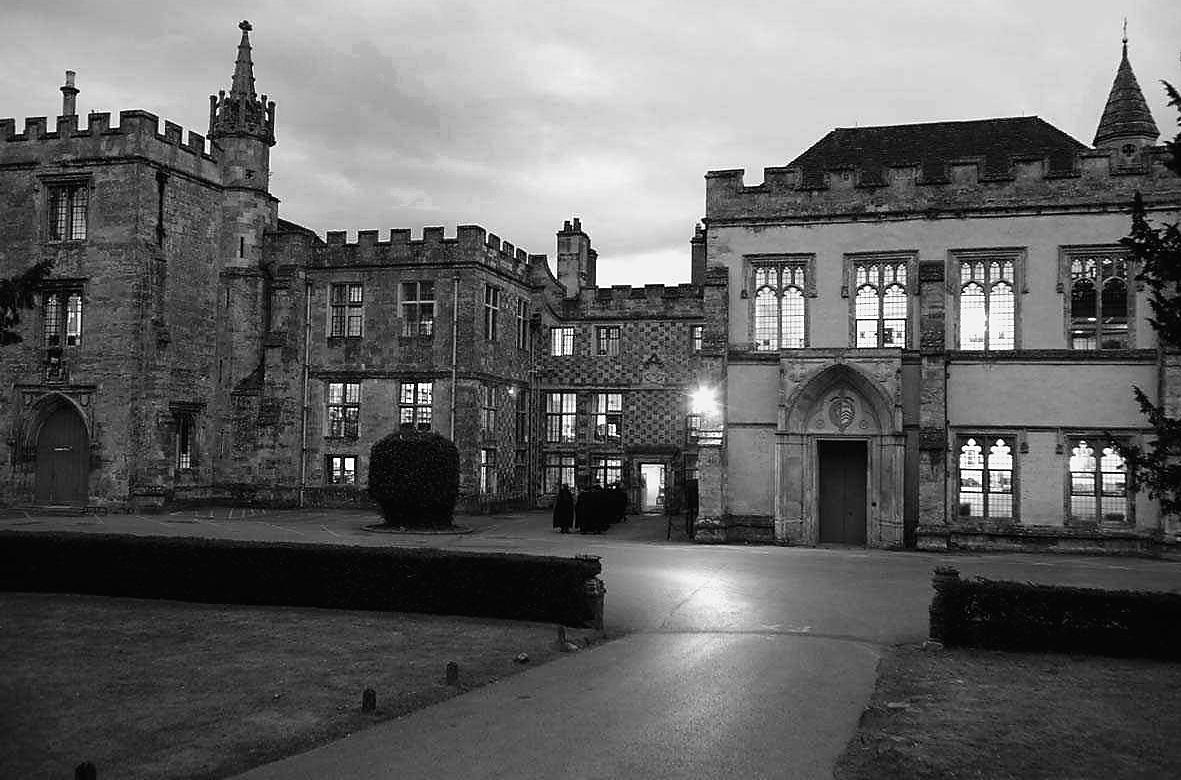
One particularly successful Salisbury initiative has been the development of an event that invites children to ‘Be a Chorister for a day’. This allows children to work with our Director of Music and some of the other musicians in the cathedral and school. During the day, they take part not just in singing activities, but have an opportunity to join existing choristers and other pupils in a range of activities, as well as simply to enjoy themselves. At the end of the afternoon they participate in Choral Evensong, having learned several pieces of music to sing with the cathedral choir. While not all of these children will go on to a voice trial, it is clear that they all find it a very positive experience.
By encouraging children to sing and providing them with the educational framework to do this well, we not only build the foundations of cathedral music but give our young people
Timothy Hone, Head of Liturgy and Music at Salisbury Cathedral, discusses the musical activities at Salisbury Cathedral.
‘The service was certainly very well performed. Such was always the case at Barchester, as the musical education of the choir had been good, and the voices had been carefully selected.’
Barchester Towers, Anthony Trollope
experiences and skills on which they can build for the rest of their lives. However, the commitment we make to them is a costly one. There are real financial pressures, though we are well aware that Salisbury is fortunate in being able to meet them more easily than some other cathedrals, which may have fewer visitors, smaller endowments or be situated in less well-resourced communities.

When our girls’ choir was established, it was necessary to start a trust fund to enable the girls to receive the same kind of financial support as that given to the boys. Although this is now well established, there is a constant need to raise funds to keep the endowment funds for both girls and boys in line with rising fees and costs. We can never afford to be complacent about funding; otherwise it would be all too easy to allow financial pressures to threaten the survival of this precious heritage.
Indeed, for all cathedrals, there is a danger that economic considerations drive and limit what we are able to achieve.
Except for those establishments with the greatest endowments or other sources of income, the contribution of the Church Commissioners to the funding of cathedrals remains a crucial factor. While cathedrals such as Salisbury have been less dependent on Commissioners’ funding than some others, not least because of the donations of its visitors, the future challenge for us all will be to maintain and develop activity with fewer dependable resources. In order to sustain the music, as well as the rest of their mission and ministry, cathedrals need to build partnerships with other potential funding
bodies. We need to spread a positive message about the role of cathedral music, so that it is not the first target when economies have to be made.
It is also important for the development of the tradition that all those who come to work in cathedrals understand the importance of the worship and music. More than in the past, clergy come to cathedrals without a direct experience or appreciation of the cathedral pattern, in which essentially formal worship is enhanced by significant musical contributions from the choir. A second area of concern is that cathedrals increasingly have to pay more than lip service to commercial reality. Those concerned with the administration of a cathedral can easily forget its primary purposes as a focus for the diocesan ministry of the bishop and a centre of worship and mission.
The six lay vicars who make up the back row are also at the heart of our musicmaking. The Salisbury pattern is to use a small group of professional singers. This way of working places great responsibility on each singer, not only in terms of musical reliability but also through all that they contribute to the group as a whole.
The future of cathedral music rests just as much on the ability of cathedrals to attract suitable lay clerks as in creating the conditions that make it possible to recruit and retain trebles. In an age when the pressures and expectations of the workplace become more extreme, the overall package of remuneration and other benefits is crucial.
Because the overall pattern of our choir life is very struc-
‘Salisbury is by no means unique in deriving a significant part of its income from the donations of those who come here as visitors and pilgrims.’
tured and the choristers all move away to other schools at the end of their time here, we have no mechanism for keeping ex-choristers on board. Cathedrals that retain the best former choristers as young altos, tenors or basses, or offer choral scholarships, play an important part in giving young singers the necessary foundation and training for them to continue to sing as adults.
For all cathedrals, outreach is clearly vital. We need to link with different parts of the church, both within the diocese and also beyond and across denominational boundaries. We should also try to build bridges with an increasingly secular world, one that nevertheless displays symptoms of distress at a loss of a spiritual dimension.
We were delighted that some of our choristers were invited to take part in the launch of the Government’s music manifesto last year. It is good that the contribution of church music as a training ground for young singers is being recognised in this way.
Closer to home, our choir goes on a parish visit for a service or concert at least twice a term and we are currently exploring other ways in which the links between the cathedral and diocese can be strengthened. Because we have two groups of trebles, it is often possible for one to be on duty in the cathedral while the other is singing away.
The cathedral and school also work closely together to carry out musical work in the wider community. The school’s Director of Music has recently initiated a project that involved
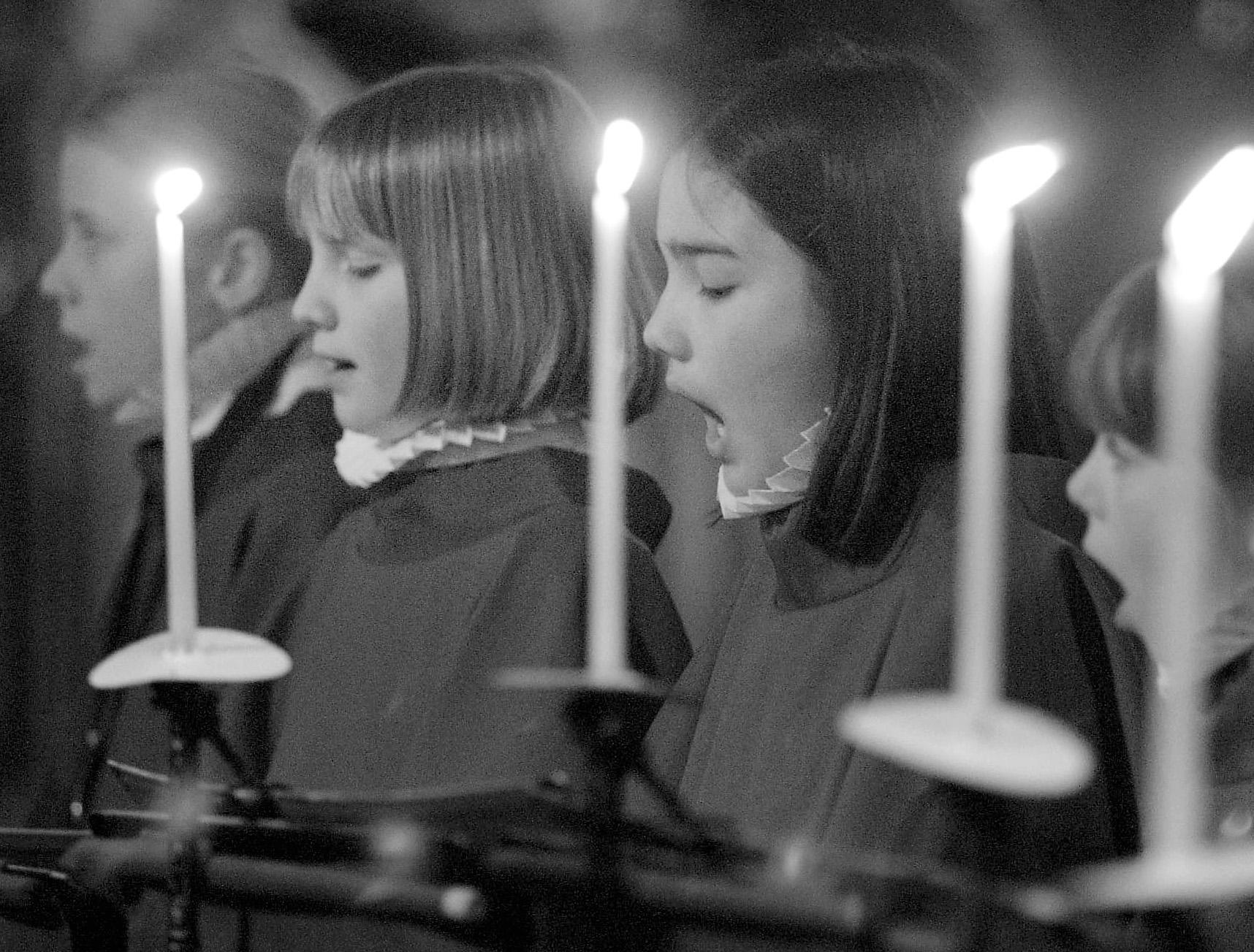
working with children from local primary schools, who then came to the cathedral to sing alongside our cathedral choristers. Events of this kind not only provide a marvellous experience for those involved, but also act as a showcase for the kind of musical work that goes on in the cathedral on a daily basis.
Cathedrals need to maintain a balance between the corporate prayer of the regular community and providing liturgical hospitality for visitors.
We are fortunate in Salisbury in having a large core community who use the cathedral as the focus for their spiritual life. This is reflected as much in those who attend the early morning said services as in those who come to the choral Offices. However, we are aware that some might find the pattern and content of our regular worship too inflexible or esoteric; there are occasions throughout the year where we attract other groups of people to the cathedral to participate in imaginative acts of worship in a variety of styles.
Access is not just about removing physical barriers or increasing the clarity of communication in a large resonant space. From time to time, cathedrals need to look again at the language used and the ways in which it facilitates or limits communication. In the light of this it might be necessary to reexamine the choice of readings or the way in which large groups of psalms are used as the backbone of the Offices. In general, cathedrals could use their resources to find more creative ways of revealing the significance of the narratives that provide the bedrock of the Judeo-Christian tradition.
‘When our girls’ choir was established, it was necessary to start a trust fund to enable the girls to receive the same kind of financial support as that given to the boys.’
On the other hand, some would suggest that people come to cathedrals in search of mystery, atmosphere, and the sort of spiritual experience that transcends the everyday. In that case they may not necessarily want services, readings or hymns in everyday language. Indeed, the formality of the traditional language we use and rituals we perform could add to their appeal. Again, we need to find the right balance between these diametrically opposed views.
There is also a balance to be struck in determining the balance of activity within the cathedral. Salisbury is by no means unique in deriving a significant part of its income from the donations of those who come here as visitors and pilgrims. Like many other cathedrals, we sometimes find it difficult to accommodate requests for large-scale services during the middle of the day in peak tourist season. However, commercial reality is not the only reason to take our ministry to our visitors seriously. We have an opportunity to inspire and challenge them, and we hope that they will remember more from their visit than the magnificent architecture.
Cathedrals are part of the success story of the church in the early 21st century. Simply as buildings, they are attractive
places that continue to fascinate, to draw people to them and to inspire. However, they can and should be much more than buildings. Through their education and outreach work, they have the potential to show to the world a way of living and working as a Christian community. Special services provide a particular opportunity for cathedrals to act as focal points for the wider community. The cathedral’s worship should be at the heart of all its activities, a vital tradition of liturgy and music that helps to draw people into a closer relationship with one another and with the God they encounter.
Postscript
Salisbury is just about to embark on a new stage in its musical development: in the summer, after eight years as Director of Music, Simon Lole will leave the cathedral in order to follow new paths of musical activity. His place will be taken by David Halls, who has already served the Cathedral since 1985 as Organist and Assistant Director of Music. David’s appointment has been warmly welcomed by the cathedral congregation and by Salisbury’s wider musical community. Although his appointment provides continuity with the past, David is already helping the cathedral to plan for future developments with confidence and enthusiasm.


‘Salisbury is just about to embark on a new stage in its musical development: in the summer, after eight years as Director of Music, Simon Lole will leave the cathedral in order to follow new paths of musical activity. His place will be taken by David Halls, who has already served the Cathedral since 1985 as Organist and Assistant Director of Music.’
A recent editorial drew attention to the revision of the BBC Radio 3 website, and the apparent demise of the advance schedule for broadcasts of Choral Evensong. I am pleased to advise readers that this was only a temporary state of affairs caused by the scale and complexity of the changes to the site, which now offers considerably more Radio 3 information to users than before, and makes it easier to find. The Choral Evensong schedule is available directly at www.bbc.co.uk/radio3/classical/cesched. shtml, or it can be accessed via the Choral Evensong programme page at www.bbc.co.uk/radio3.
Readers might also like to know that Choral Evensong regularly features in the statistics as the most requested Radio 3 programme for on-demand listening via the BBC Radio Player. Registering over 10,000 unique users, this, we believe, betokens the continuing popularity of the programme and the loyalty of its listeners.
access to composers’ chants being used for study or performance on a ‘noncopyright’ basis. I already have 35 chants and would greatly appreciate more of these to enable a good sized collection to be set up. I am still accepting any old psalters/hymn books to continue my research, your help as ever is greatly appreciated.
Our address (for those not on the Internet) is:- PWJ Kirk, Halcyon, 13 Highfield Gardens, ALDERSHOT
GU11 3DB
Hopefully I have acknowledged all contributions and for that I can only say thank you again.
I would like to take this opportunity to thank everybody who took the trouble to contact me regarding my article in the last edition of CATHEDRAL MUSIC I have had access to many psalters and 140 chants have been sent to me from as far away as Canada. The last count was, I believe around 4630 and over 1000 composers. Like a recipe book, obviously one cannot locate everything but it gives me great pleasure to know that there are many gems still out there somewhere.
I would also like to thank John Lawson Baker for all his help and wisdom. This project has enabled me to meet some wonderful people and hopefully maintain their friendship in the years to come. An idea was put to me that definitely could have possibilities. I have been asked to set up a ‘share your chant’ website. This would allow
You may recall that when Mark Twain read of his own death in a journal he sent off a telegram stating that the report was ‘greatly exaggerated’. In your editorial of Issue 2/03 and in your interview with Rowan Williams reported in Issue 2/04 you have warned of the imminent death of cathedral Choral Matins. So here is a telegram to assure you that this prophesy is also greatly exaggerated.
FCM’s admirable Singing in Cathedrals , 2004, identifies twelve English cathedrals where Choral Matins may be heard virtually every Sunday and a further five where Matins takes turn with the Eucharist on from one to three Sundays a month. With the exception of Lichfield, all eight of the nine ‘old foundation’ secular medieval cathedrals continue to sing Matins, every week, although York sings the Office every other Sunday. However, if one is careless enough to live, like you, Mr Editor, north of the Trent, then one has a problem. Only by catching the train to Durham can one be certain of hearing Matins sung every Sunday. So you were right to bemoan the recent dematinization at Southwell. Keep banging the drum for Matins, then: but let’s have no more premature obituaries.
CATHEDRAL MUSIC habitually includes accounts of cathedral organists - there are three such in the 2/04 issue. Skilled and worthy though these men may be, I would like to see a widening of the range of these snapshots. Are there any female cathedral organists? What about organists elsewhere in the British Isles, or overseas? At least some lay clerks must be seriously interesting people just calling out for profiles. And there are some important composers of church music who are not, themselves, cathedral organists. A coverage like this would give a broader picture of music in cathedrals and colleges. It is not only male organists in England who make cathedral music possible, and I would welcome a wider picture. In past issues we have featured Sarah Baldock, and lay clerk Jeremy Filsell (Ed).
Gordon Hemmings, ElyThe recent London Gathering gave many opportunities to hear wonderful music wonderfully sung: Palestrina at Westminster Cathedral, Mendelssohn at the Chapel Royal, Hakim at Southwark (astonishing quality without benefit of a choir school), Howells at the Abbey. Cathedral music has never sounded better: its Friends could take pride in the cause we support. But after all,
➤
All readers whose letters are published will receive a copy of FCM CD O How Glorious a compilation of cathedral music from the Priory Records catalogue. Letters may be shortened for publication. All general points and comments welcomed. Please send letters by September 30th 2005 to:
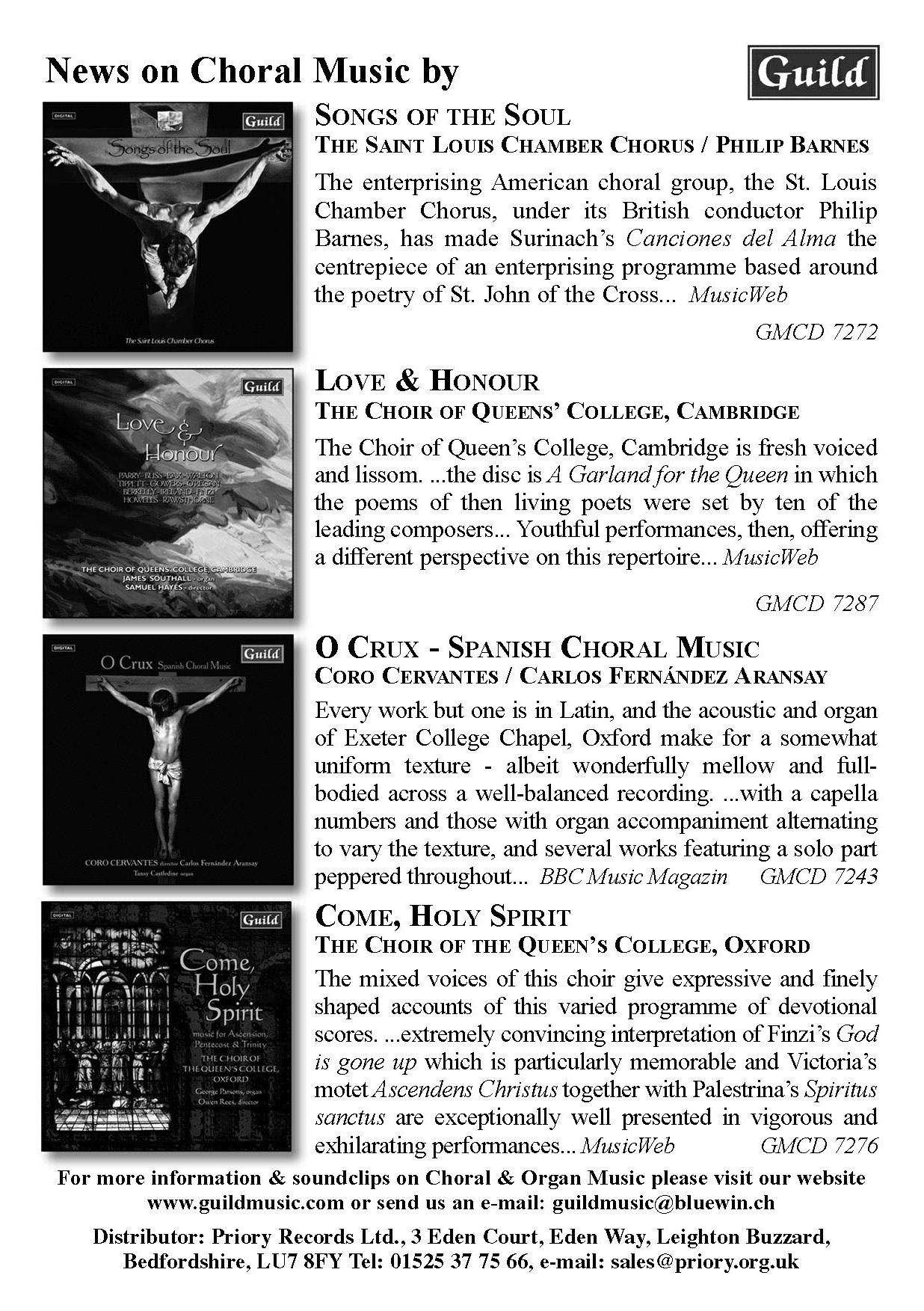

The Editor, 21 Belle Vue Terrace, RIPON, North Yorkshire HG4 2QS Fax: 0871 224 7189 ajpalmer@lineone.net
this was London, our capital of music and culture; and only to be expected. How about provincial standards? Recently I moved from Exeter to Ely: two very different cathedral cities, but united by a third E – for excellence in their cathedral music. Exeter’s new CD Music for the Eucharist explores comparatively unfamiliar repertoire: Mass settings by Anthony Caesar and their own Andrew Millington, all performed by the thirty boys and men and long-serving Paul Morgan with great confidence and feeling for style. At Ely, their 22 scarletclad choristers added a distinctive contribution from the triforium to a Christmas Day broadcast of St Nicholas; Britten would have been proud of their vigour and obvious enjoyment. Yet as Paul Trepte points out, this broadcast, two Songs of Praise, and a Canadian tour are the “icing on the cake” in one term’s singing of the daily Opus dei
All would seem to be well in the world of English cathedral music; but there are shadows – excellence comes at a price; the professionalism and dedication of the choirs cannot be questioned but many of our cathedrals are beset by financial problems; when music often accounts for a quarter of annual expenditure, chapters and administrators cannot for ever avoid economies: a musician may be lost here, a service disappear there.

We must not simply sit back and enjoy this inestimable aid to our worship; we must encourage new members, increase our giving, if the tradition is to survive and develop in a largely unhearing and unheeding society.
Miss V M Brown Wigston LeicestershireYou have, alas missed, the point of the Bishop of Hulme’s remark. Spring-Rice (a dying man with little time to think) put country before God, which no Christian should ever do, it is rendering unto Caesar the things which are Gods’s, which is surely a form of idolatory. We must all be prepared to be called to renounce ‘the last refuge of a scoundrel’. The Germans, remember, no longer sing words of similar sense to the first verse even as a national anthem – they begin the Deutschlandlied in the middle.
However, I still await the bishop who will spot the implicit blasphemy in O valiant hearts
David Pepin
Shire Publications £8.99 ISBN 0 7478 0597 0 168pp; 135 colour & 49 b/w ills; p/b.
David Pepin’s book, Discovering Cathedrals is a splendid little guide that takes us on a gallop through the 48 English and Welsh Anglican cathedrals, along with the Scottish and the 22 Roman Catholic cathedrals (these are merely thumbnail sketches except Liverpool and Westminster). The photography is disappointing in places especially the Ripon Cathedral snaps, however this does not spoil a fine little book that will come into its own wherever and whenever you are touring the UK’s cathedrals. There is just enough information contained within each entry about architecture to make it interesting along with chapters dedicated to what a cathedral is, different architectural styles, the use of glass, stone and wood coupled with a list of books for further reading and details of every cathedral that has a website. The book could include more on the music in cathedrals and perhaps something on the organs. There is some fascinating information and the book is written in an easy style. This is the perfect book to have as a companion.
 Andrew Palmer
Andrew Palmer
Pub. Oxford University Press (ISBN 0-19-816146-8 Price £70.50p)
It is easy for those of us brought up in church music to take Samuel Sebastian Wesley for granted. In my youth, anthems from Blessed be the God and Father to The Wilderness and hymn tunes from Aurelia to Wrestling Jacob came round regularly on music lists. Dr Peter Horton (Reference Librarian and Research Co-coordinator at the Royal College of Music) not only writes an enthralling biography but scrutinizes and analyses the music thoroughly to give a fully rounded picture of Wesley as man and artist. His first six chapters are named chronologically for the places in which Wesley lived, starting with his early life in London and ending with Gloucester. Within each chapter, alongside the fascinating biographical detail, enhanced by anecdotes and quotations from Wesley’s correspondence, the music (vocal and instrumental) is discussed as part of the narrative – a far more satisfactory scheme than the half-life, half-works format favoured by some writers. The text is further illuminated by informative footnotes and musical examples. The seventh and final chapter, ‘Wesley the Romantic’, sets Wesley in European context while explaining his originality as an English composer.
1839-1872 - Bernarr Rainbow 382 pages (April 1970) ISBN: 0257650881
This eminently readable and well researched book, published originally by O.U.P. in 1970, is certainly worthy of re-issue. In it Rainbow describes the atrocious condition of virtually all Anglican worship (including that of cathedrals) in the early nineteenth century – and that during a period when churchgoing was so widely fashionable. Amongst the most striking features are:
1. The fact that a small college like St Mark’s, Chelsea, should make such determined and extensive provision for its own choral services (surely quite unthinkable today!); and this coupled with their effect on the wider English church.
2. The imagined theological significance that was so clearly attached to ‘a fully choral service’ as such, and most particularly to the special merit ascribed to ‘intoned prayers’.
3. The conflict between those advocating Gregorian tones and those employing Anglican chant for psalmody.
4. The widespread opposition to anything considered remotely Roman in that pre-ecumenical age.
The most obvious aspect of conflict, with present day resonances, (represented here by the opposing views of Jebb and Oakeley) is that between those who see music in worship as being an essentially congregational activity, and those who regard it as necessarily a professionally executed task – a function in which the congregation is invited to participate only silently. What a pity that this 2001 reprint could not include some small footnote updating the allusion to St Michael’s College, Tenbury, which is quoted on page 168 as ‘surviving to this day,’ when actually it ceased to exist in its original form in 1985!
J. Paul BurbridgeThe thread running through the whole of Wesley’s life is his vision of the place of music in Anglican cathedrals. That he chose consciously to shackle his great gifts to this vision is evident from his comments in a letter to his sister written at the end of his life; ‘I left London when very young for Hereford, intending to compose chiefly for the Church’. The high ideals of his youth were bound to be disappointed, but the striving after impossible goals seems to have been part of his paradoxical nature. He inherited the strain of manic depressiveness inherent in the Wesley family through several generations, which unhinged his father Samuel and resulted in the suicide of two of his own sons. Nevertheless, he campaigned valiantly and effectively for higher standards in cathedral music. In spite of causing offence to some of his fellow composers and some clergy, he had many admirers among contemporary musicians. His own reputation, especially as an organist, was second to none and both Elgar and Parry testified to Wesley’s ability to move his listeners by his playing. A short review cannot do justice to this excellent and important study which can be savoured as biography and mined as a reference source. Above all, the book should provide a great incentive to study the music afresh. The price is fairly high but should not deter those with genuine interest in one of our most significant cathedral musicians.
Alan SpeddingChoral and Orchestral Concerts
Including works by Britten, Elgar, Mendelssohn, Tippett
Orchestras and Artists
City of Birmingham Symphony
Orchestra, Orchestra of the Swan, Ex Cathedra, The Cardinall’s Musick, The Consort of Musicke and many more
For full programme and booking form
Festival OfficeTel: 01905 616200
Fax: 01905 745661
E-mail: info.worcester@3choirs.org

6-12 August 2005
www.3choirs.org
‘...a fine little book that will come into its own wherever and whenever you are touring the UK’s cathedrals. ’
John Bertalot
Kevin Mayhew ISBN 1-84417-234-1 £14.99
Yet again John Bertalot has produced an excellently produced and well-written handbook on choir training. This time teaching adults how to sight sing. I used this recently on a new adult choir I had to train for a series of Christmas services and the results were striking. A first-rate handbook with warm-up exercises, good practical advice and where better to get it from but a master. A new approach we should all be open to and use. The only thing to beat this handbook is to get John Bertalot along to a choir practice but that would mean he would have to spread himself too thinly so we get the next best thing, so we have to be grateful for this written advice.
Daniel ReedThe Choir of St John’s College, Cambridge. Director: Christopher Robinson. Boxed Set 10 CDs NAXOS 8.501007

If you missed these CDs first time round when they were being issued individually then go out now and buy the complete set. Featured composers included Lennox Berkeley, Britten, Elgar, Finzi, Howells, Leighton, Rubbra, Stanford, Tavener and Walton. With no less than seven of the discs receiving the Editor’s Choice accolade in The Gramophone. These really are superb recordings and a fitting testament to FCM President Christopher Robinson’s time at the College. The repertoire should be to the liking of every lover of English church music, with, of course, a few exceptions. The singing is first-rate covering a five year period from 1999 to 2003. Warmly recommended.
Andrew Palmer
Lori Phillips soprano, Robynne Redmon Mezzo, James Taylor Tenor, Jay Baylon Bass. Nashville Symphony Orchestra and Chorus conducted by Kenneth Schermerhorn. NAXOS 8.557060 TT 77.11
Trevor Beeson
SCM Canterbury Press £19.99 (ISBN 0334 02987 2)
Trevor Beeson’s Preface contains a vast understatement –‘Eccentricity was never regarded as a disqualification’. Even in the 21st century that seems as relevant today as it did in the 19th century. Trevor Beeson has written a number of books since his retirement as Dean of Winchester and this present volume is a fascinating study. There are so many captivating facets of information and anecdotes. Anyone with an interest in cathedrals will love this book and for those of us who have a passion for cathedral music there are plenty of titbits. Under the entry for Derrick Walters, comments from FCM Chairman Peter Toyne are included. What I like is the titles of the chapters – Trevor Beeson’s one or two word summary of what each dean was about: so we have ‘The Plantsman’, a predecessor of Beeson at Winchester who was in no sense a pioneer, though he tried hard to improve the standard of the cathedral’s music and was brave enough to appoint SS Wesley as organist. Richard Church, nicknamed ‘The Saint’, is believed by many to have been the greatest of the Victorian deans. ‘The Master Glazier’, York’s Eric Milner-White, formely of King’s Chapel, Cambridge, known as ‘The Dean of Kings and the King of Deans’, he reigned for 22 years, of which 18 were dedicated to the cleaning, conservation and re-ordering of the stained glass of the 128 windows in the Minster which had been removed and stored during the war. ‘The Connoisseur’ Dean was Chichester’s Walter Hussey, who was a true patron of the arts commissioning inter alia the Chichester Psalms from Leonard Bernstein. The ‘Socialist’ was Canterbury’s Hewlett Johnson, whose sobriquet was ‘The Red Dean’. The final chapter is titled The Missionary Leader – Looking Ahead and brings us up-to-date with events that many of us will be familiar with: Hereford proposing to sell the 13th century Mappa Mundi; financial and administrative problems at Exeter and St Paul’s; Lincoln’s problem which Beeson says served only to highlight the lack of power available to bishops in the running of their cathedrals. I could go on – better that you go and buy a copy of this book – it is a compelling narrative, and a beguiling read that shows us that some of the problems cathedrals face with their deans in centuries past are still alive today.
Andrew PalmerIn this well-known work Beethoven mobilises the words of the Mass and sends them into battle. The accompanying booklet to the CD has Missa Solemnis as ‘One of the greatest masterworks in the history of music…’ but it can also be seen as an orgy of excess of a magnitude which might have caused even Verdi to catch his breath. As an example you only have to listen to the setting of Dona Nobis Pacem where the words are used merely as pegs upon which to hang yet more musical melodrama. Palestrina, Lassus, Byrd - even Bach - might have commented on this to their illustrious successor from beyond the pearly gates but their words would, of course, have fallen on deaf ears. On this occasion Beethoven’s general is Kenneth Schermerhorn who sends his musical forces over the top with enthusiasm and alacrity, and maximum points for effort can in no place be doubted. Accordingly, if you decide to play this recording in the privacy of your own home, then I suggest that (a) you ensure that your playing equipment is in sound working order (b) you make sparing use of the volume control and (c) you advise the neighbours in advance!
Harry WinterIntroit; Kyrie; Gradual; Dies Irae; Offertorium; Sanctus; Agnus Dei et Lux Aeterna. Also four excerpts from The Veiled Prophet of Khorassen
Frances Lucey (Soprano) Virginia Kerr (Soprano)
Colette McGahon (Mezzo Soprano) Peter Kerr (Tenor) Nigel Leeson – Williams (Bass). RTE
Philharmonic Choir, RTE National Symphonic Orchestra of Ireland. Requiem directed by Adrian Leaper. Veiled Prophet directed by Colman Pearce. NAXOS 8.555201-02 TT 104’29” (2 CDs)
E M Forster might have mused ‘What is the point of it?’ What choral society director in his right mind would put on this vast choral work? It requires large forces (a full symphony orchestra and soloists – hence expensive), it’s impossible to get hold of the copies, nobody wants to do it, nobody wants to listen to it,
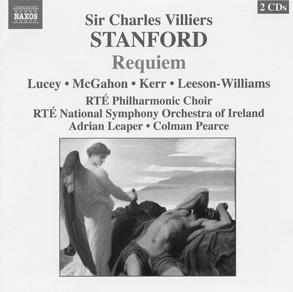
‘...it is a compelling narrative, and a beguiling read that shows us that some of the problems cathedrals face with their deans in centuries past are still alive today. ’
and when it’s over it will never re-emerge. Why not go for Verdi, Brahms or Mozart, to name but a few alternatives? Stanford himself was all too aware of this reality. The composition dates from 1896 and was first performed under the direction of Richter at Birmingham in the following year. It attracted some attention initially, however by November 1901 Stanford was so disappointed with the general response that he wrote to Richter ‘I am going boldly to ask you if you can see your way clear some day to do my Requiem at Manchester, or failing that the Te Deum. These two works are I know my best: whether that best is good enough is not for me to say, but I think they are at any rate no worse than other choral works which are being given elsewhere: and they have never been given a chance…’ He may have been a little pessimistic in this assessment; Dibble’s Stanford Manand Musician records that the Requiem (although never as popular as the Revenge) held its place in the repertoire for a period. By the time of his death in 1924 however the work was very firmly out of sight and out of mind. Here as elsewhere you have to ignore fashion and the opinions of others, and listen for yourself. In form Stanford’s Requiem looks towards Verdi rather than Mozart or Brahms. Both are dedicated to the memory of prominent figures (Verdi to the poet and patriot Manzoni, and Stanford to the artist Lord Leighton). Both are cast on vast central Dies Irae sections (Stanford’s on this recording lasting a full 30 minutes). Both make use of large forces. Stanford never uses these forces to the same dramatic effect as Verdi (possibly out of respect for the fabric of the concert hall) but his music is easily worth listening to. The three opening movements are rather shorter than the others, the structure of the Offertorium owes much to the corresponding movement in the Mozart and concludes with a full-blooded fugue at Quam Olim, the Sanctus is given ternary treatment with the Benedictus in the middle, and the Agnus Dei and Lux Aeterna are cast together in a funeral march which is the most original feature of the work as a whole.
So here is the point of it. If this music is not worth listening to, then the world has gone mad. And today we have no need to trouble a choral society director since we have the music here in this recording (dating from 1994) given splendid and full-blooded treatment by the RTE Choir and Orchestra who have had the vision to get the dusty copies off the shelf and breath new life into them. But for them we would never have known.
Harry WinterStanford: Magnificat for eight-part Chorus; Allegro non troppo e pesante (from Six Short Preludes and Postludes op 101); For lo I raise up; Allegretto (from Six Short Preludes and Postludes op 101); O for a closer walk with God; Ye choirs of new Jerusalem; Parry: Songs of Farewell. The Choir of Christ’s College Cambridge directed by David Rowland. Organ: Simon Jacobs. Recorded in the Chapel of Queens’ College Cambridge. REGENT REGCD204 TT 67:29

If this had been a Long Player we would have had Stanford and Parry back to back, possibly with their noses in the air, and indeed it is difficult to listen to a production such as this without reflecting on the pungent state of the relationship which subsisted between them during the latter years of their association when Parry was Director of the Royal College and Stanford one of its professors. Thus Parry to Stanford in 1916 (after a tiff about Stanford having claimed teaching fees when he had never done the teaching): ‘To talk of friendship after such behaviour is ridiculous… Only as a forlorn hope I would ask if you thought it possible to reconsider your ways of behaving to your fellow men – your habits of making accusations against them and quarrelling and treating them offensively – then perhaps you might become something more like you were thirty years ago!’ In the light of such sentiments the pairing of Parry and Stanford as senior representatives of the English musical renaissance becomes even more tenuous. A manifestation of this animosity appears on this recording in the eight-part Magnificat which Stanford wrote as a mark of goodwill towards his erstwhile colleague (but which Parry was destined never to hear since it was completed only a few days before he died). Christ’s are courageous in adopting this as their opening item as it makes considerable demands on the singers, as do For lo I raise up and Ye choirs of new Jerusalem which appear later. The singing here is characterised by an enthusiasm which, only occasionally, becomes the
master of the control. The College has been wise not to use its own chapel for this project but the acoustic and organ of Queens’ are also somewhat lacking in gravitas for this music. Perhaps Trinity one day? The two organ pieces and O for a closer walk are well placed among these fireworks and introduce a more restrained note. The entire disc however takes on a new and more reflective mood as we move into the Parry and the six Songs of Farewell. They were among his last compositions and the significance and poignancy of the title will not be lost on the listener. The work is literally a valediction. Each song bears testament to the art of a master at work; each sentence is carefully and tastefully weighed to convey its meaning and the music is completely devoid of the cheap sentimentality which infests so much more recent choral composition. On this occasion I have to say that, for my money at least, the Parry is more suited to the resources of the choir than the Stanford. The music is by no means easy but the choir is well rehearsed and shows off the carefully understated emotion to great effect. Ironically Dibble’s Hubert Parry has it that the Songs of Farewell were themselves inspired by Stanford’s own Three Motets op 135 dating from 1913. Parry’s work was complete in 1915 and three years later he died, leaving Stanford to grow older. Three cheers for the old College for producing another splendid CD! I have written previously in these columns of something of a dark age which settled some time ago leaving us musicians to hide their talents under a bombproof bushel. My own tutor – now well known in the country following his appearances on the TV – referred to my own efforts as ‘warbling’ and there was no twinkle in his eye as he said it. On second thoughts perhaps he was very well informed!
Harry WinterBirthday Sleep; Butterfly Dreams; The Second Coming; Schuon Hymnen; As one who has slept; The Bridal Chamber; Exhortation and Kohima; Shûnya. Polyphony. Director: Stephen Layton. Organ: Christopher Bowers-Broadbent. HYPERION CDA67475 TT 74:37
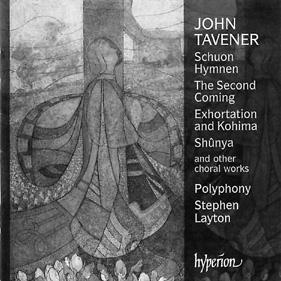
From the beginning it has to be said this is a superb recording containing no fewer than six first recordings. There is over 80% new material. I am a great fan of Hyperion’s output, a stylish record company. On this recording it is best to forget that many know the name of John Tavener say for his music sung at the funeral of Princess Diana. We hear Polyphony responding to Stephen Layton’s accomplished direction. This new material from the exquisite Birthday Sleep with its delectable first chord through the sequence of Butterfly Dreams a collection of short pieces, which follow on from each other seamlessly, to The Second Coming, with its evocative opening on the pedals and its breathtaking climax, will not fail to excite. Quite often wonderful choirs take centre stage but it is a team effort to get the right effect and so the engineers at Hyperion should be thanked for capturing the perfect atmosphere.
Sarah Samuelson
One of the great Music Festivals of Europe
July 7th – 16th 2005
For further details please see our website: www.organfestival.com
Telephone: 01727 844 765
e-mail: info@organfestival.com
A selection of music by Bach, Boccherini, Gabrieli, Handel, Haydn, Hummel, Kuhnau, Lully, Monteverdi, Mozart, Purcell, Ruggieri and Vivaldi. The King’s Consort & Choir. Director: Robert King.

HYPERION KING7 TT 77: 58
There have been 80 Hyperion CD releases containing music from across more than 250 years, all performed by Robert King and his fabulous musicians. This is a cross section of those recordings, containing some of the finest soloists. It is one of those CDs that gives pleasure from the first second to the last. It is a splendid collection from the best of this splendid collaboration. It’s not all singing either; there are plenty of instrumental works including the last movement of Hummel’s Trumpet Concerto. Of no surprise will be the quality of musicianship on display – second to none. All short pieces, it is one to be relished, especially if you have missed any of these recordings in full.
Sarah SamuelsonTallis O Nata Lux; Morley Eheu, sustulerunt Dominum merum; Boyce O where shall wisdom be found?
Wood Hail Gladdening light; Harris Faire is the heaven; Britten Te Deum in C; Moore All wisdom cometh from the Lord; Brown Ave Maria; Lamb Sarum Service; Chilcott
Even such is time; Walton The Twelve; Bainton And I saw a new heaven; Parry My soul, there is a country; Wesley Ascribe unto the Lord; Purcell Jehova, quam multi sunt hostes mei; Byrd Ave verum Sarum Voices. Director: Ben Lamb. Organ: Catherine Langston.
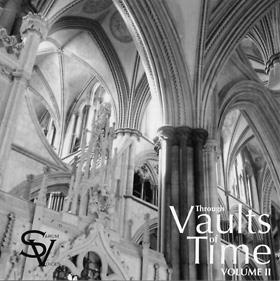
VIFRECORDS VRCD 047 TT 100:03
I missed the first volume from this excellent Salisbury-based group. However, this second output from Sarum Voices is a double CD of choral favourites from the last five hundred years of church music. The mixed choir copes with the ambitious programme very well indeed, especially the men’s voices during the Walton. A gratifying collection from the English choral tradition splendidly sung with some fine accompaniments. Conductor Ben Lamb’s Sarum Service is worthy of repeating. The unaccompanied pieces demonstrate just how good this choir is. The gamut of music from different periods makes this CD even better – ranging from composers born in 1505 to those from the 20th century born in 1974! I really did find reviewing it a great pleasure. I am sure you will not be disappointed.
Sarah Samuelson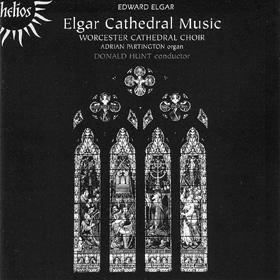
Ave verum; Ave Maria; Ave Maris Stella; Angelus; I sing the birth; Lo! Christ the Lord is born; Great is the Lord; Ecce Sacerdos Magnus; O Salutaris Hostia; Fear not; O hearken thou; Give unto the Lord.
Choir of Worcester Cathedral. Director: Donald Hunt. Organist: Adrian Partington.
HELIOS CDH55147 TT 59:29
This Hyperion/Helios reissue (recorded in 1988) is a joy. The programme includes familiar Elgar ‘biggies’ (Give unto the Lord, Great is the Lord) as well as smaller, less-known, more intimate pieces. There must be something in the air in Worcester as Donald Hunt’s 1988 choir was obviously in total sympathy with the music: Elgar sounds as he should – by turns generous, confident, nostalgic, and searching. If you didn’t get this recording first time round, now is your chance. Magisterial, committed performances and a fine, clear recording (though slightly quiet – I had to turn up the volume for this CD).
Andrew Davis
Wesley Praise the Lord, my soul; Vann Behold, how good and joyful a thing it is; Whitlock Glorious in Heaven; Dearnley Jubilate Deo; Sheppard Libera nos I; Gibbons Great Lord of Lords; Goss O pray for the peace of Jerusalem; Stainer They that wait upon the Lord; Bairstow Lord, I call upon thee; McKie We wait for thy loving-kindness; Stanford Ye Choirs of new Jerusalem; Parry Lord let me know mine end; Middleton Let my prayer be set forth; Tabakova Praise; Scott Behold, O God our defender; Rutter A Crown of glory
The Choir of St Paul’s Cathedral. Director: John Scott. Organ: Huw Williams. HYPERION CDA67483 TT 75:54
Hyperion, in their current on-line catalogue, list 29 CDs by John Scott and the St. Paul’s Choir, including the 12 recordings of harmonized psalms. (There have been more by John Scott – for Hyperion and other labels, including Nimbus, Priory and EMI.) We are here presented with the final recording from his long tenure at St. Paul’s Cathedral. Since the appearance fifteen years ago of the first volume in this series of English anthems, Scott and his choir have provided a splendid procession of composers from the past 500 years. (Bairstow seems to have been a favourite, appearing in six of the eight CDs.) The set contains, by my count, the remarkable number of 99 compositions, and Volume 8, with 16 titles, contains the largest number of pieces. This disc offers some perhaps less familiar music by well-known composers. They range from the lengthy (nearly 12 minutes of Wesley) to Dearnley’s brief Jubilate Deo, at just a minute and a half in length; and from the complex to the wonderfully simple: Lead Me, Lord, the closing section of the large Wesley work, is exquisite in its simplicity. The collection of works in Volume 8 is a comprehensive one, with music from the 16th through to the 21st centuries. This series has stretched beyond ‘English’ anthems in earlier issues (with Mathias and Stanford for example), and Volume 8 includes two composers with Australian connections: McKie (by birth) and Dearnley (in retirement). It is particularly appropriate in this final disc that Scott features many composers with connections to St. Paul’s: Dearnley, Sheppard, Goss, Stainer, Scott, and Parry (buried there), as well as Tabakova and Rutter, whose pieces were first performed there. The selection also reflects Scott’s championship of composers such as Whitlock and Stainer. The performances are up to St. Paul’s usual high standards. The background sound, however, seems to have more than the usual amount of ‘hiss’. Nevertheless, as in earlier discs, the sound is faithfully recorded. Indeed, unless one is seated in the Quire itself, it would be difficult to hear the choir to better advantage.
Throughout The English Anthem series the choir has been ably supported by the skilled and colourful accompaniments of organists Andrew Lucas (volumes 1-6) and Huw Williams (volumes 7-8). Thanks should be expressed as well for the engaging and informative program notes written for these recordings by William McVicker. Of particular interest here are his comments on Victorian music and his suggestions of Impressionism in Bairstow. This is the end of a great run: the last CD in an extraordinary series of recordings by John Scott at St. Paul’s. We look forward to new recordings from New York. In the meantime, for a final accounting of this marvellous choir under John Scott’s exceptional musical leadership, add this recording to your collection, and enjoy.
David Herman
Britten Missa Brevis in D; N Boulanger Lux aeterna; Mendelssohn If with all your hearts; RVW The Call; arr Archer Be still for the presence of the Lord;Song for a young prophet; Archer Brightest and Best;Lead Kindly Light; When I survey; Ireland Ex ore innocentium; Moore We give thanks; Fauré Pie Jesu; Vann I call on thee; Plumstead A grateful heart; Rawsthorne I will lift up mine eye; Blake And now another day is gone; Dyson Nunc Dimittis in D. The Boy Choristers of Wells Cathedral. Director: Malcolm Archer. Organ: David Bednall.
LAMMAS LAMM 171D TT 5:40
The repertoire on this disc is designed to tug at the heart strings. As we have come to expect the Wells Cathedral Choir under Malcolm Archer is superlative. For a disc that says ‘featuring Kieran White’ we learn nothing of him. In fact, a CATHEDRAL MUSIC correspondent wrote to tell me. He was a chorister at Sherborne Abbey before joining Wells Cathedral in 2000. After two and a half years in the choir he became head chorister and was a frequent soloist. He has sung at the Edington Festival and been a finalist in the BBC Radio 2 Choirboy of the year competition. However, the biographies on Archer and Bednal take up nearly two pages of the accompanying booklet. Despite the talent on tap here for Fauré’s Pie Jesu Archer chooses to use several boys’ voices rather than a soloist. It is a well-recorded CD, and will appeal to those who enjoy this type of repertoire.
Andrew PalmerCHORAL
The Choir of York Minster
Director: Francis Jackson. Live & Session
recordings 1950 – 1976. Two CD set.
AMPHION PHI CD 184 TT 120:39.
BRITISH CHORAL TRADITION
Edward C Bairstow Choral

Music
The Choir of York Minister. Director: Francis Jackson.

Recorded 1950 – 1976.
AMPHION PHI CD 185 TT 78:56
No serious Friend of cathedral music should be without these. They are a priceless historical document, giving us a generous sample of the repertoire and performances of a cathedral choir in an era when many of the old traditions survived. There is a gloriously non-authentic performance of O, where shall wisdom be found? (Boyce) complete with 32’ reed: there are Child, Gray, Sterndale Bennett and Willan amid more familiar classics; and there are Britten, Bruckner, Leighton and Poulenc, by no means standard fare at the time. A whole disc of Bairstow directed by his pupil and successor shows us how Sir Edward himself would have performed his music, and there are two instances at least (in If the Lord had not helped me and at the end of the D major Evening Service) where this differs from the printed copy; and of course we have some of Dr Jackson’s interpretations of his own music. Above all, these performances are enjoyable, and that is the best reason for my recommending them. Though the sound quality is at times imperfect, most of the recordings having been made ‘warts and all’ during services at the Minster, and though the vocal tone of the Songmen may most charitably be described as mature, one is captivated by the choir’s evident sincerity and enthusiasm, and above all by the beauty and freshness of the boys’ singing. Furthermore, you can hear every word!
Timothy Storey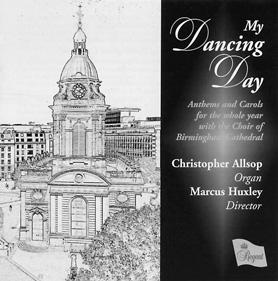
unclear. Nor should one overlook a baker’s dozen of good lay clerks. The choir’s versatility is impressive in the whole gamut of musical styles from the Eton Choir Book and Josquin via Sheppard, Byrd, Schütz, J. S. Bach, S. S. Wesley, Gray and Bairstow to Philip Moore, Andrew Carter and the late John Sanders (The Reproaches and a splendid festival anthem commissioned for the Cathedral for the Millennium Year). This musical mystery tour begins in sparkling fashion with My Dancing Day by the Swiss composer Carl Rütti, just as much fun as the familiar version by John Gardner, whose cheeky The Holly and the Ivy, sung by boys and girls together, brings us back to Christmas in quite uproarious fashion at the end of the disc. Not to be missed!
Timothy Storey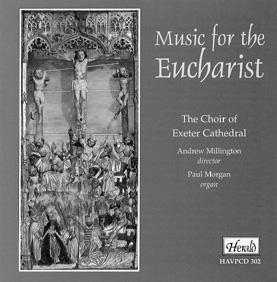
Caesar Missa Brevis; Couperin Offertoire sur les grands jeux; Duruflé Tantum Ergo;Ubi caritas; Day When I survey; Palestrina Ego sum panis vivus; Tallis O Sacrum convivium; Lotti Crucifixus; Millington Missa Alme Pater; Berne Communion; Elgar O salutaris hostia;Ave verum; Stainer All for Jesus; Mawby Alleluia
The Choir of Exeter Cathedral. Director: Andrew Millington. Organ: Paul Morgan. HERALD HAVPCD 302 TT 67:05
I enjoyed this very much. The programme is anchored by Anthony Caesar’s Missa Brevis, written for the Chapel Royal, St James’s Palace and published in 1989, and a more recent (1998) Missa Alme Pater by Andrew Millington, based directly on the plainsong mass. Both are well worth exploring, and both sound fashionably French! Organ music (an Offertoire by Couperin and a Communion by Vierne) and two of Duruflé’s motets continue the French connection; but otherwise, except for a little Lotti and Palestrina, we are firmly in England. Edgar Day’s quite superb but little-known When I survey the wondrous Cross, described by Sir David Willcocks as fully the equal of Parry’s Songs of Farewell, is given an assured and dramatic performance, and we have Thomas Armstrong, Elgar, Mawby, Stainer and Tallis as well. Definitely worth buying.
Timothy StoreyBernstein Chichester Psalms; Bach Jesu, joy; Mozart Ave verum; Fauré Cantique de Jean Racine; Dvôrák Mass in D. Director: Jonathan Willcocks. Organ: Richard Barnes. HERALD HAVPCD 306 TT 66:01

Anthems
Rütti My Dancing day; Wesley With my whole heart; Sheppard In manus tuas III; Nesbett Magnificat; Sanders The Reproaches; The Firmament; Moore It is a thing most wonderful; Carter Agnus Dei; Byrd Christ is risen; Bairstow Let all mortal flesh; Schütz I am the resurrection; Deering Duo Seraphim; Vierne Hymne au soleil; des Préz Mirabiles elations maris; Gray What are these that glow from afar?; Bach Suscepit Israel; Gardner The holly and the ivy Birmingham Cathedral Choirs. Director: Marcus Huxley. Organ: Christopher Allsop. REGENT REGCD215 TT 79:34.
What a feast of novelties, and so well performed! Both boys and girls sing on this recording, and how delightful that their natural vocal qualities have not been trained out of them: Birmingham’s girls sound like girls, praise be, and the boys make a strong, mature and satisfying sound, even if their words are sometimes
This is a veritable curate’s egg. Of the Chichester Psalms, given in the original scoring for organ, harp and percussion, the first section is pedestrian in the extreme but the second more than redeems the situation with an excellent counter-tenor soloist in Psalm 23 (Stuart Conley-Harper, a lay vicar of Chichester Cathedral) and a truly menacing Psalm 2 Why do the nations so furiously rage together, as good a performance as I have ever heard of this notorious tonguetwister. The mellifluous final section of the Psalms is equally pleasing, but then the rot sets in, with lack-lustre Bach (Jesu, joy of man’s desiring), Mozart (Ave verum) and Fauré (Cantique de Jean Racine) the prelude to a performance of the Dvôrák which scarcely seems to be by the same choir that we heard in the Bernstein. Strictly a disc for the choir’s friends and supporters, I fear.
Timothy Storey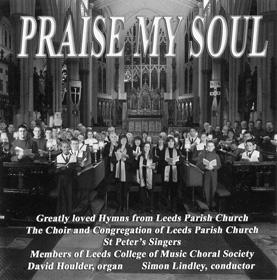
The Choir and Congregation of Leeds Parish Church. St Peter’s Singers. Members of Leeds College of Music Choral Society. Director: Simon Lindley. Organ: David Houlder. FOXGLOVE AUDIO FOX099CD TT63:30
Simon Lindley has celebrated 30 years at Leeds Parish Church this year ➤
and for all of us who work in the city and can see and hear Simon on a regular basis we warmly congratulate him. His style and friendliness, generosity of spirit and sheer enthusiasm for music is, well, just tremendous. The CD is produced for the LPC Choral Foundation Appeal, a worthy cause and contains some great hymns which are given the Lindley treatment. All will be loved and with these forces make a laudable reason to go and buy it. That said some of the accompaniments could have been more exciting. But the energy of the singing is a great selling point. So with everything weighed up let’s all buy a copy to support the Appeal. Leeds would be a poorer place without Simon Lindley and his musical team.
Andrew Palmer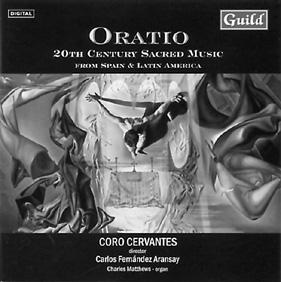
Coro Cervantes. Director: Carlos Fernández Aransay.
Organ: Charles Matthews.
GUILD GMCD 7266 TT 74:54
‘In Spain, during the twentieth century, the figure of the professional church composer (attached to a music chapel and frequently acting as teacher, organist and singer) gradually disappeared. Subsequently every personal effort to write quality sacred music was an islet in the ocean of amateur or, even worse, canned music.’ Despite his rather pessimistic summary, Carlos Fernández Aransay has been able to assemble a fascinating programme of music in varied styles and of uniformly high quality. Many readers will already know the setting of O vos omnes which Pau Casals wrote in 1932 for the monastery of Montserrat in Catalonia (a source of inspiration for other composers included here); and organists may have come across the Final para gran órgano by the Basque organist-composer Jesús Guridi, who is also represented by a mellifluous Tantum ergo; but all else is unknown territory. The Spanish Civil War of 1936-39 silenced some composers and drove others into exile: similarly some Latin American artists took refuge in the USA after World War II, notably Alberto Ginastera with whose Lamentations of Prophet Jeremiah the programme begins. The most recent works are grouped together at the end, a rather horrid organ piece by Xavier Montsalvatge (1912-2002), two motets from 1964 by Anton García Abril (b. 1933) and, last and most recent, Speculum in aenigmatem by César Cano (b.1960) which won 1st prize in the Juan Bautista Comes competition in 1997. I recommend this recording without reservation: it is of unusual interest, and performances are excellent throughout.
Timothy StoreyCity of Birmingham Symphony Chorus and Orchestra. Director; Michael Tippett. Soprano: Faye Robinson. Mezzo-Soprano: Sarah Walker.
Tenor: Jon Garrison. Bass: John Cheek. Chorus Director: Simon Halsey. NAXOS 8.557570 TT69:19
In this, the centenary of Tippett’s birth and the liberation by the Red Army soldiers on January 27, 1945, of prisoners at Auschwitz, this is a poignant release.
Tippett was one of the most gifted and inspiring figures of 20th century British musical life. This oratorio, written at the beginning of the second world war as an expression of ‘man’s inhumanity to man’, has become one of his most widely known works. This unique recording was conducted by the composer when he was 85. I remember hearing an electric performance of the work at the Proms, when at the end, following the last spiritual Deep River the Albert Hall remained unusually quiet for what seemed ages before applause. This recording has the same effect: whether it is because the conductor is Tippett, or the 60th anniversary of the liberation of Auschwitz, it is a good recording. The quartet of soloists are on top form, as is the chorus whose excellent contribution is something to savour on this CD. As the final chorus ends one can’t help pondering on a tumultuous 20th century and the many victims of oppression. Powerful musical interpretation.
 Andrew Palmer
Andrew Palmer
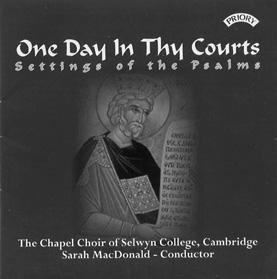
Poulenc Exultate deo; Howells Behold, O God; Tallis Miserere nostri; Rameau Laboravi clamans; Mendelssohn Richte mich, Gott; Purcell O God, thou art my God; Berkeley The Lord is my shepherd; Guerrero Usquequo, Domine; Palestrina Super flumina Babylonis; Greene Lord, let me know mine end; Schütz Jauchzet dem Herren; Creese In manus tuas; Sumsion They that go; Britten Deus in adjutorium meum The Chapel Choir of Selwyn College, Cambridge. Director: Sarah MacDonald PRIORY PRCD 821 TT 73:42
This is an anthology of psalm-settings from many lands and centuries, compiled with great thought and resourcefulness, taking the listener from Tallis and Guerrero via Purcell, Schütz, Rameau, Greene and Mendelssohn to the twentieth century (Poulenc, Sumsion, Berkeley and Britten) with only the late Victorians and Edwardians ignored: there is chant both Orthodox and Anglican, and a recent (2000) essay in the fashionable minimalist style of Tavener and co., by the Canadian David Creese. This is very well sung, possibly the best thing in the programme, for sadly the performances for the most part remain resolutely earth-bound: the choir’s intonation is suspect at times, and there is some unattractive soprano tone, while speeds are on the slow side, with Miserere nostri (Tallis) grotesquely sluggish, and even Sumsion’s entertaining They that go down to the sea in ships curiously dull. This disc is possibly worth buying for the content but I cannot really recommend the performances.
Timothy Storey
Christ Church Cathedral Choir, Oxford. Director: Stephen Darlington. Organ Clive Driskill-Smith. GRIFFIN GCCD 4047 TT 63:00
This is a very polished production, to which it is a pleasure to listen. Your reviewer detected some funny vowel sounds, ‘anthem’ coming out as ‘unthem’ for example, but even the very best choirs are not perfect! Some hymns are sung by the men alone, with unusual and pleasing effect, and several others are subjected to the minimum of interference: some, alas, are given the full Hollywood treatment, with Howard Goodall’s assault on Rockingham (When I survey the wondrous Cross) particularly regrettable, even if Darlington does choose to claim that it ‘evokes the mystery of the text with delicate textures and rich harmonies!’ Amazing Grace, Jerusalem, Morning has Broken –they’re all there, but so are other, less hackneyed hymns, even including Nkosi Sikelel’ iAfrica. In all, this is very much better than most such recordings, and well worth your attention.
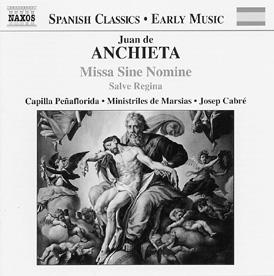 Timothy Storey
Timothy Storey
Missa Sine Nomine; Salve Regina. Capilla Peñaflorida. Organ: Loreto Fernández Imaz. Ministriles de Marisas. Director: Joseph Cabré. NAXOS 8.555772 TT67:23
This is what I would term a very ‘atmospheric’ disc. Imagine the interior of a vast cathedral in Spain celebrating mass in the early 1500s with the whole caboodle: thick clouds of incense, bells, psychedelic vestments, silver candlesticks and golden chalices and all the trimmings of high ceremony. The music comes in the form of an instrumental quartet of cornett, shawm, sackbut and dulcian and some very fine singing from Capilla Peñaflorida. The main item in the programme – a mass written by Juan de Anchieta (1462-1523), one of the foremost Spanish composers of the time – has beautiful polyphonic writing, with contrasting moments of plainsong and the mass itself is interspersed with other, shorter pieces (including for instruments only) by some of Anchieta’s contemporaries, so that the programme takes on the feel of one huge liturgical ceremony. The singing has great vitality, and the instruments add real bite and colour to what is at times rombustious, almost secular-like music.
Martin Wolf
Poulenc Laudes de Saint Antoine de Padoue; Quatres petites prières de Saint François d’Asise; Biebl Ave Maria; Walker Lord thou hast been our refuge; I will lift up mine eyes; Tomkins The Heavens declare; O how amiable; Sumsion Magnificat & Nunc Dimittis in G; Moore Magnificat & Nunc Dimittis in G; Wills By the waters of Babylon; Tallis Lamentations of Jeremiah
The Gentlemen of St John’s College, Cambridge. Director: Christopher Robinson. Organ: Jonathan Vaughn. PRIORY PRCD 814 TT 73:59

Gone are the days when a ‘men only’ service was something to be shunned by sensitive worshippers, and here we have a satisfying anthology framed by Poulenc’s Laudes de Saint Antoine de Padoue and Quatre petites prières de Saint François d’Assise, with anthems by Biebl, Tomkins, Ernest Walker and Arthur Wills in between, together with the Tallis Lamentations and settings of the Evening Canticles by Philip Moore and Sumsion, both in G. The booklet sees fit to inform us that the Sumsion is not the familiar full-choir setting notorious for a phrase reminiscent of ‘Have a banana’ but fails to include the equally useless information that the opening of his Magnificat for men’s voices sounds somewhat like ‘Fry’s Turkish Delight’! The singing is never less than good, particular highlights being the two Poulenc settings and Walker’s magnificent, gloomy, Brahmsian Lord, thou hast been our refuge; but there are depths in the Tallis which these performances fail to discover.
Timothy StoreyThe King’s Consort & Choir. Tölzer Knabenchor. Director: Robert King. Matthias Ritter; Manuel Mrasek; Matthias Schloderer; Maximillian Fraas; Anthony Rolfe Johnson. Michael George. HYPERION CDD22051 TT 110:20

Duruflé Quatre Motets. Langlais Messe Solennelle Haileybury Chapel Choir. Director: Peter Davis. Organ: Derek Longman.

REGENT REGCD203 TT 57:10
Making a successful recording of works which include Duruflé’s Quatre Motets and Langlais’s Messe solennelle for a well-known CD label is no mean feat for any professional choir. But a school choir? Haileybury School Chapel Choir bravely decided to take up the challenge, and the result left me with mixed feelings. The sopranos and altos blend superbly, producing a clear, focused sound. This is, alas, in stark contrast to the tenors and basses, whose young voices lack maturity and some control, and in their higher register the tenors in particular have difficulty shrugging off intonation problems. This Fauré Requiem with its rushed tempi and occasionally cumbersome organ registration left me unmoved but the other more demanding works have some fine moments.
Martin WolfIn the presence of Our Lord
Laloux O Salutaris hostia; Tantum ergo; de Séverac Tantum ergo; Handl Adoramus te; Victoria Jesu dulcis memoria; O Sacrum convivium; Mawby Jesu dulcis memoria; Palestrina Pange Lingua;Ergo sum panis vivus; Charpentier Pange Lingua; Gounod Ave verum; Milani Ave verum; I Arauxo Lauda Sion; Hassler Surrexit pastor bonus; Ives O Sacrum convivium; Elgar O salutaris hostia; Croce In spiritu humilitatis
The Choir of the London Oratory. Director Patrick Russill. Organ: John McGreal. HERALD HAVPCD 298 TT 60:10
This is such a rich feast that one may do well not to attempt to enjoy it all in a single session. The programme is divided into seven sections, Devoutly I adore thee, No thought so sweet, At the last great supper, On the cross of men, Risen Lord and Shepherd true, Bread of angels, bread for man and We this Sacrament revere, each containing settings of appropriate texts. There are four Gregorian chants and no fewer than eighteen motets, predominantly of the continental Renaissance and by no means all well known, though there is also an admixture of Elgar, de Séverac, Gounod, Grayston Ives and Fernand Laloux (choirmaster at the Jesuit Church, Farm Street 1928-67). The performances are of the quality one would expect from this famous choir, and I strongly recommend this recording; by way of a bonus, your purchase will help to support a Catholic charity, Aid to the Church in Need.
Andrew PalmerFor all of you who love the purity of boys’ voices then this disc is a must. Robert King’s B Minor Mass is a real treat with a distinctive sound from the Tölzer Knabenchor. The woodwind are particularly glorious in this interpretation as are the choir, never so more in evidence than the Dona nobis pacem. When they come in the outburst of the chorus is thrilling. Every project King tackles is marvellous and here he has a feel for the tempi of one of the greatest works in the history of classical music. In this recording he uses boys as soloists instead of sopranos and altos. Their contribution may be seen by some as disappointing but believe me it is so refreshing. Take for example, Maximillian Fraas in the Agnus Dei, it is so good. Although, there are times when the boys don’t seem to have the endurance to continue and flag a little nevertheless the clarity of tone is clear-cut. Hyperion’s ability to pick out the finest of its back catalogue is exceptional. This CD is an inspired choice. Quite frankly a special recording and well worth adding to your collection as I bet you won’t have another disc with boy voices singing the solo parts.
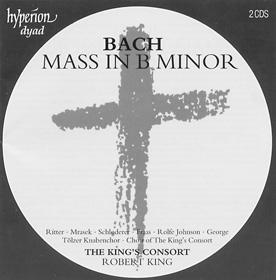
St Asaph Cathedral
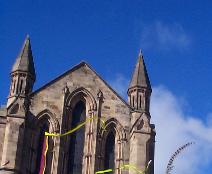
North Wales International Music Festival
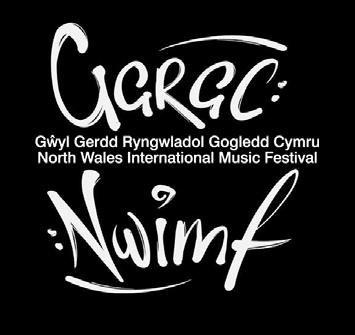
September 17th – 24th
Hexham
BBC NOW • Catrin Finch
Voices of Classic FM • The Sixteen Thomas Trotter, and many more.
Box Office: 01745 584508
heather@northwalesmusicfestival.co.uk
www.northwalesmusicfestival.co.uk
Timothy StoreyAbbey Festival 16th-24th
Hexham Morality Plays
Daughters of Elvin
AcousticTriangle
London Sinfonietta
MICHAEL HAYNES & HUGH MORRIS Widor Organ Symphonies
The Samling Foundation Concert
CANDLELIGHT CONCERT:
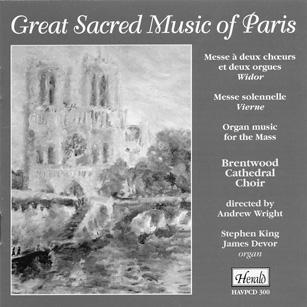
Widor Messe à deux choeurs et deux orgues; Vierne Messe Solennelle; Lanquetuit Toccata; Dubois Fiat Lux.
Brentwood Cathedral Choir. Director: Andrew Wright. Organ: Stephen King & James Devor. HERALD HAVPCD 300 TT68:07
Celebrating its 21st birthday this year, Brentwood Cathedral Choir – all 43 of them here! – certainly has the resources to tackle both works but at times sounds strained in the louder moments and elsewhere the tenors are sometimes prone to sing shy of the note. But this is a pleasant enough recording, and the organ accompaniments and solo organ items are superb. Widor’s only Mass is more majestic than adventurous in its harmonic language compared to the chromatic Messe solennelle, but the Agnus Dei – cue off-note tenor moments – is a very satisfying, lyrical piece of writing. The disc ends with Dubois’ sparkling organ voluntary Fiat Lux
Martin WolfStanford Justorum animae;Coelos ascendit hodie; Beati quorum via; A Song of Peace; Pray that Jerusalem may have peace; Magnificat & Nunc Dimittis in A; For lo, I raise up; Elgar Light of the World; Seek him that maketh the seven stars; Doubt not thy Father’s care; The Spirit of the Lord; Give unto the Lord
Manchester Cathedral Choir. Director: Christopher Stokes.
Organ: Jeffrey Makinson. LAMMAS LAMM 163D TT 64:06
I.A.P.S.
C.S.A.
Pre-Preparatory and Preparatory Day and Boarding School for Boys and Girls 3-13 years.
•High quality education and traditional values.
•Co-educational policy within a prep school environment.
•Opportunities for boy choristers to sing in St.George’s Chapel.
•Five day academic week with flexible boarding arrangements.
•Purpose built and equipped Nursery and Pre-Preparatory Department.
•Extensive playing fields and heated indoor swimming pool.
•Secure environment for pupils within the Home Park.
VOICE TRIALS
For Boys (7 1/2 – 91/2 years old)
November 2005
Open Auditions will be held for Choristerships (worth up to 50% of the school fees, plus one award of 100%)
J.Roger Jones,Head Master
St.George’s School,Windsor Castle
Berkshire SL4 1QF
Tel:01753 865553Fax:01753 842093
e-mail:enqs@stgwindsor.co.uk
Website:www.stgwindsor.co.uk
Like the solo organ disc from Christopher Stokes, this recording which couples Stanford with Elgar is successful. There is a good balance between large scale works and smaller, and lesser known music. It is a shame that Great is the Lord was not added to this fine list. The choir sings with an unusually expressive tonal vocabulary, as well as with dynamic variation, which makes it distinctive from other choirs which might have recorded this repertoire. Jeffrey Makinson’s organ accompaniment is exemplary in every way; listen out for the orchestral tuba in the Magnificat! The mixed line of trebles give a good account of A song of peace, followed by its partner, Pray that Jerusalem. The sound from the choir in this is more like that of a small chamber choir than what you might expect from a traditional cathedral choir. The whole thing is very refreshing.
 Stephen Power
Stephen Power
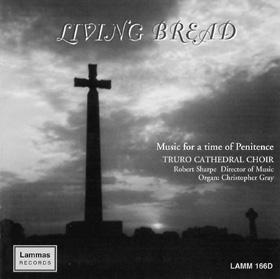
Wesley Wash me thoroughly; Palestrina Ego sum panis vivus; Mendelssohn Hear my prayer; Allegri Miserere mei, deus; Battishill O Lord look down from heaven; Walton A Litany; Lobo Versa est in luctum; Wise The ways of Sion do mourn; Franck Panis Angelicus; Finzi Lo, the full. Truro Cathedral Choir. Director: Robert Sharpe. Organ: Christopher Gray. LAMMAS LAMM 166D TT 71:59
What a fine choir this is! There is an unusually good set of men (a mixture of lay clerks and choral scholars) and the boys’ singing is confident, mature and full-toned, even if their words are not always as clear as one could wish. There is an enviably good supply of capable soloists for Allegri’s famous Miserere, Mendelssohn’s Hear my prayer and (a welcome rarity) Michael Wise’s classic The ways of Sion do mourn with its extensive bass and treble duets, hard to bring off but balanced to perfection here. SS. Wesley, Palestrina, Lobo, Franck and Battishill make up the remainder of the programme, with Finzi’s Lo, the full, final sacrifice a substantial finale which allows us to hear the full resources of the magnificent ‘Father’ Willis organ. Well worth buying.
Timothy Storey
Shephard And when the builders; Magnificat & Nunc Dimittis; Bruckner Locus Iste; Brahms How lovely are Thy Dwellings; Rose Lord I have loved; Bridge Adagio in E; Dove Seek Him that Maketh the Seven Stars; Lole A Song for Mary; Halls Te Deum; Jackson Prelude on ‘East Acklam’; Harris Holy is the True Light; Williamson Dignus est Agnus; Lloyd View me, Lord; Parry I was glad Salisbury Cathedral Choir. Director: Simon Lole. Organ: David Halls. GRIFFIN GCCD 4046 TT 61:47
There are the usual old stalwarts (Locus iste, How lovely are thy dwellings, I was glad), but several novelties to tempt the discerning collector. Most of the music is by present and former Salisbury musicians, from Bernard Rose to Richard Lloyd, Richard Shephard (And when the builders and a setting of the Evening Canticles in memory of Lionel Dakers, who lived in the Close after his retirement from the RSCM), Simon Lole and David Halls. There is a striking and inventive setting of Seek him that maketh the seven stars by Jonathan Dove, and Malcolm Williamson’s Dignus est Agnus, long a Salisbury favourite. Both boys and girls sing on this recording, though some detective work is required to work out who does what. A good recording, of more than merely local interest.
Timothy StoreyJohn Scott plays the organ of St Paul’s Cathedral. Organ Sonata in C minor; Fantasie Choral No 1; Five Short Pieces.
HYPERION CDA67470 TT 71:50
If you only pick one CD from this selection of reviews in this edition, pick this one. John Scott has a reputation as a performer and recording artist par exellence. If you have never heard of Percy Whitlock, you have not experienced the fusion of the greatest British light music and that of Rachmaninov. That this is John Scott’s choice for his final recording from St Paul’s is even more significant. He and Hyperion have left the very best until last.
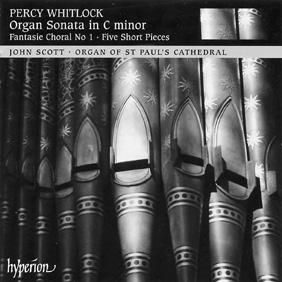 Stephen Power
Stephen Power

John Kitchen (JK) and John Butt (JB)
Shettleston Old Parish Church (JK) – Mendelssohn Sonata in C minor; Parry Hymn tune preludes: Melcombe Rockingham;
Partick Methodist Church (JK) – Jackson Palladium in E; Leighton Hymn tune preludes: Lumetto; Rockingham; Smart Allegro assai in C; Dennistoun Blackfriars (JB) – Vierne Feux Follets; Carillon de Westminster; Concert Hall, University of Glasgow (JB) – Bach Pastorella in F; Tomkins A Fancy (JB & JK);
St Margaret’s, Knightswood (JK) – Bach Four Orgelbüchlein chorales;Wesley
Voluntary in G minor;
St Bride’s Episcopal Church, Hyndland (JB) – Brahms Herzlich tut mein verlangen; Karg-Elert Nun freut dich sehr; Nun danket alle Gott DELPHIAN DCD 34032 TT78:32
Here Johns Kitchen and Butt demonstrate the versatility and beauty of six twomanual and pedal instruments, some of which have their roots in the earliest days of organs in the Church of Scotland. Even though some have very modest proportions, the programme presents many popular pieces from Tomkins’s Fancy for two to play to Leighton’s Hymn Preludes. Each piece shows off the fine voicing by well-known British firms with instruments by Hill, Lewis and Willis, which are heard alongside other contemporary examples. The overall programme is not in any way compromised by the large number of shorter pieces. The booklet gives details of the history and present specifications of the instruments, as well as concise notes about the works played. All are clearly recorded, and the disc should appeal to both the gift shops of the churches concerned and the national record shop market with equal measure.
Stephen Power
Philip Scriven plays Lichfield Cathedral Organ. Ives Variations on ‘America’; Bonnet Elves; Franck Prélude, Fugue et Variation; Vierne Scherzo (Symphony 2); Preston Alleluyas; Lindberg Gammal Fäbodpsalm; Messiaen Transports de joie; Langlais Cantilène; Gowers

An Occasional Trumpet Voluntary; Barber Adagio for Strings; Alain Litanies; Duruflé Prélude et Fugue sur le nom d’ Alain; REGENT REGCD 210 TT 76:01
The recently restored organ of Lichfield Cathedral together with the playing of Philip Scriven is a red-hot combination. The electrically charged programme is
also another good reason why I have listened to it again and again. One of the distinguishing features of the programme is the inclusion of Duruflé’s Prelude & Fugue sur le nom d’Alain, preceded by Alain’s own composition, (Litanies) from which Duruflé quotes. Oskar Lindberg’s offering clearly has its roots in the Swedish folk tradition, and makes a welcome appearance in this strongly French-influenced programme. Ives and Barber represent the USA, and there are pieces of great energy by Patrick Gowers and Simon Preston representing living British composers. I highly recommend this disk.
Stephen PowerTimothy Bond plays the organ in the Church of St Wolfgang in Schneeberg, Germany.
Britten Prelude & Fugue on a Theme of Vittoria; Voluntary on Tallis Lamentation Prelude to They walk alone; Village Organist’s Piece; Tippett Preludio al Vespro di Monteverdi; Lambert Organ Mass; Howells Master Tallis’s Testament; Vaughan Williams Three Preludes on Welsh Hymn Tunes REGENT REGCD205 TT 58:50

Save for Howells, none of the composers on this disc is particularly known for his musical contribution to the organ. Just when you thought Britten’s entire organ output could be written on the back of a beer mat – in very large print –three more works turn up. Like the better-known Prelude and Fugue on a Theme of Vittoria, they are from his earlier years, recently unearthed and premièred here. They’re not a major contribution to the organ repertoire, although Village Organist’s Piece has a pensive, mysterious air which is appealing. The Jehmlich organ (1998) has a magnificent baroque feel about it, so it’s odd hearing Master Tallis’s Testament played in such a classical manner. This is touched upon in the sleeve notes, but it’s still hard to ignore, and there are some abrupt switches in registration which, for me, render it stodgy. The organ seems far happier in John Lambert’s Organ Mass. Nodding towards Boulez and Stockhausen’s earlier music, its playful rhythms and colouristic effects exploit the instrument to the full, and make for interesting – if challenging – listening.
Martin WolfComplete Organ works played by David Goode on the Klais Organ at Bath Abbey. The major works based on chorales.
Three CD set HERALD HAVPCD 301.
TT Disc 1 75:53 Disc 2 76:34 Disc 3 56:09
For many of us, the mere thought of committing all Reger’s organ works to disc would probably be enough to induce palpitations. It is a mammoth task but one which David Goode has undertaken with apparent ease. This triple CD set, the first volume of the series, contains all the organ works based on chorales, and opens with the magnificent Ein Feste Burg. The Bath Abbey instrument relishes these fiery moments, but is equally effective in the quieter Choralvorspielen such as Christ ist erstanden von dem Tod. It was recently rebuilt by Klais, who have done a fine job of blending earlier pipework with their own (which makes up about half the instrument). David Goode’s playing conveys a sure sense of flow, spontaneity and formidable technique, all bathed in the Abbey’s wonderful acoustic.
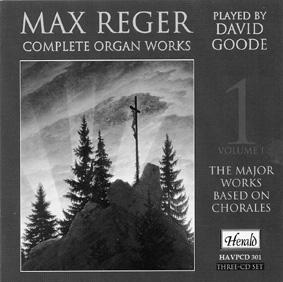 Martin Wolf
Martin Wolf
Gillian Weir plays the organ of Aarhus Cathedral, Denmark. Livre Du Saint Sacrament.
PRIORY PRCD 925/6 TT CD1 65:46 CD2 75:43
Gillian Weir’s reputation as an interpreter of Messiaen’s music towers over many of her contemporaries. There’s something unique about the mutual respect which can exist between composer and performer, and to the list of examples – Britten and Pears, Elgar and Menuhin spring to mind – must be added Messiaen and Weir. When examples of such collaboration are recorded for posterity it is even more exciting: perhaps there’s something reassuring about listening to a concerto performed by somebody its composer respected – a feeling that it’s the ‘definitive article’ maybe. After all, if Messiaen valued Gillian Weir’s interpretation of his music, it lends a certain authority to what is heard, and she, too, undoubtedly gained an insight into the composer’s personality which few can boast.
A masterpiece of craftsmanship, from its menacing reeds in Les Ténèbres (track 7) to rich ‘chiffy’ flutes, Aarhus Cathedral’s Frobenius organ, the largest in Denmark, is perfect for the part. I leave the rest to the reader, suffice it to say that this disc surely has the tacit approval of the Maître.
Martin WolfGillian Weir plays the Gerald Woehl Bach Organ of the Thomaskirche, Leipzig.

The Eighteen Chorales Fantasia in G; Trio Sonata No4; Prelude & Fugue in B minor and F major.
PRIORY PRCD 800AB TT 134:42
Although the Thomaskirche’s sixteenth-century organ J.S. Bach would have known during his time there as a Cantor no longer exists, it’s easy to believe that he would have approved of the present instrument (heard on this recording).
Built by Gerald Woehl to celebrate the Millennium, it is the fruit of research into various organs and other keyboard instruments of Bach’s time, plus performance practice in the composer’s music, thus giving it a truly authentic personality and making it ideally suited to performance of his music. Gillian Weir communicates a directness and honesty in the music, as well as a vitality which, for example, brings the trio sonata’s intricate counterpoint to life rather than subjecting the listener to an exercise in polyphonic drudgery. The Toccata and Fugue in F is a dazzling, memorable, full-stereo-volume end to the programme.
Martin Wolf
Transcriptions by Samuil Feinberg played by Martin Roscoe.
Prelude & Fugue in E minor ‘The Wedge’; Concerto in A minor; Selected Chorale Preludes.
HYPERION CDA67468 TT90:43
In these times of period performances, piano transcriptions of J.S. Bach’s organ music may raise the odd historically-informed eyebrow. But transcriptions have never sought to recreate historical performances; rather, they offer us fresh insight into the original work (the Concerto in A minor (after Vivaldi) is already a transcription Bach made for organ from Vivaldi’s original instrumental work).
Samuil Feinberg’s transcriptions do just that, lending these familiar organ pieces a new, romantic dimension which captures the essence of the organ’s sense of grandeur but adds a depth of feeling and sense of intimacy unique to the modern piano. They are beautifully played by Martin Roscoe.
Martin WolfJohn Hosking plays the Cathedral’s ‘Father’ Willis. Karg-Elert Passacaglia & Fugue on BACH; Rheinberger Sonata No 8; Reubke Sonata on the 94th Psalm; Hosking Improvisation on the Te Deum REGENT REGCD201 TT 79:40
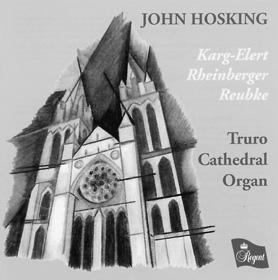
The Truro organ is surely ‘Father’ Willis’s finest cathedral instrument. John Hosking plays an exciting and representative recital of Romantic music with an improvisation of his own as a coda. He makes light of the technical difficulties of the Karg-Elert B.A. C.H., written at the end of the composer’s life. The work is based on an earlier piece for the Kunstharmonium and cost Kerg-Elert much effort to write and even more to play on his concert tour of the USA (1931-2), sponsored by the Willis Organ Company. It has even been suggested that his death in 1933 was hastened by his exertions on the tour. The more familiar Rheinberger and Reubke works are presented with control of registration and appropriate colours, but above all with clarity of texture and rhythm. Karg-Elert, Rheinberger and Reubke were all accomplished pianists and the piano is never far from their keyboard writing. John Hosking’s improvisation is, by contrast, entirely organistic in feeling and exploits the organ in subtly different ways from the composed pieces.
Alan SpeddingRupert Jeffcoat plays organ music from Coventry. Rinck God save the King; Holst Chaconne; Leighton Et Resurrexit; Festing Andante, Allegro, Air & 2 Variations; Hovland Herre GUD! Bitt dyre Navn og AEre; KargElert Dein ist das Reich und die Herrlichkeit; German Shepherds’ Dance; Bairstow Elegy; Hollins A Song of Sunshine; Williamson Vision of Christ-Phoenix REGENT REGCD199 TT 74:12
Rupert Jeffcoat displays the magnificent Coventry Harrison and Harrison in a richly varied programme. There is music here to suit all moods and tastes from the jollity of Rinck’s Variations to the fiery intensity of Leighton’s Et Resurrexit Festing’s Andante, Allegro, Air and Variations, in the arrangement by George Thalben Ball, sparkles with added quasi-Baroque decorations which would have made GTB smile. The imaginative textures achieved in the Hovland Koral Partita and the apocalyptic power of Williamson’s Vision of Christ-Phoenix, written originally for Coventry’s chamber organ and main organ respectively, (but here both played on the main organ) show a fine and resourceful player at one with an equally fine instrument. The recording is close enough for clarity and distant enough for the sound to bloom. An excellent addition to the series.
 Alan Spedding
Alan Spedding

Christopher Herrick plays the organ of St Nikolai, Halmstad, Sweden.
Widor Marche du veilleur de nuit; Franck Prélude, Fugue & Variation; Wesley Andante in E flat; Duruflé Sicilienne; Grace Reverie; Alkan Prière; Sumsion Air, Berceuse & Procession; Guilmant Choral: ‘Was Gott tut das ist wohlgetan’; Liszt Variations on Weinen, Klagen, Sorgen, Sagen; HYPERION CDA67436 TT 78:15
The music on this CD is pleasant and undemanding, as befits its title. As with the other recordings in the series, the organ has been chosen with great care to suit the repertoire. The subtle differences in musical language among the three English cathedral composers is handled sensitively and Christopher
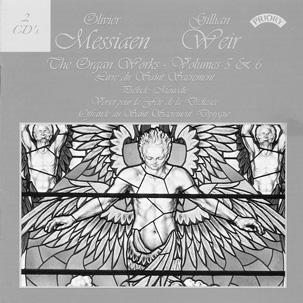
Herrick manages to make the Halmstad organ (2003 Pels & van Leeuwen) sound idiomatically English. The most substantial piece, Liszt’s Weinen’ Klagen variations is saved until last and is given an authoritative reading. Only Widor’s rather trite Marche (based on Bach’s wake-up call Wachet auf) seems out of sympathy with the overall theme of the programme. The recording is up to the high standard consistently achieved in Herrick/Hyperion collaborations and the programme will appeal to all those who have enjoyed the first three in the Organ Dreams series.
Alan SpeddingChristopher Stokes plays the organ of Manchester Cathedral
Elgar Organ Sonata No 1; Pomp & Circumstance March No 4; Stanford Fantasia & Toccata; Six Short Preludes & Postludes.
LAMMAS LAMM 160D TT 66:53
Chris Stokes has picked a programme to display the tonal quality and expressive power of the Manchester Cathedral organ. The programme really does sell itself, and the organ, though not terribly well known, bears a striking resemblance to that in King’s College Chapel, Cambridge, making it ideal for this music. Every sound you would expect to hear in this orchestral music is heard. The rather more unusual Solo French Horn is heard to good effect. Christopher Stokes’s playing is crisp in its precision, and he uses just right amount of rubato. The programme book includes notes written by the organ scholar Tom Bell, together with a succinct history of the instrument, though it is a shame that the Swell division is missed off the stop list. A recording of an instrument in a dry acoustic might put some people off, if you compare this with the well-known recordings of the Sonata, in particular Sumsion at Gloucester (recorded too close?) and Scott at St Paul’s (with those long gaps for the echo), this has the advantage that no detail or sense of momentum is lost.
Stephen Power
Robert Delcamp plays the Stahlhuth/Jann organ at Saint-Martin, Dudelange, Luxembourg.
Prelude & Fugue in E flat major; Three Rhapsodies on Breton Melodies; Seven Improvisations; Adagio from the Third Symphony; Fantasie in E flat major.
NAXOS 8.557285 TT 76:37
This is a fine performance of some of the most wonderful, yet seldom performed organ music. The programme is appealing, though it might have been better to swap the transcription for another of the Preludes and Fugues – they are such marvellous works. The recording will cost you less than £5, so to add another to your collection, whether a Naxos collector or a collector of fine organ music recordings, this will not break the bank.
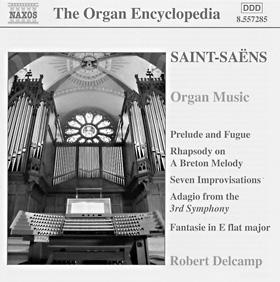
Stephen Power
Robert Crowley plays organ music Alan Ridout at Canterbury Cathedral.
Processions; The Fourteen Stations of the Cross; Easter Fanfare; Dance Suite; Five pieces from Canticle of the Rose.
LAMMAS LAMM161D TT 73:28
For some, the name Alan Ridout may not be quite so familiar as his teachers, Tippett and Howells, but his style is as individual, his compositional output is huge and well worth delving into. Ridout has a strong Canterbury connection, having taught at both the King’s School and at the Choir School. He wrote many choral and organ pieces for Alan Wicks and the
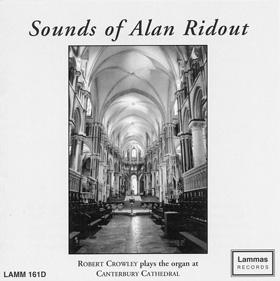
choir at Canterbury Cathedral. Robert Crowley continues his documentation of organ works of one composer on one disc (see also Sounds of Arthur Wills and Sounds of Humphrey Clucas). Most of the music is inspired by the sacred rather than the profane. It is a shame that, due to the sheer volume of music Ridout wrote, we couldn’t hear the whole of Canticle of the Rose. The playing is assured, and the organ, though criticised by many for being a compromise, sounds well in this recording. For those who want to hear more Ridout, I should recommend the recording Alan Wicks made of The Seven Last Words from the EMI Great Cathedral Organ Series (a 1968 recording), now re-released on CD by Amphion as volume 3 of a selection. (PHICD162).
Stephen Power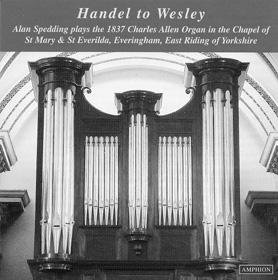
Alan Spedding plays the 1837 Charles Allen Organ in the Chapel of St Mary & St Everilda, Everingham, East Riding of Yorkshire. Handel Concerto on ‘Judas Maccabaeus’; Pieces for Clay’s Musical Clock; Boyce Trumpet Voluntary No 1 in D; Stanley Cornet Voluntary Op VIII No 1; Nares Introduction & Fugue; Hayes Concerto in G; Walond Voluntary XI Op 2 No 5; Hawdon Sonata No IV; Mendelssohn & Wesley Fugue for Dr Mendelssohn; S Wesley Voluntary Op 6 No 9; C Wesley Concerto No 1, 2nd set AMPHION PHICD211 TT 77:30
Anyone driving from York towards Beverley or Hull along the A1079 should certainly divert and visit the chapel where Dr Spedding recorded this CD. As the accompanying book says it is a ‘great surprise’. A grand Italian church with an impressive stuccoed classical exterior almost dwarfs the delightful red-brick Everingham Hall which adjoins. The design of the organ looks back to the 18th century while incorporating some unexpectedly ‘modern’ features. It is conservative in preserving the old English compass with the Great organ extending down to bottom F two octaves and a half below middle C and in having a swell organ whose bottom note is only F immediately below middle C. As for the pedals it has an octave and half of pedal rare in 18th century British organs with its own set of booming pedal pipes. Alan Spedding has chosen a programme to utilize the organ. His playing is accomplished as one would expect and the music dances along. His playing of a piece by one of his Beverley Minster predecessors ably demonstrates the character of the music, which is caught so well, that one is transported back to the 1700s. All the music on this disc is driven with a sound rhythmical sense and the favourites like Boyce’s Trumpet Voluntary are delightful. As with the village, this CD is full of great surprises and well worth buying.
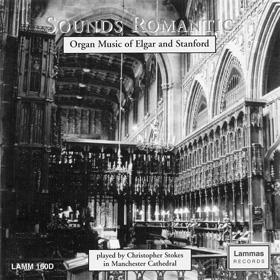 Patrick Mayhew
Patrick Mayhew
The Cathedral Choirs of Chichester, Salisbury and Winchester at worship and in concert
Details from: 1 The Close, Winchester SO23 9LS
E-mail: znm32@dial.pipex.com
www.southerncathedralsfestival.org.uk
Enquiries: 01962 793356 (Fax: 793399)
Registered Charity Number 239593
Alexandra Palace Organ Concerts................................16
Allegro Music..................................................................21
Carlisle International Summer Festival........................13
City of London Festival....................................................2
George Sixsmith..............................................................35
Guild................................................................................46
Harrison & Harrison........................................................8
Hexham Abbey Festival..................................................53
Kings School Gloucester..................................................2
IAO..................................................................................35
International Organ Festival at St Albans....................49
Lammas..........................................................................40
LCM Examinations........................................................28
Makin Organs....................................................................2
North Wales International Music Festival....................53
Following the recent increase in FCM membership, Council has approved the appointment of additional officers to fill the following new positions:
To assist the Treasurer, principally with the financial work relating to the sale of Cathedral Music through retail outlets
To plan and implement a programme to increase the range of merchandise sold by the Society. Prior sales, retailing or marketing experience would be preferable, though central marketing support will be available
To plan and implement a programme to increase the number of retail outlets selling CATHEDRAL MUSIC and other Society publications. Prior sales, retailing or marketing experience would be preferable, though central marketing support will be available
To co-ordinate the upgrade of the Society’s web site, working closely with the website programmer. Responsibilities will include developing a site map and contents list, writing and/or editing copy, inviting people to contribute text and and ensuring a high standard of graphic design. An appropriate level of computer literacy and familiarity with websites are essential, though website programming per se, is not
These positions are entirely voluntary though all expenses incurred will be reimbursed.
For further information please write to the Chairman, Professor Peter Toyne DL at Cloudeslee, Croft Drive, CALDY, Wirral CH48 2JW, or e-mail peter.toyne@tiscali.co.uk
Norwich Cathedral........................................................35
Oxford University Press..................................................59
Regent Records..............................................................59
Royal College of Organists............................................25
RSCM..............................................................................40
Salisbury Cathedral........................................................28
Signum Records..............................................................59
Southern Cathedrals Festival........................................57
St George’s School..........................................................54
St John’s College............................................................35
St Paul’s Cathedral..........................................................22
Three Choirs Festival......................................................47
Viscount Organs..............................................................15
Westminster Abbey Choir..............................................46
FOR CHAIRMAN’S ADDRESS SEE
SECRETARY
Roger Bishton 21 Bradford Rd, TROWBRIDGE, Wiltshire BA14 9AL Tel: 01225 768607 roger@bishton7609.freeserve.co.uk
TREASURER
Anita Phillips, ‘Roseash’, Homefield Lane, Rugby Road, Dunchurch, RUGBYCV22 6QS Tel:01788 816543 anita@rowans.force9.co.uk
PUBLICITY OFFICER & ADVERTISING MANAGER
Roger Tucker 16 Rodenhurst Road LONDON SW4 8AR Tel: 020 8674 4916 roger@cathedralmusic.supanet.com
RECRUITMENT OFFICER
Philip Emerson King’s House, 8 Church Street CUCKFIELD RH17 5JZ 01444 413264 philipemerson@tiscali.co.uk
MEMBERSHIP SECRETARY
Tim Hayward
FCM Membership Department, 27 Old Gloucester Street LONDON WC1N 3XX Tel: 0845 644 3721 (UK local rate) info@fcm.org.uk
FCM ARCHIVIST
Dr Rosemary Smith 60 Russell Road, SALISBURY SP2 7LR
Tel: 01722 321555 rhsmith136@aol.com
PUBLIC RELATIONS OFFICER
Trevor Godfrey Meadow Croft, 12 Spilsbury Close, Old College Park, LEAMINGTON SPACV32 6SW Tel/Fax 01926 831820 trevorgodfrey@onetel.net.uk
SECRETARY FOR NATIONAL GATHERINGS
Peter Smith Paddock House, 7 Orchard View, Skelton, YORK YO30 1YQ Tel: 01904 470 503 PeterSmith@robertpeter.fsnet.co.uk
GRANT SECRETARY
Michael Cooke
MERCHANDISE OFFICER
Joy Cooke
Aeron House, Llangeitho, Tregaron, Ceredigion, Wales SY25 6SU. Tel: 01974 821614 joycooke@aol.om
DR COORDINATOR
Geoffrey Shaw
8 Nightingale Place
BUCKINGHAM MK18 1UF
e-mail: geoff.icf@fsbdial.co.uk 01280 812547 and 823363
Signum Classics are pleased to announce four new releases:

Tenebrae Responsories: Carlo Gesualdo
The King’s Singers
Searingly intense ... beautifully judged Daily Telegraph
The English Organ Sonata: 1937 Bairstow &Whitlock Sonatas Colm Carey - Church of the Ascension &St Agnes, Washington D.C.
Cantos Sagrados: James MacMillan
Elysian Singers dir. Sam Laughton
the most compelling disc -- I’ve heard all year International Record Review
Thomas Tallis: The Complete Works

9 Volume Boxed set Chapelle du Roi dir. Alistair Dixon
Almost touches the visionary Gramophone Magazine

Available from all good record shops or direct from Signum Classics Tel &Fax: 0870 710 6101 www.signumrecords.com
harmonia mundi distribution


Peter Horton
Irascible, truculent, but a brilliant musician. Any of these words could accurately describe Samuel Sebastian Wesley (1810-76), the foremost organist and church music composer of his generation. Peter Horton paints a detailed picture of the life and career of this remarkable man whose output includes such favourites as 'Blessed be the God and Father' and 'The wilderness'.
406 pages | Hardback | 2004 | 0-19-816146-8 | £70.50
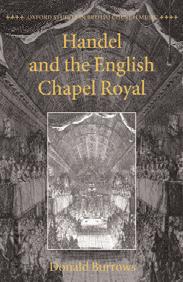
Donald Burrows
This is the first major study of Handel's English church music. It covers well-known works such as Zadok the Priest, but also introduces an engaging but little-known repertory. Handel's Chapel Royal music was the result of a close but changing relationship with Britain's Hanoverian royal family. The story of the political background is complemented by an investigation of the circumstances of Handel's performances.
675 pages | Hardback | March 2005 | 0-19-816228-6 | £85.00
For more information on these titles, please visit our website: www.oup.co.uk/music/books/


